









Daniel Merriam – Walking on Air




Unguided Tour, 1983, Susan Sontag







Picture found here.




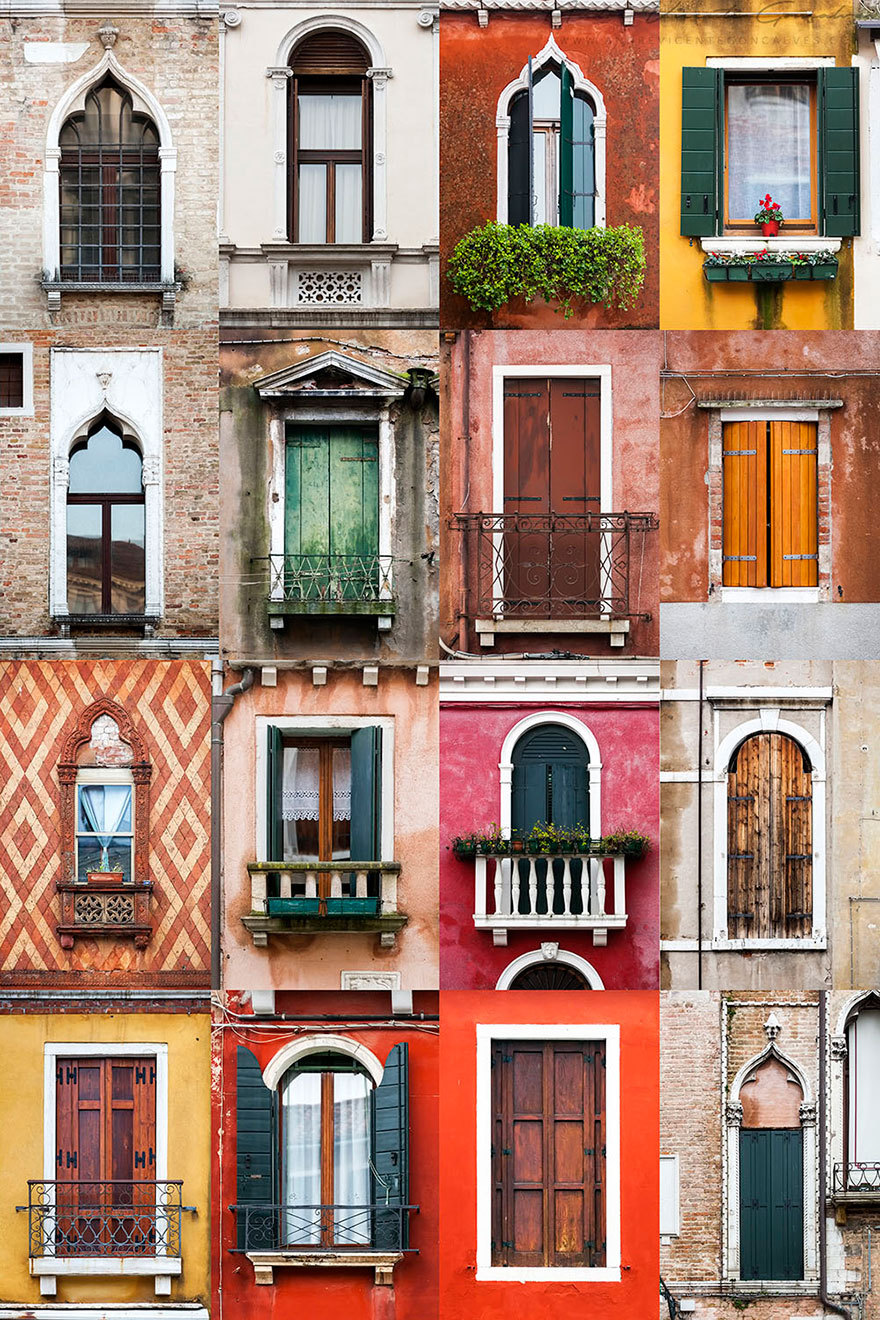
Windows of the World Andre Vicente Goncalves – Venice











Picture found here.



*










Daniel Merriam – Walking on Air




Unguided Tour, 1983, Susan Sontag







Picture found here.





Windows of the World Andre Vicente Goncalves – Venice











Picture found here.



*
These days my senses are ravished by dreams of the East; moss gardens, glowing lanterns and cherry blossom petals carried by the soft spring breeze, exciting Ukiyo-e prints, strange and thrilling music of Toru Takemitsu, old haiku poems… To go along with the theme, of course these gorgeous Lolita dresses caught my attention because they combine the classical Lolita clothes elements; silhouette, cuteness and modest appeal, with the elements of traditional clothes. Wa Lolita is a style of Lolita that combines the classic Lolita style with elements of traditional Japanese clothing (kimono), and Qi Lolita is a very similar style which takes inspiration from the traditional Chinese clothing (qipeo). I love the diversity that Lolita style is capable of and these eye-candy dresses bellow are just a joy to look at, I love the colour palette, lots of red and purple, the intricate patterns, and I love that the head-wear and the accessorize are also inspired by the traditional styles, it just looks stunning all together.
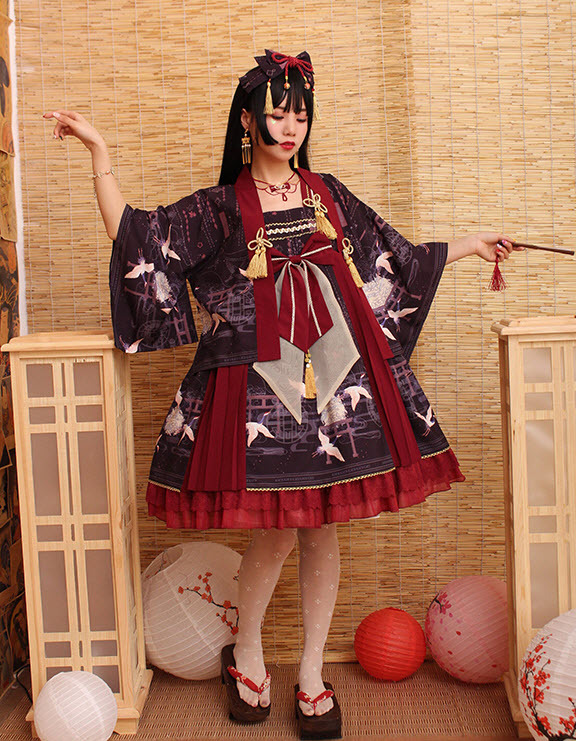
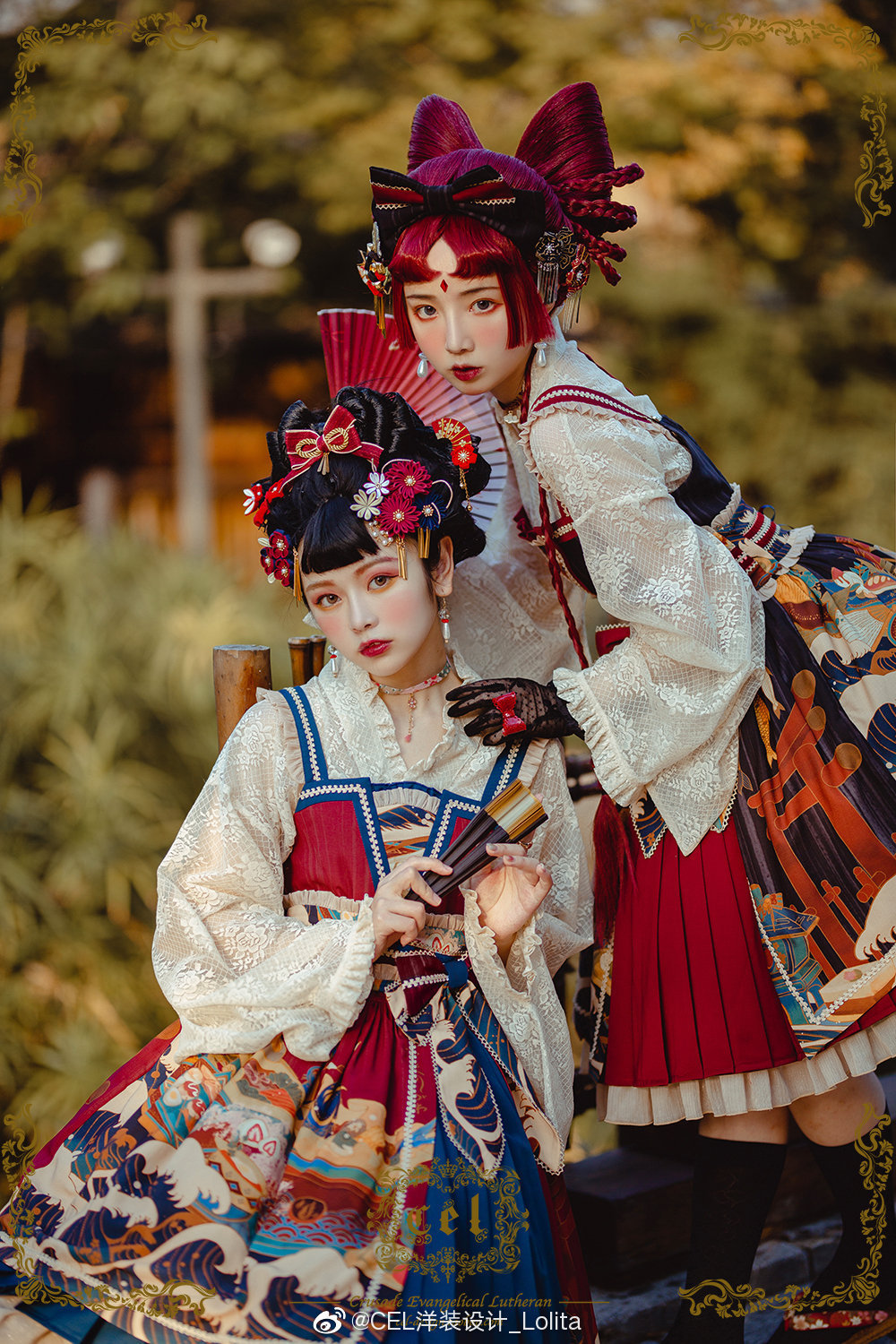
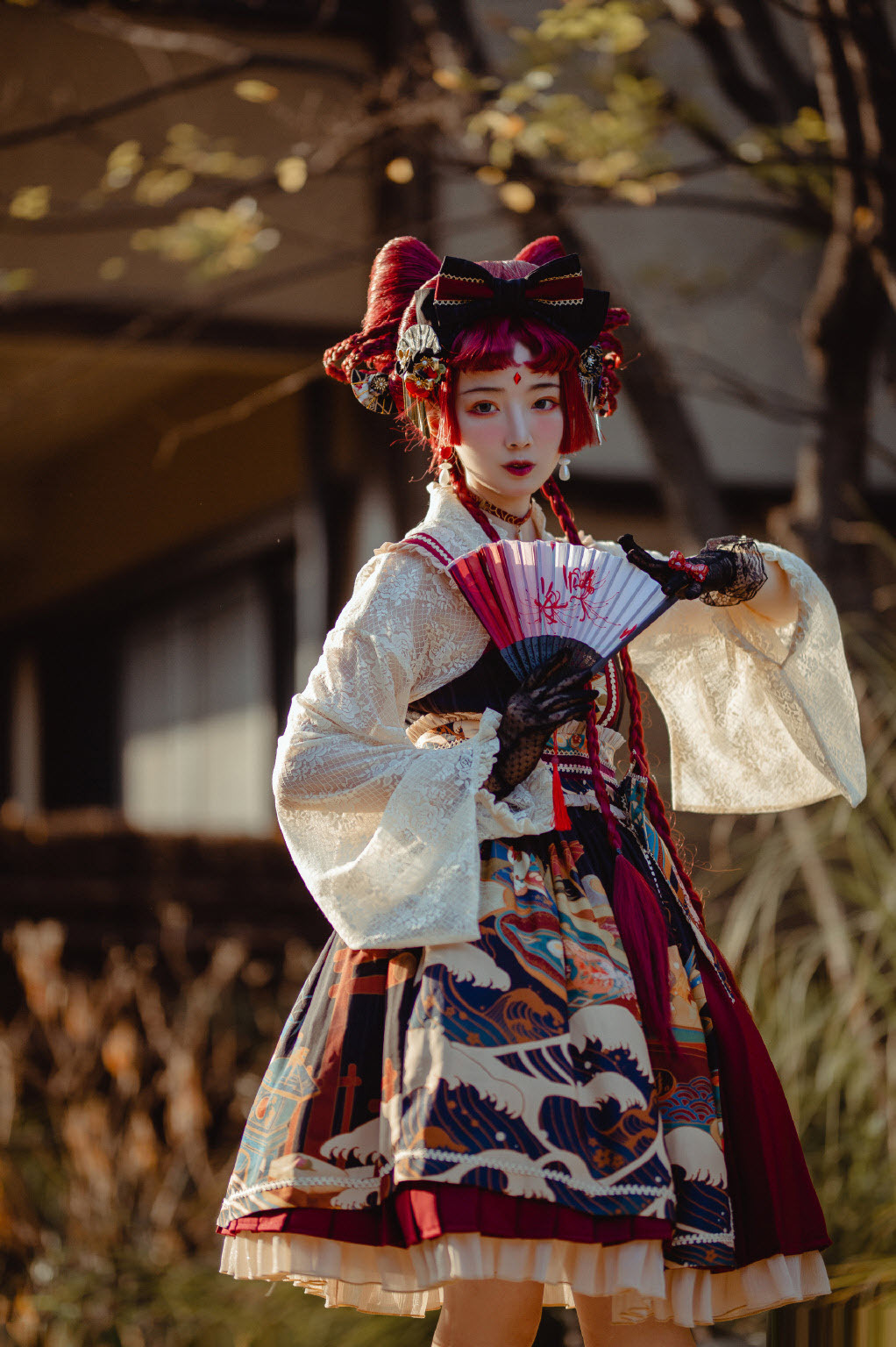
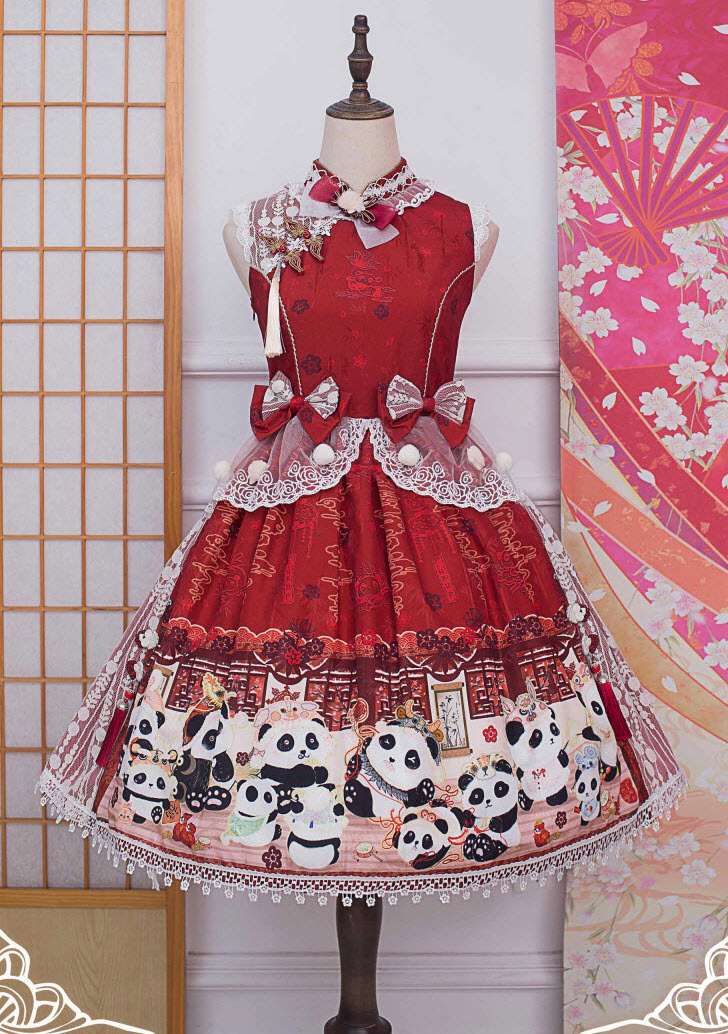
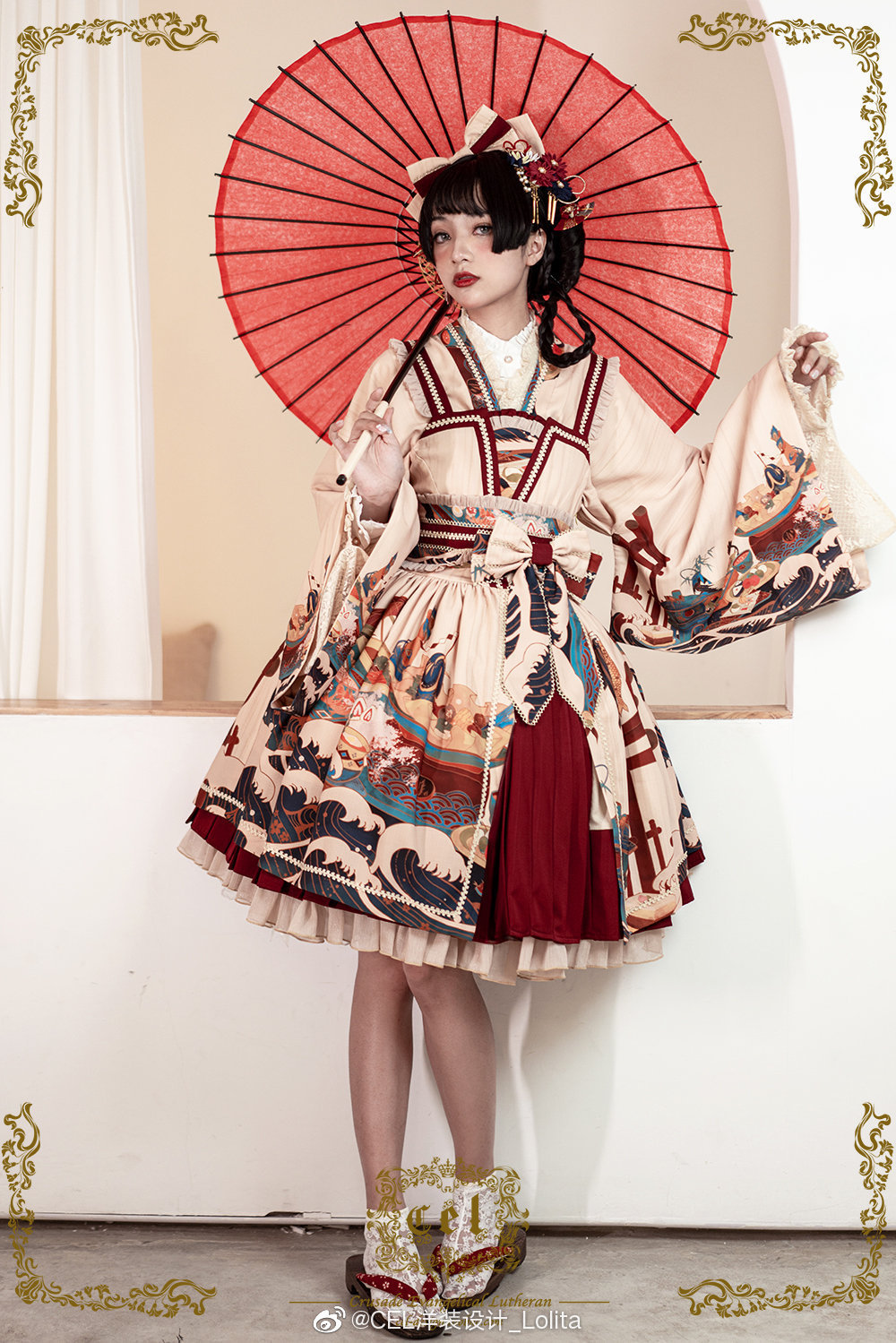
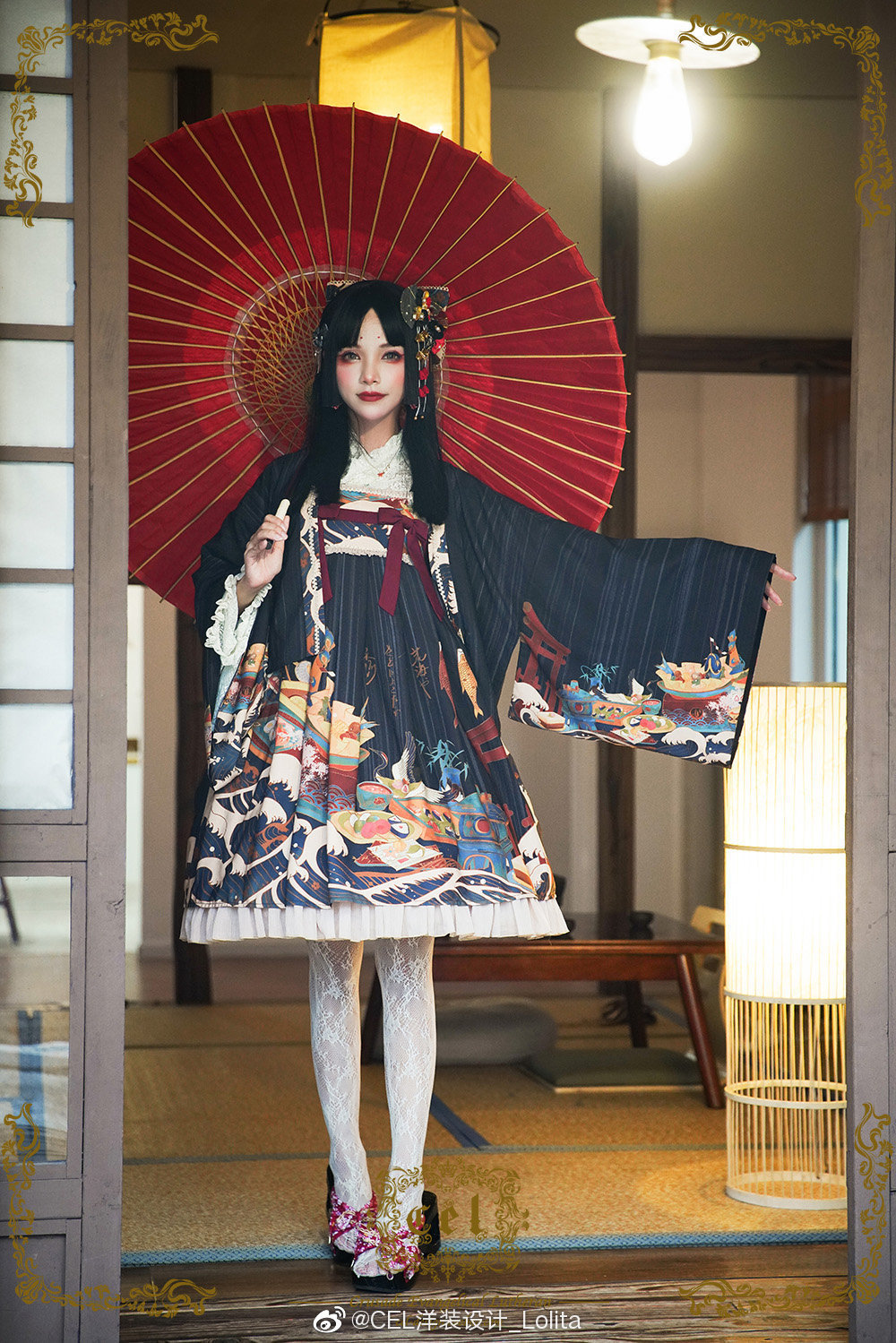
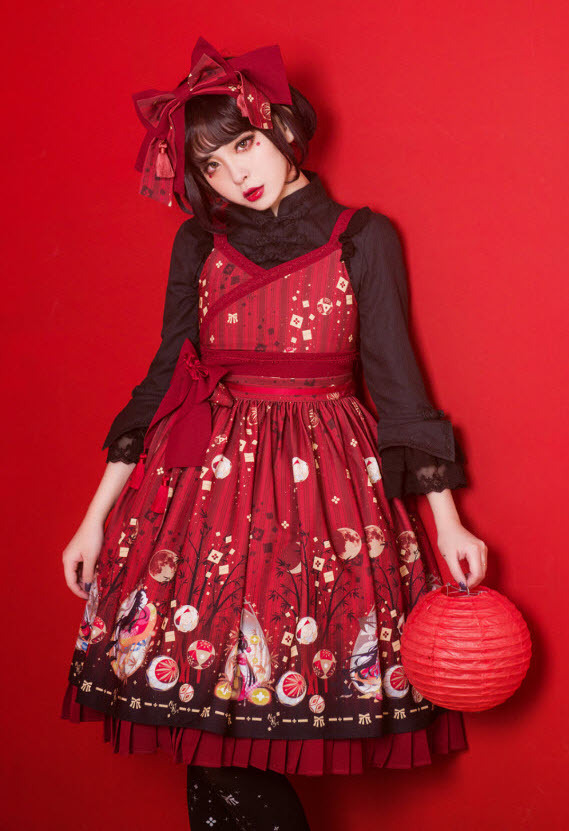
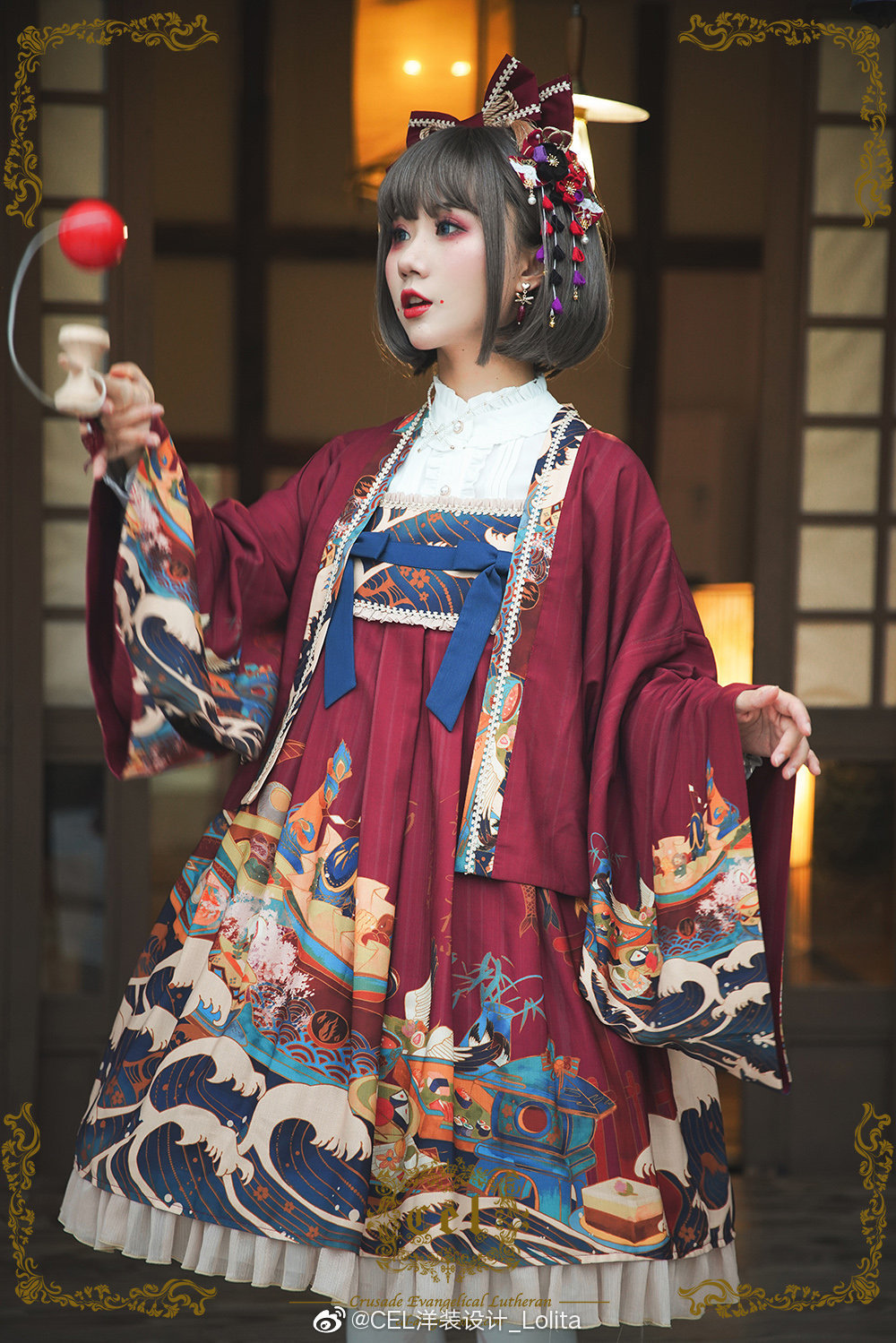
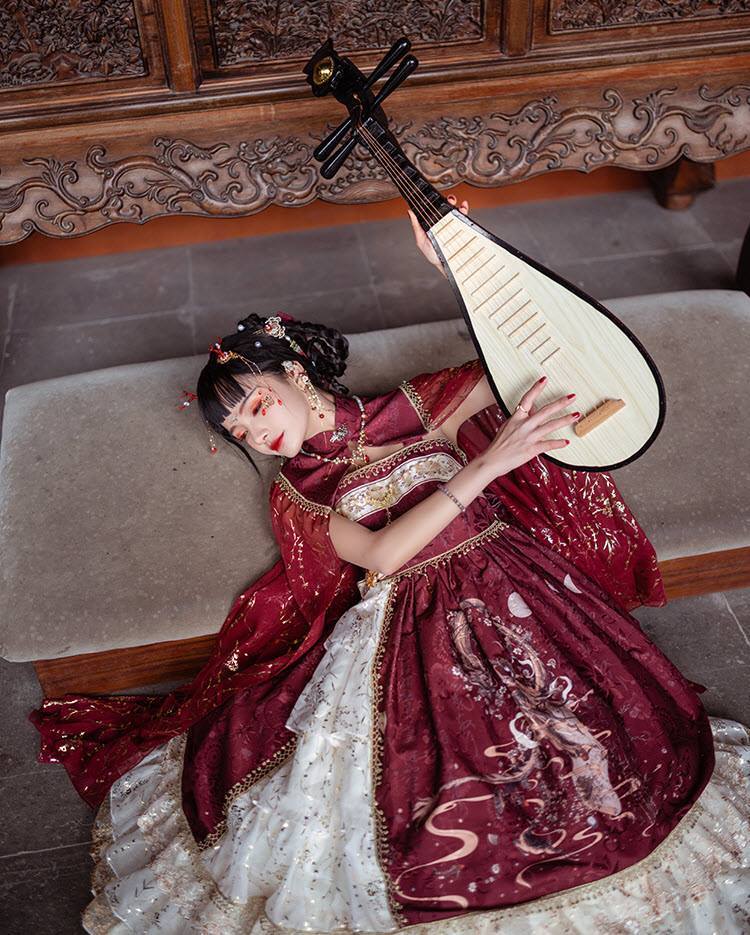
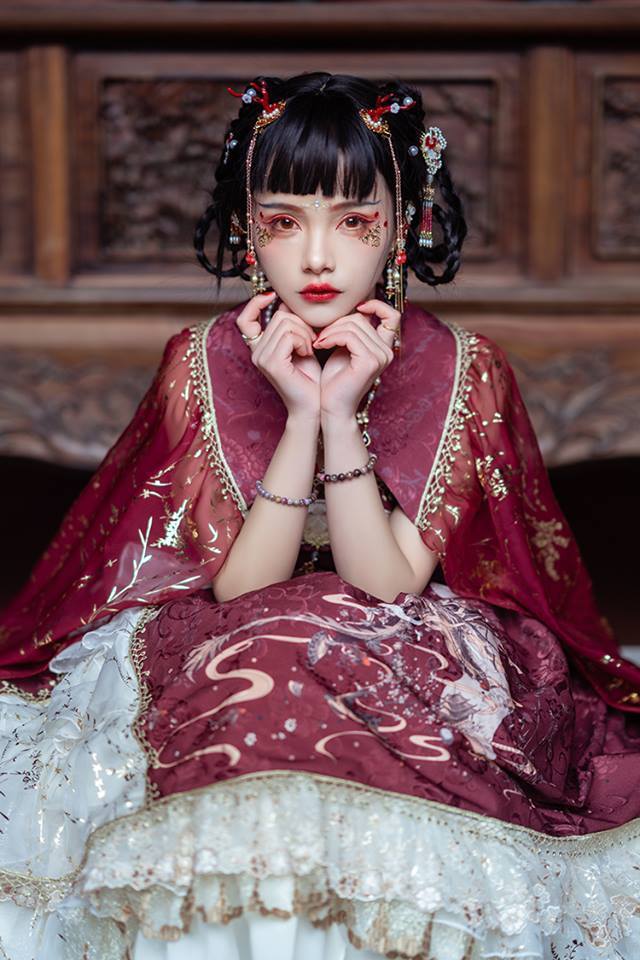
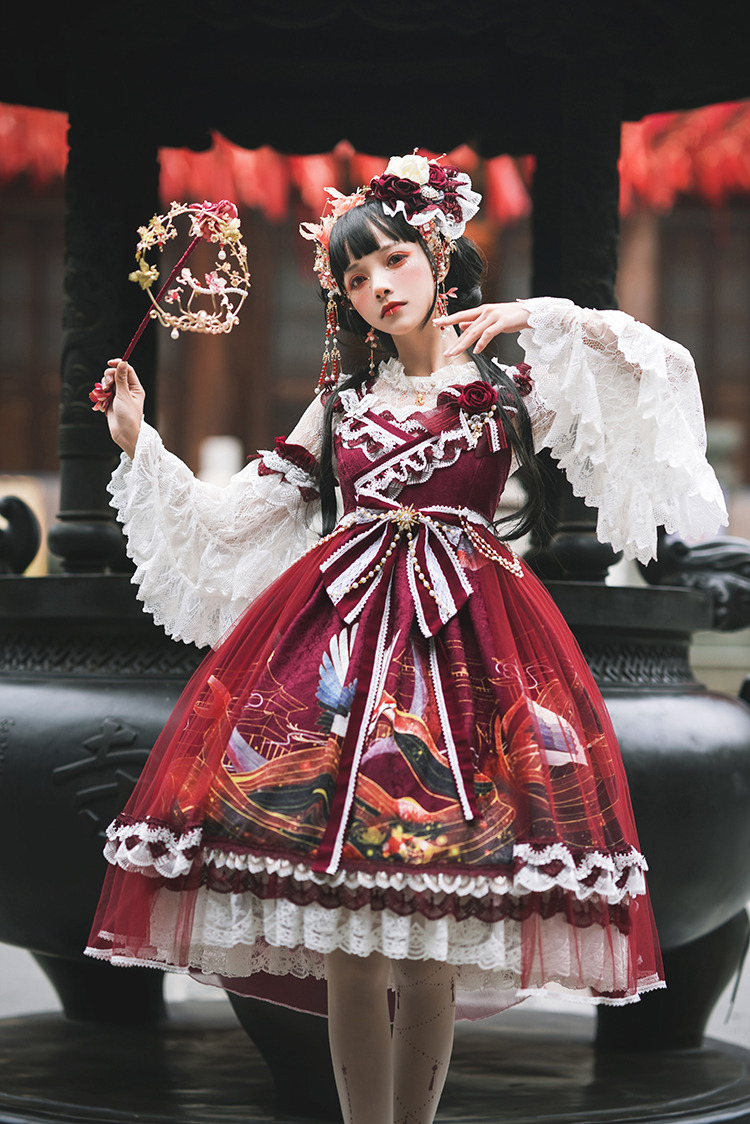
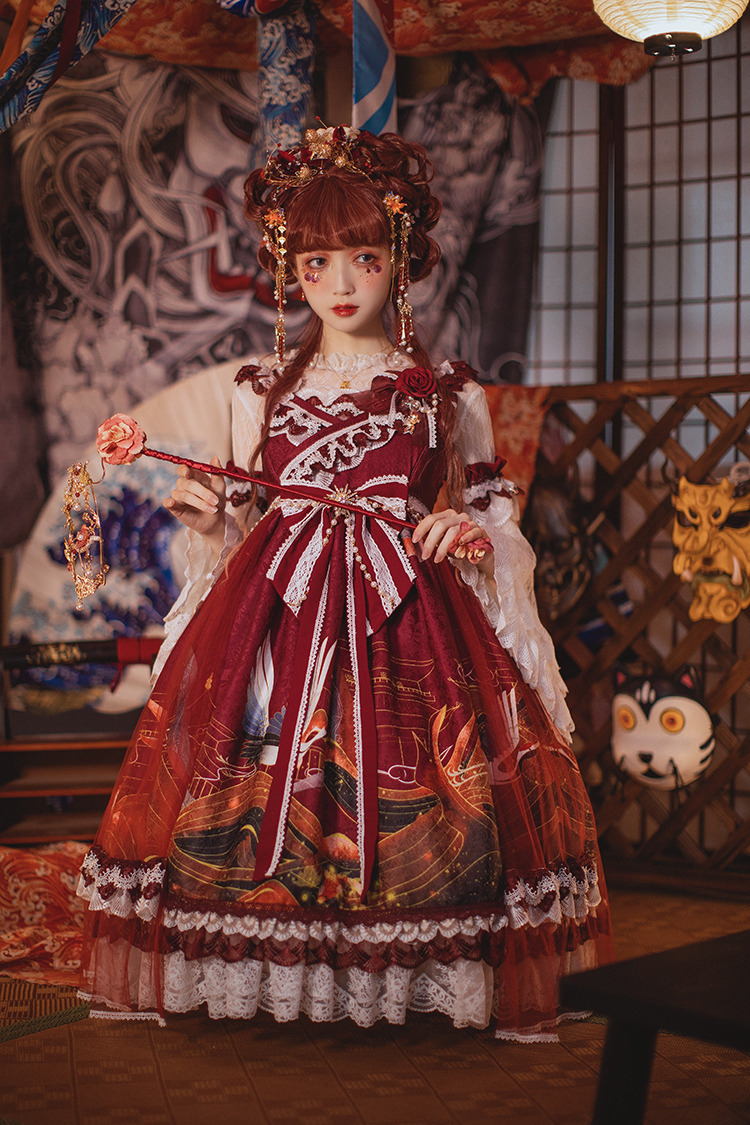
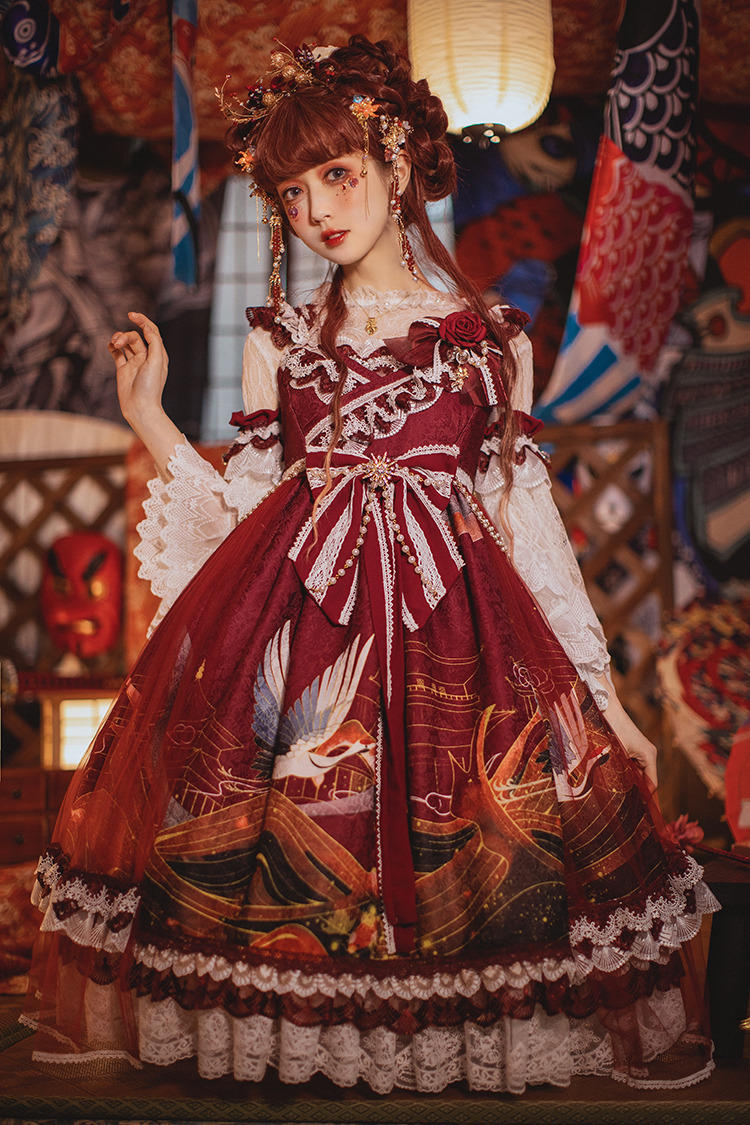
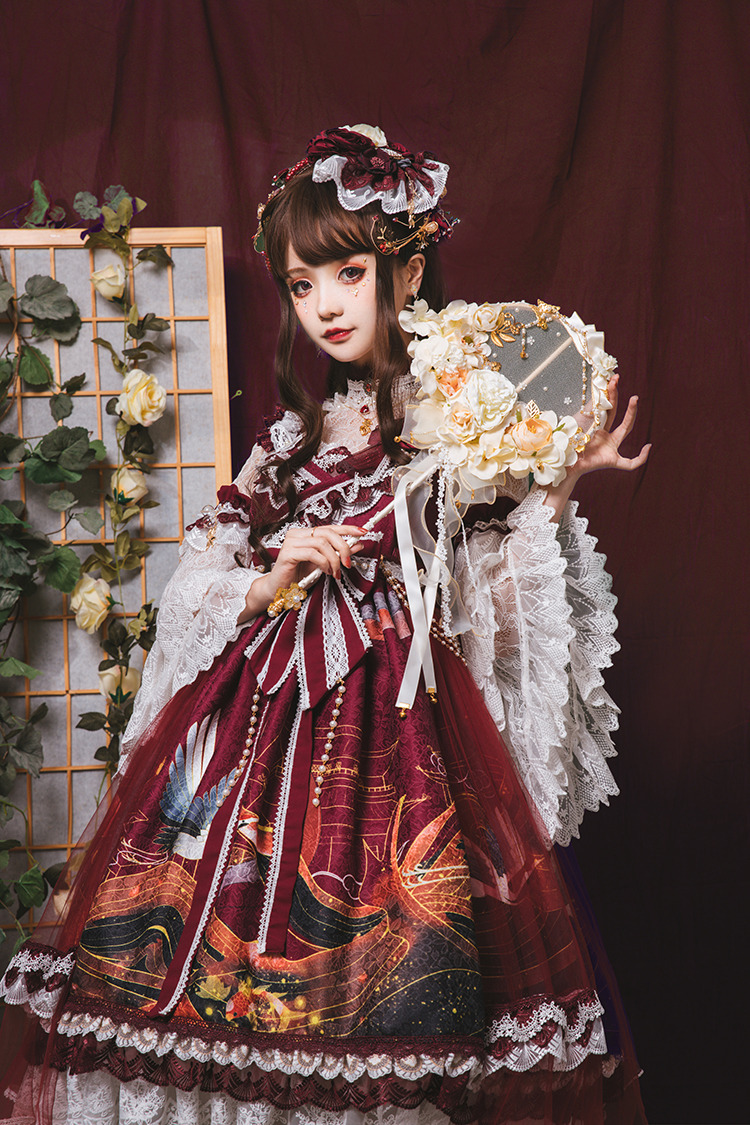
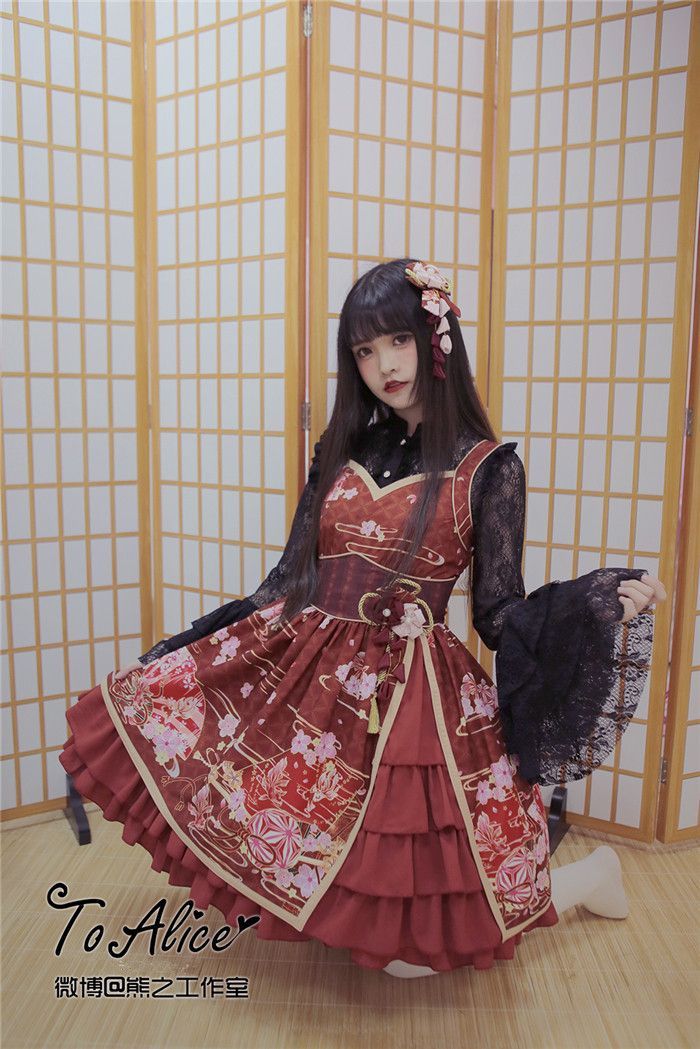
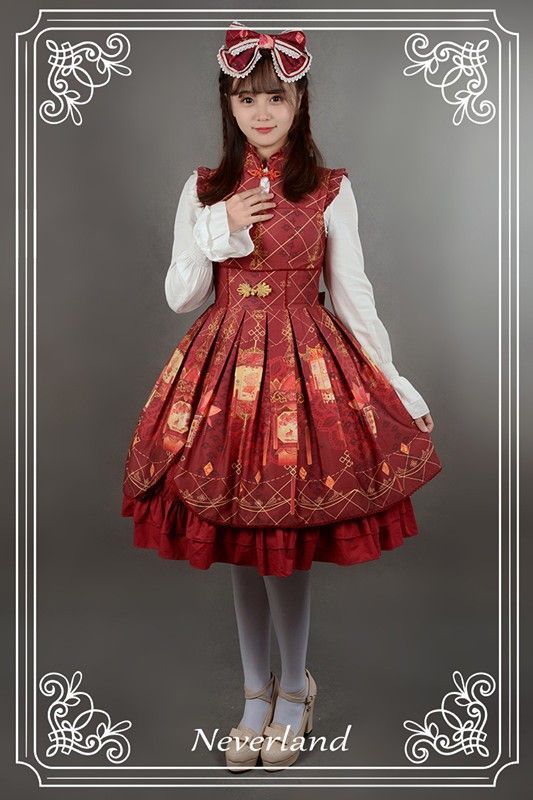
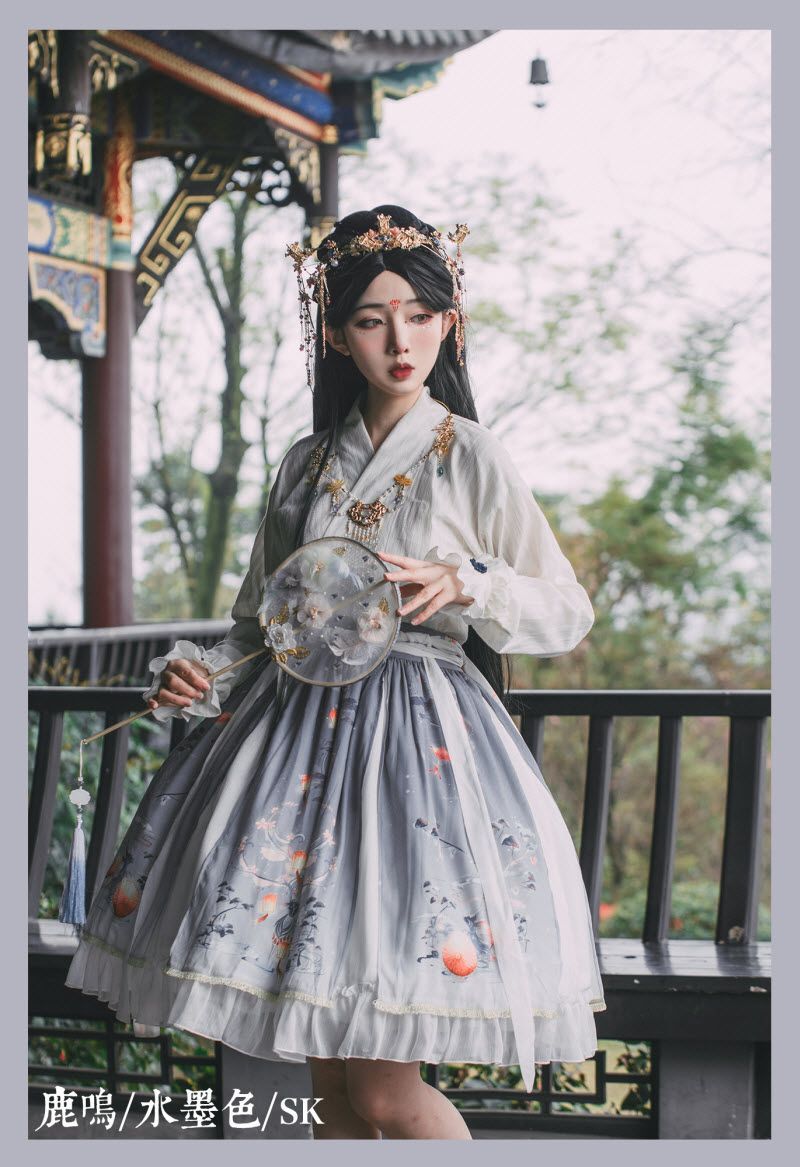
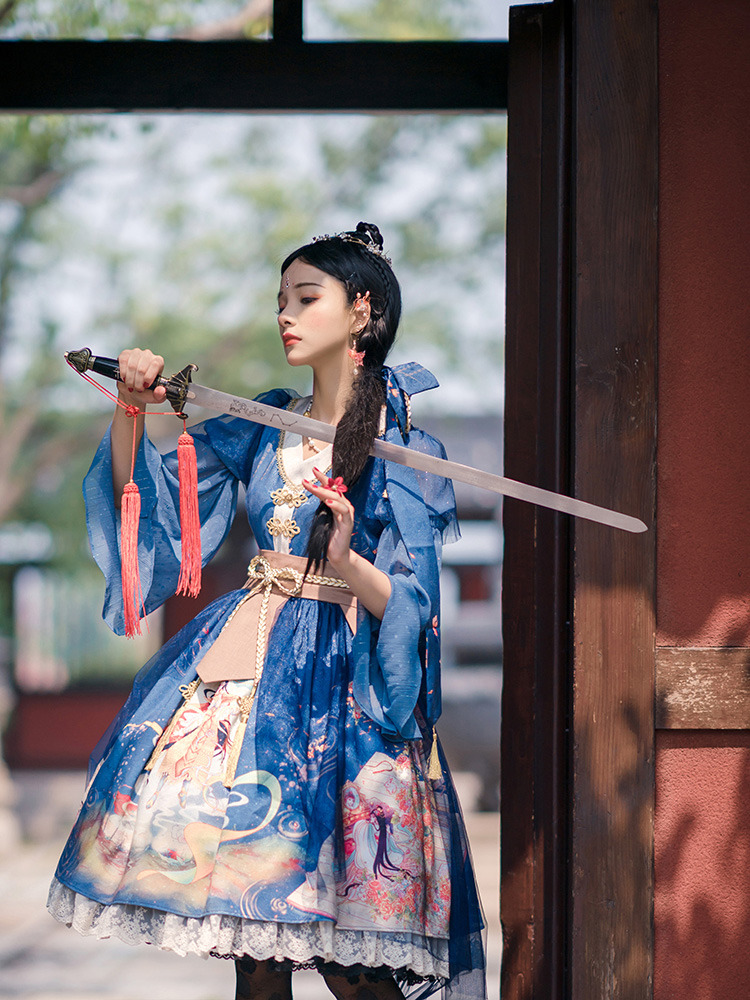
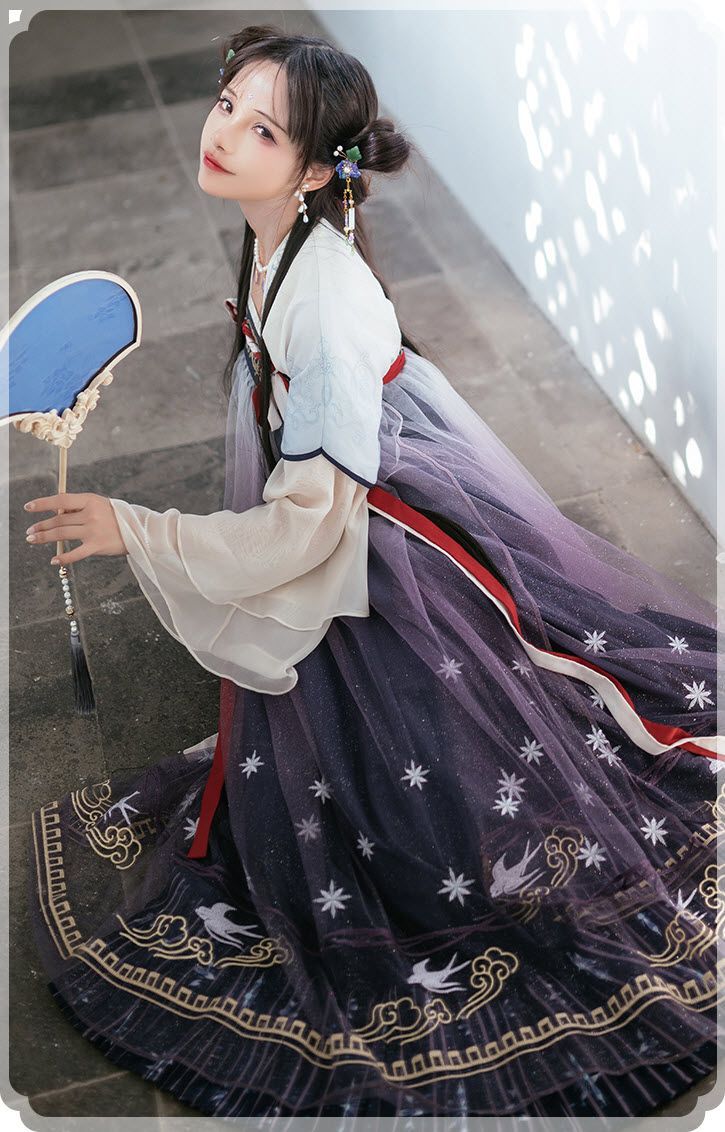
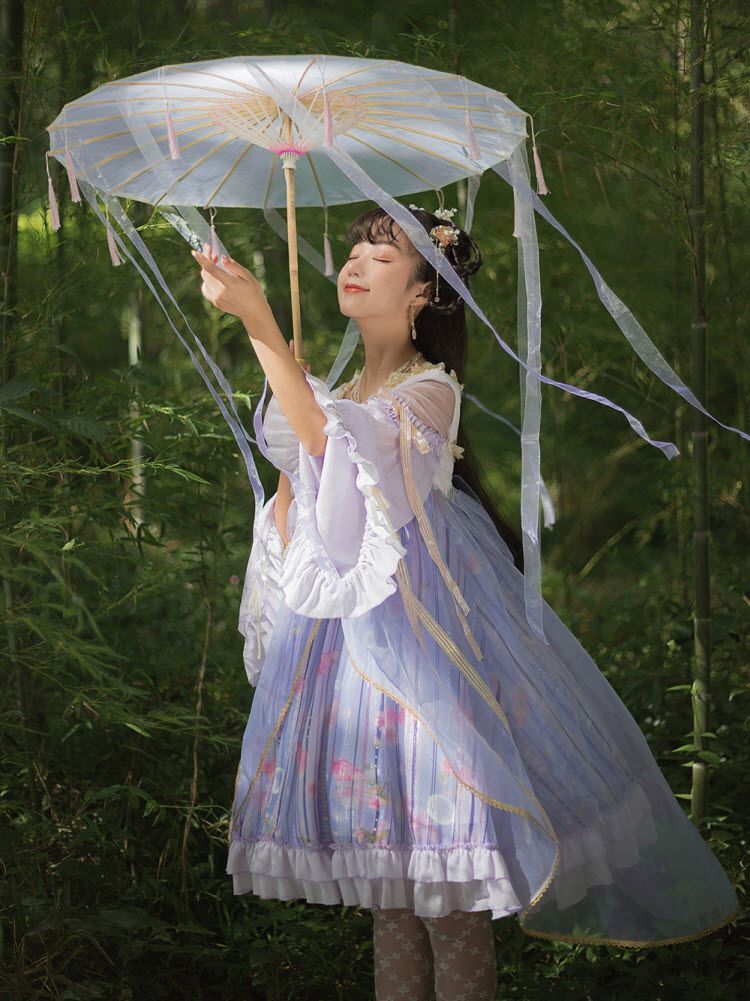
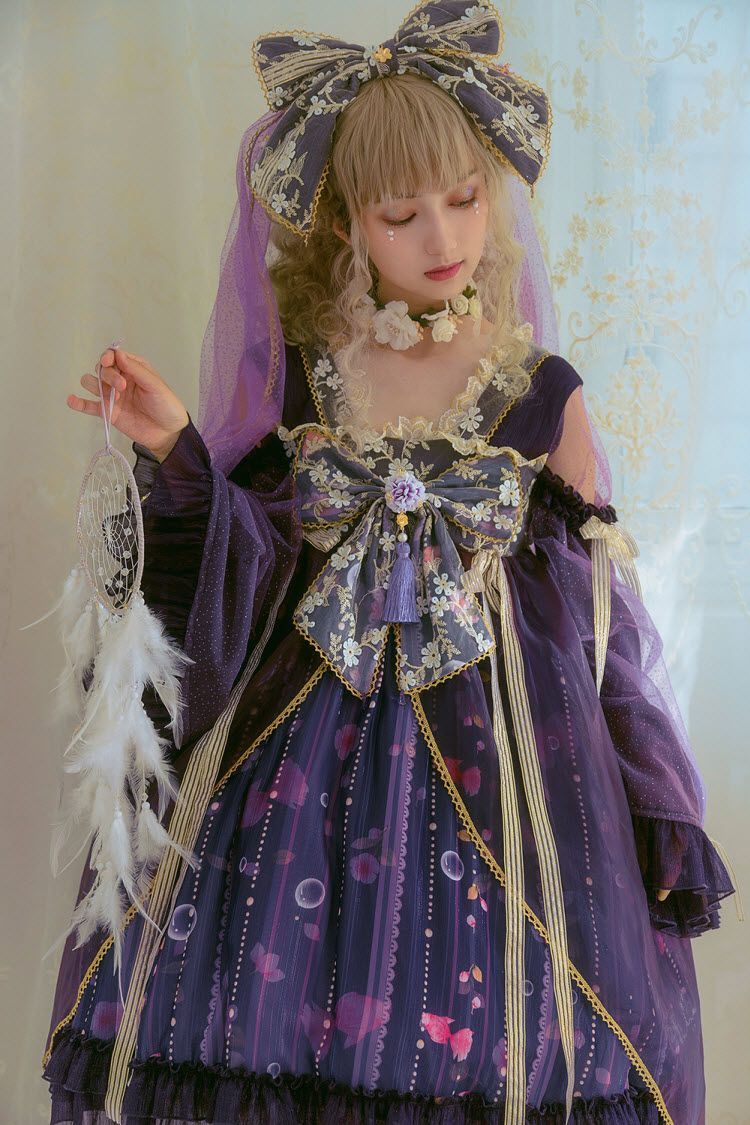
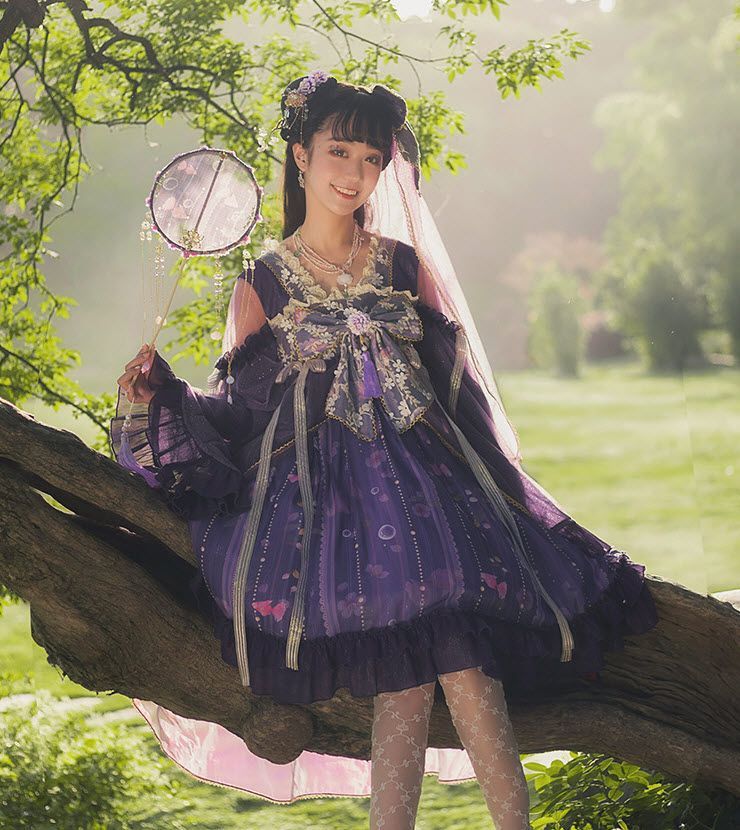
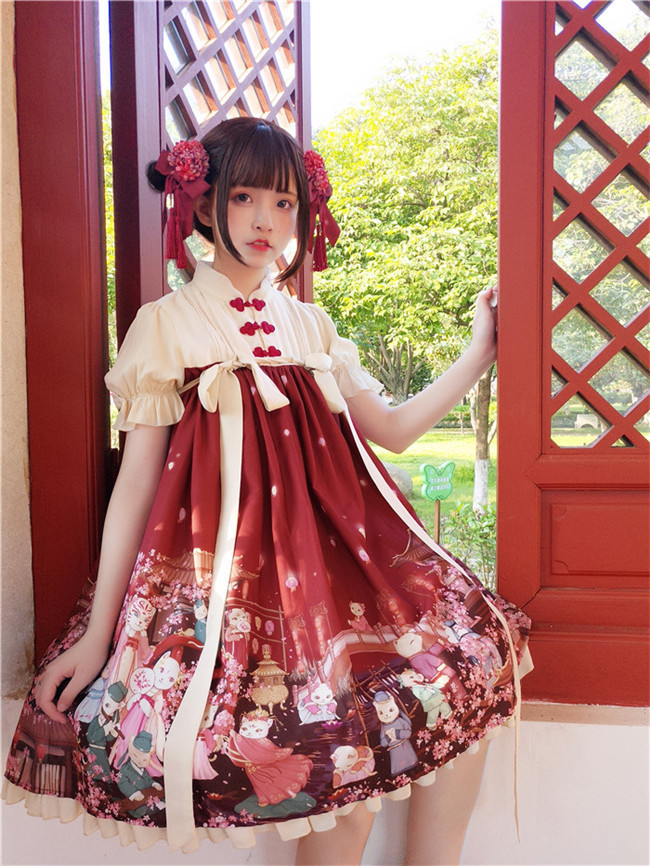
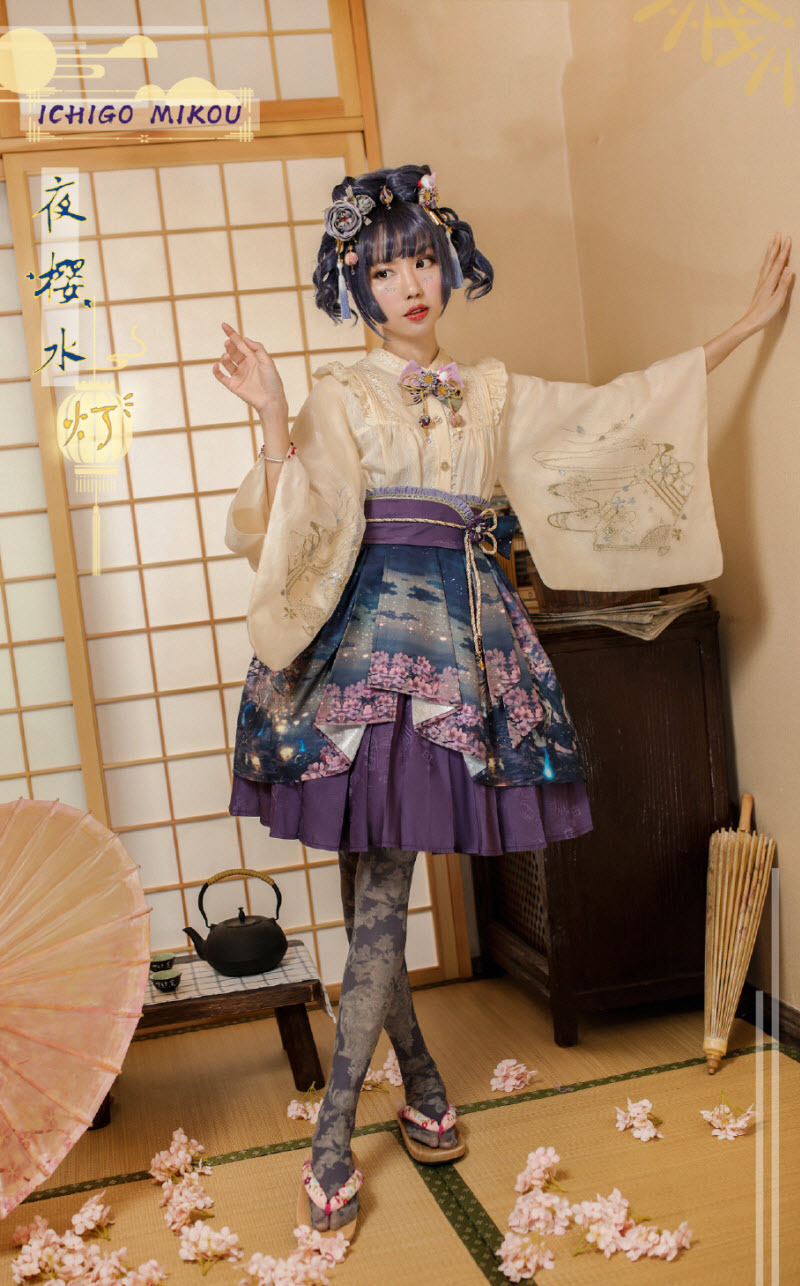
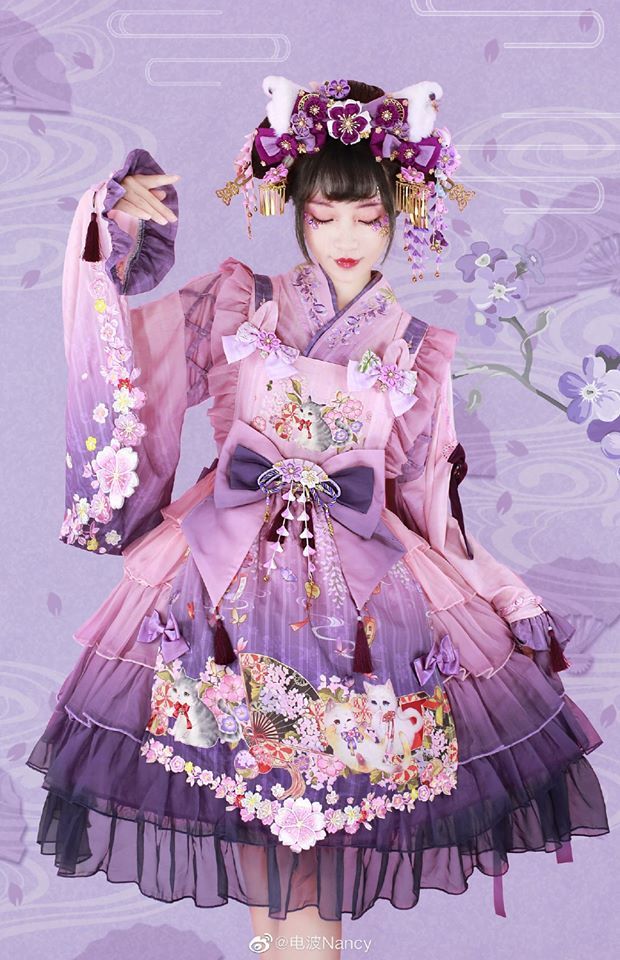
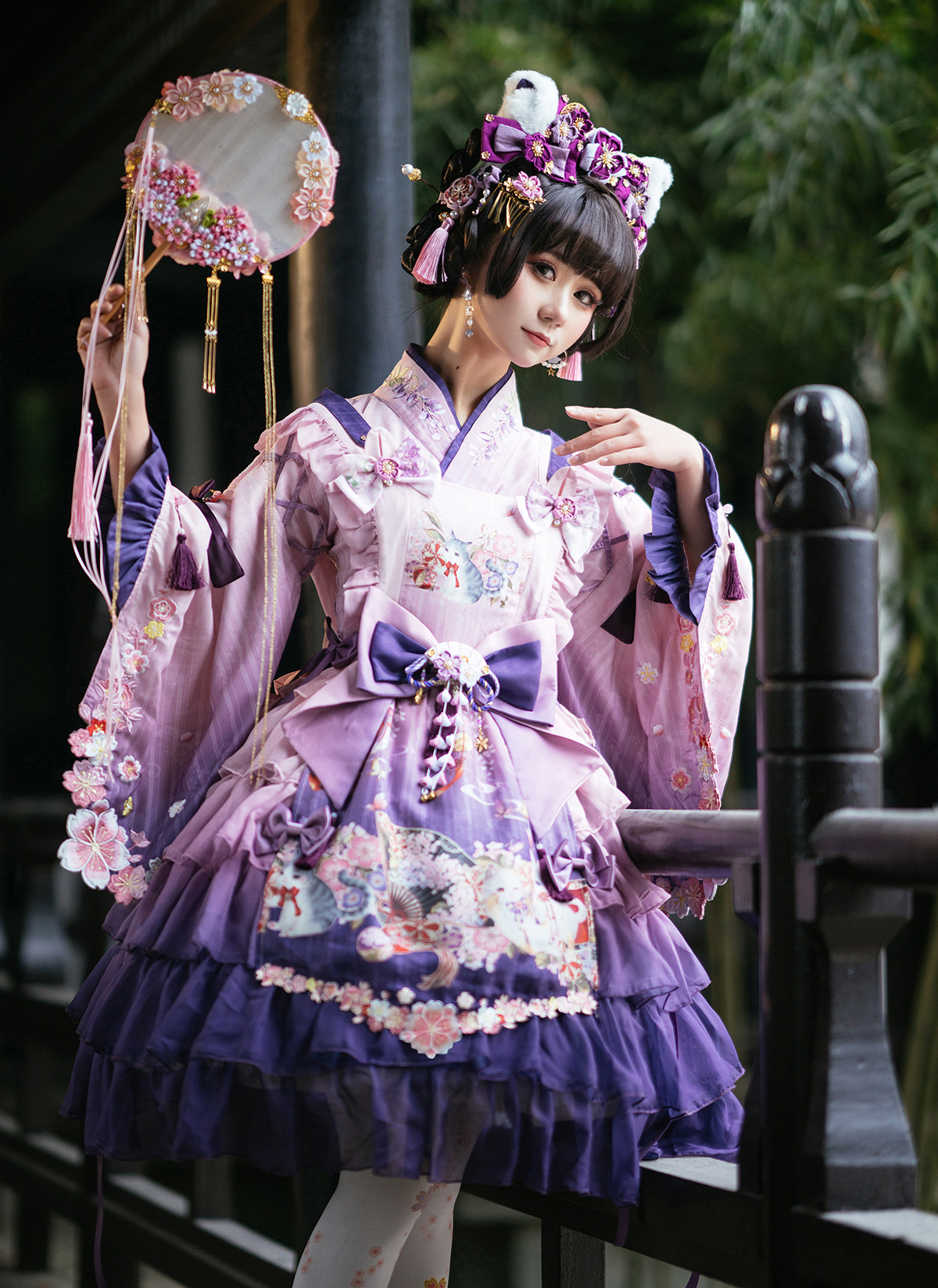
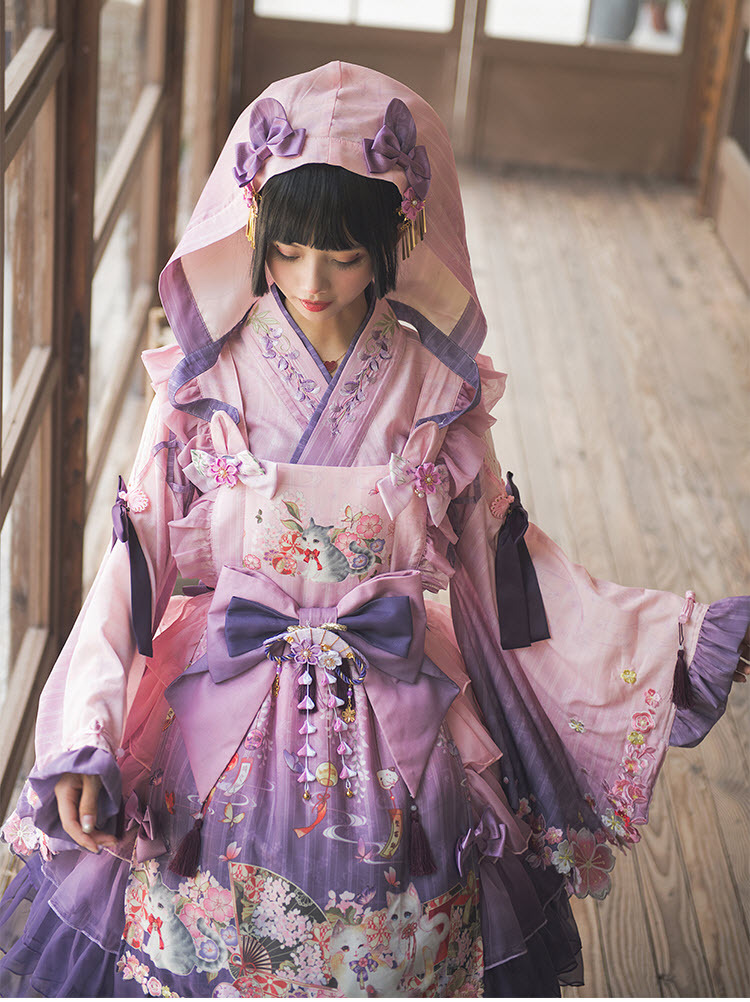
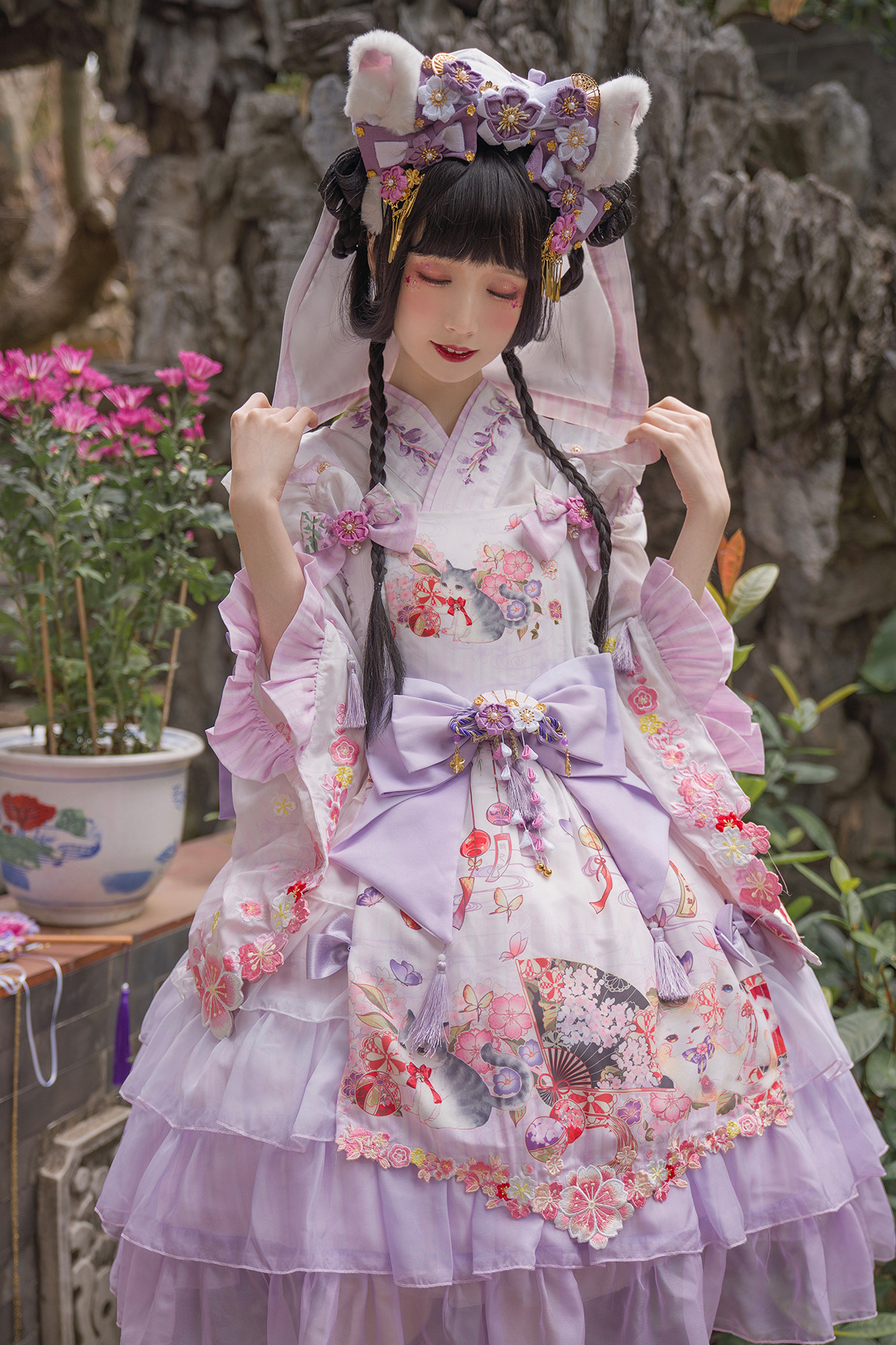
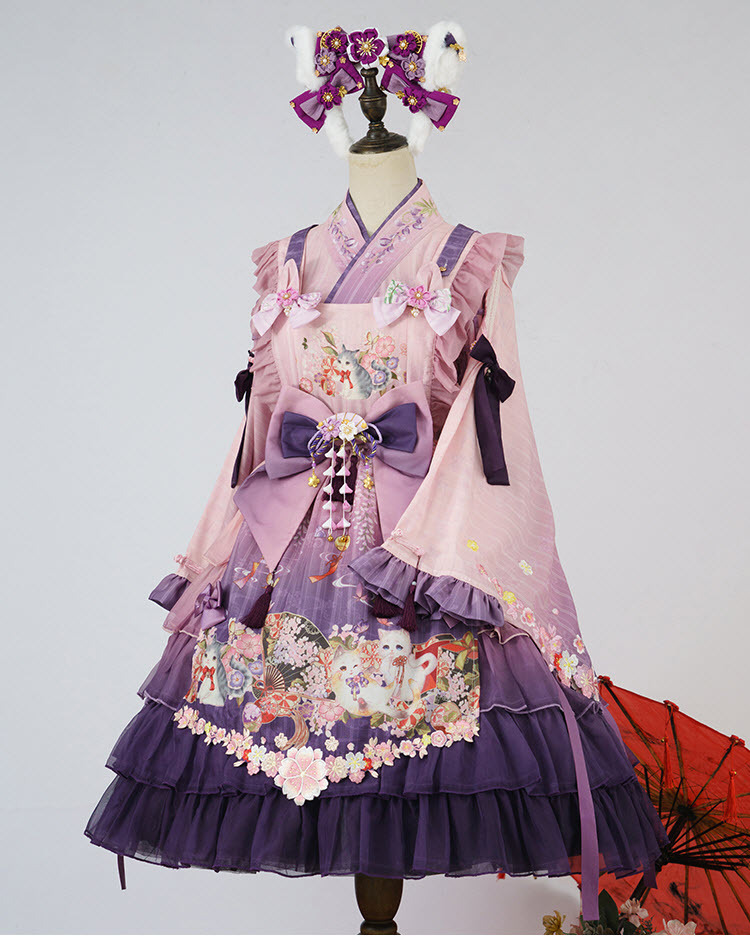
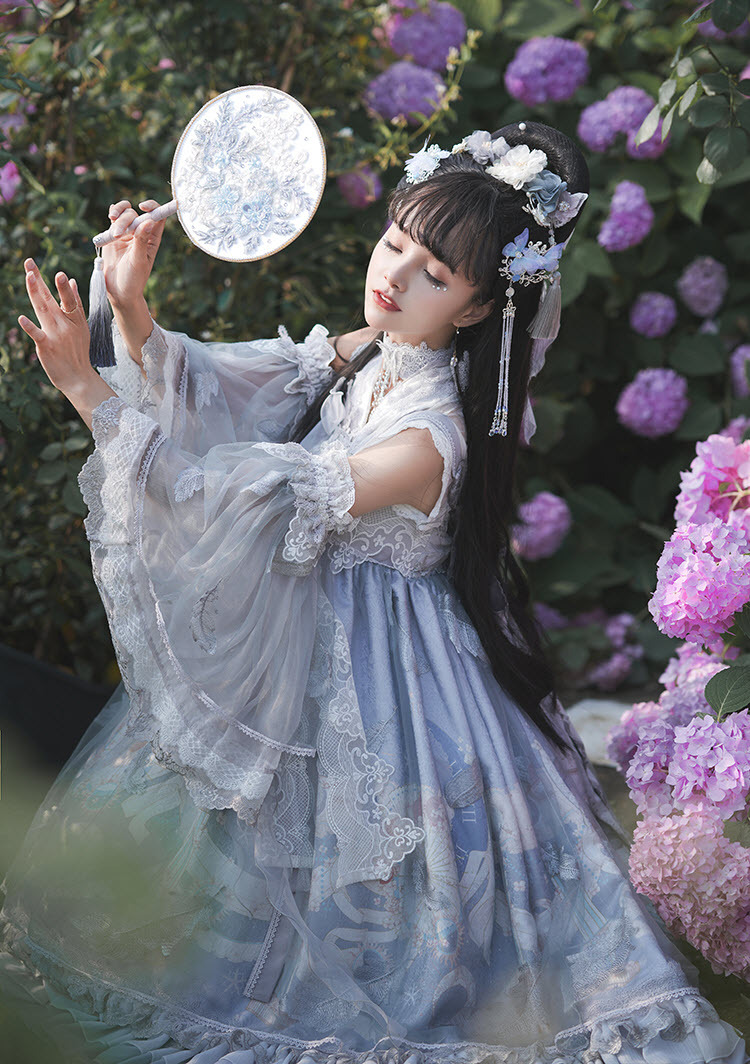
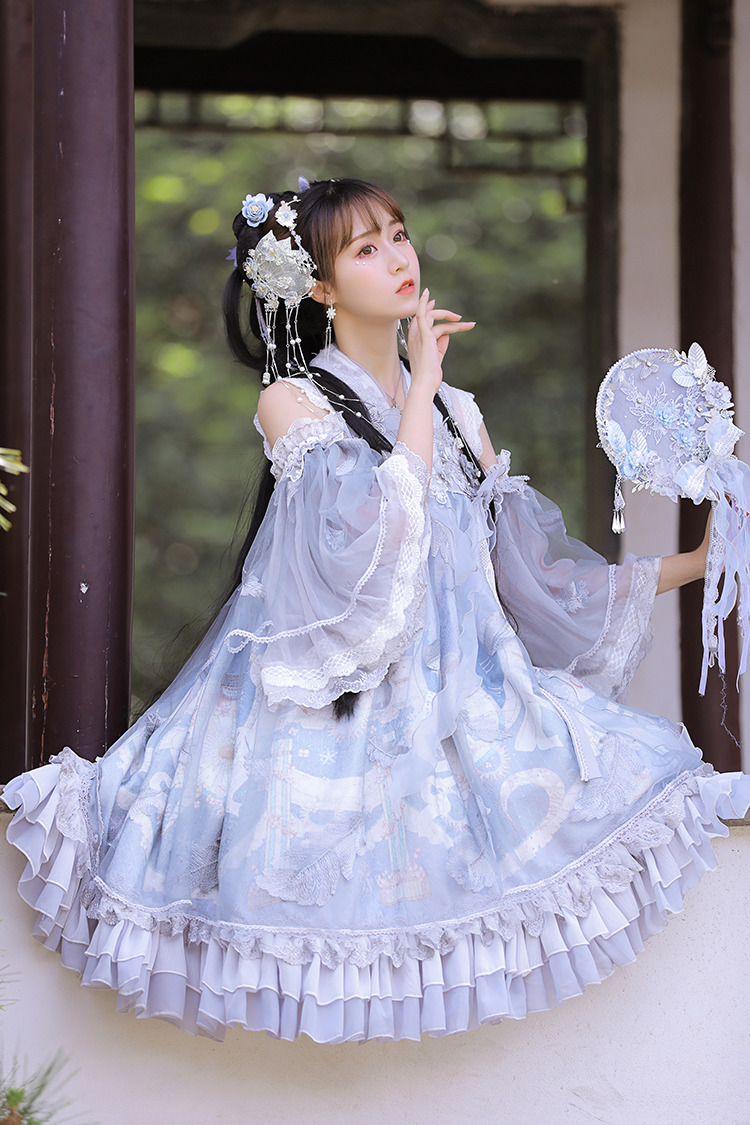
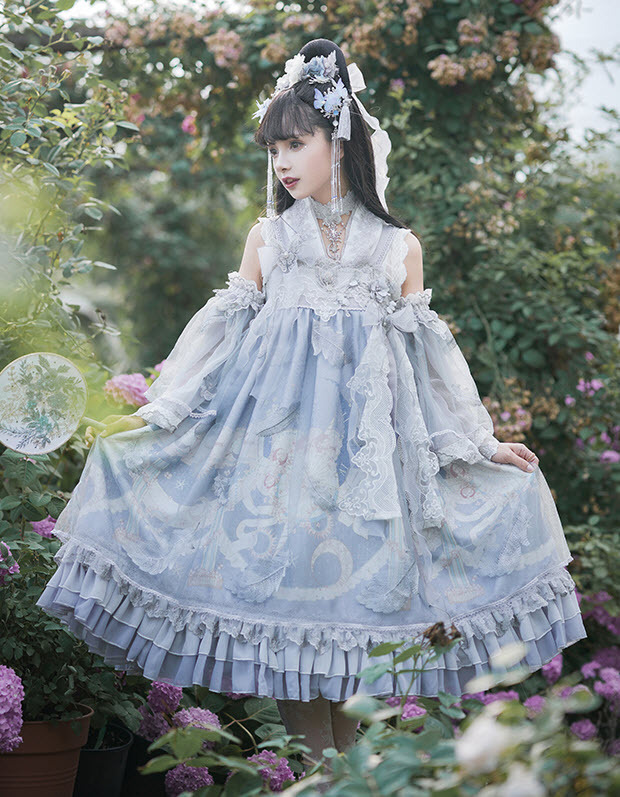
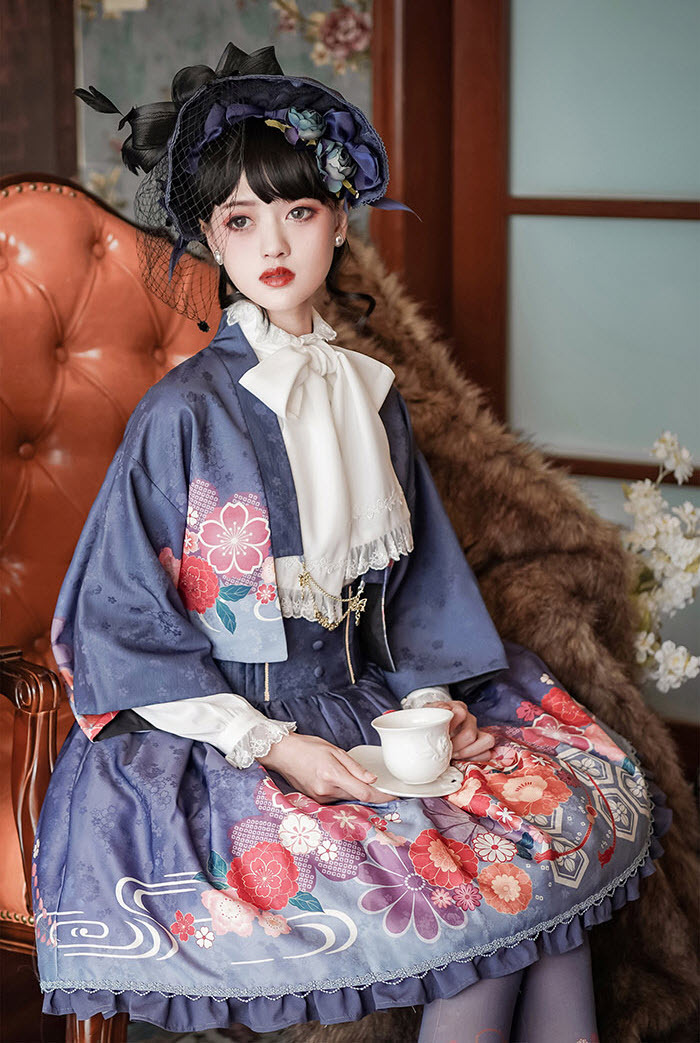
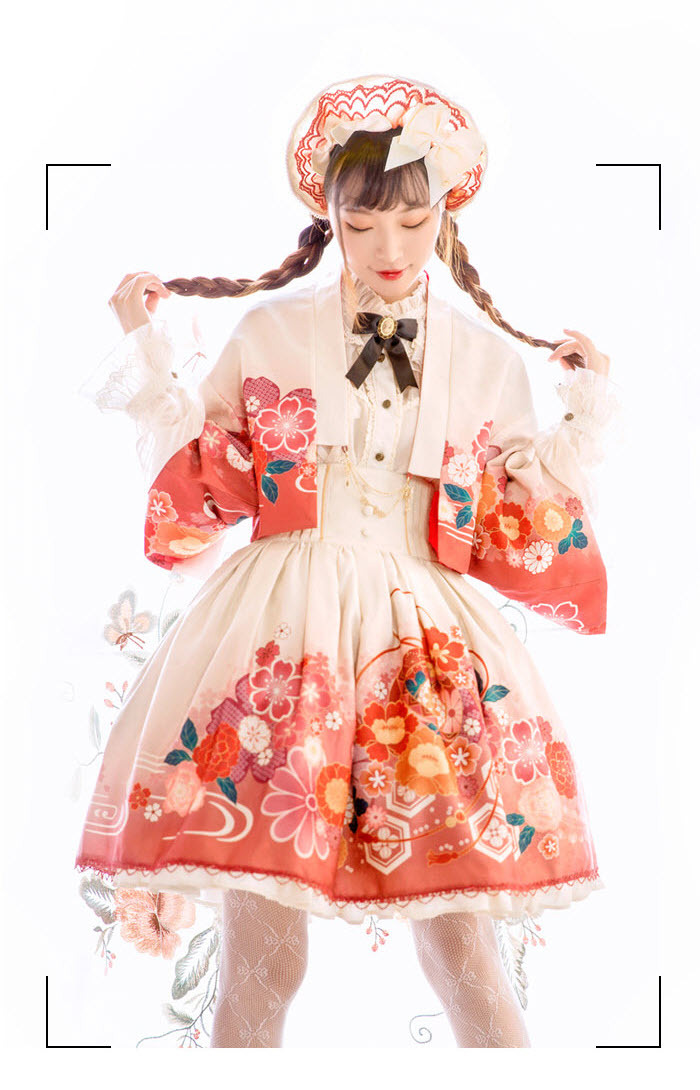
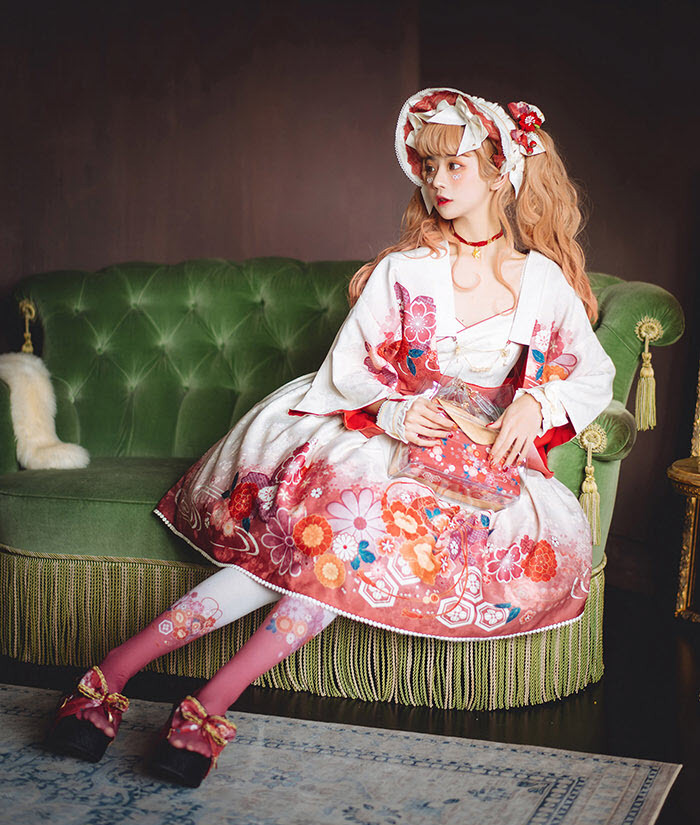
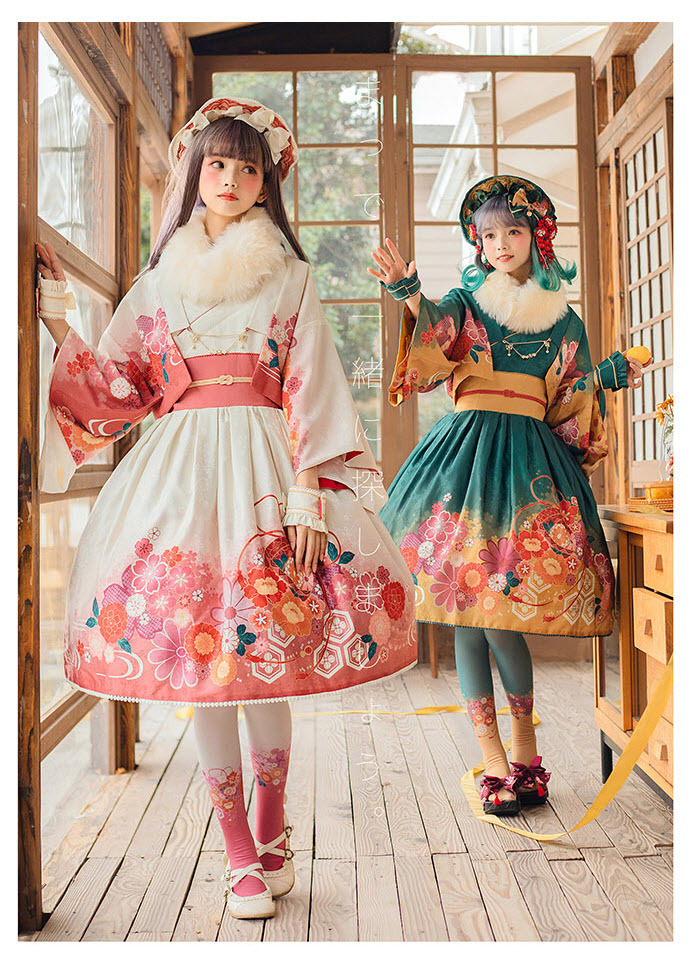
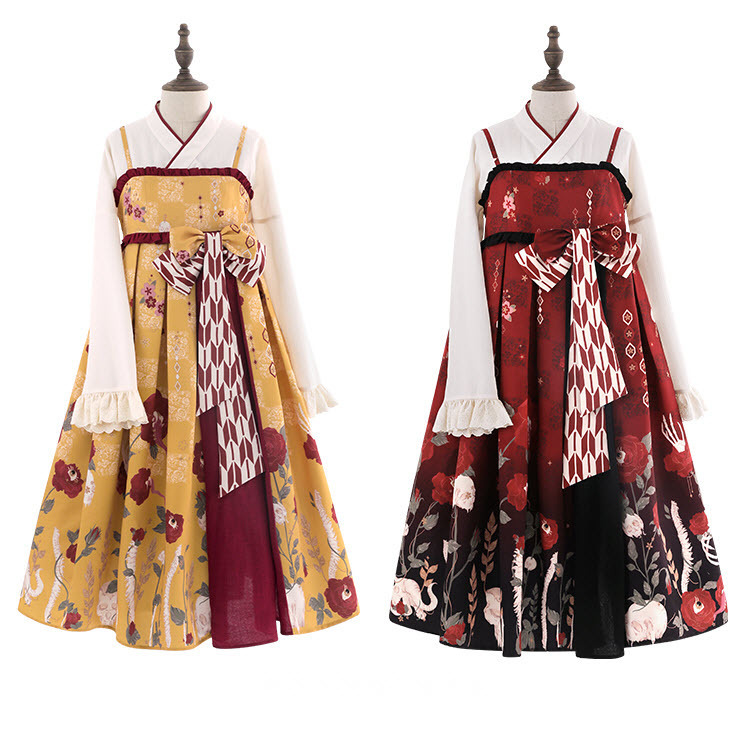
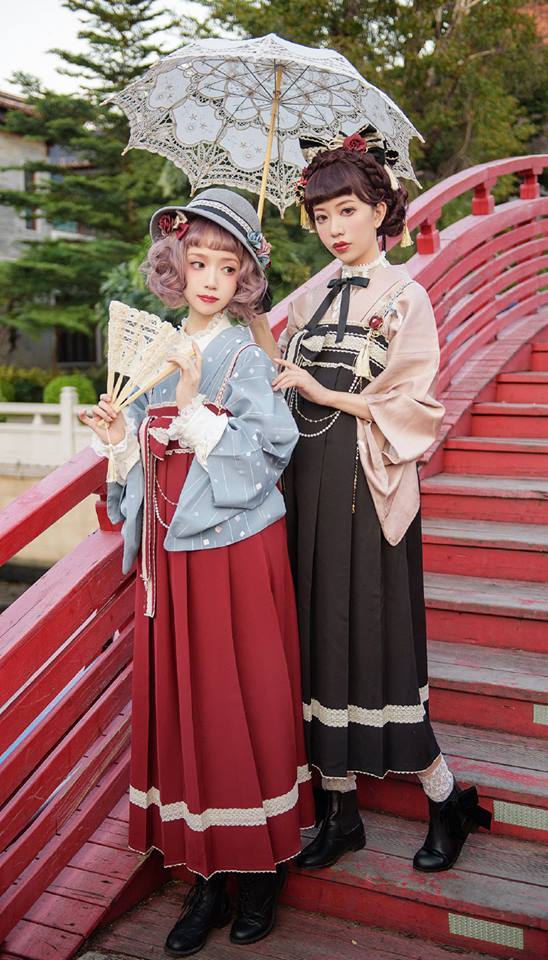
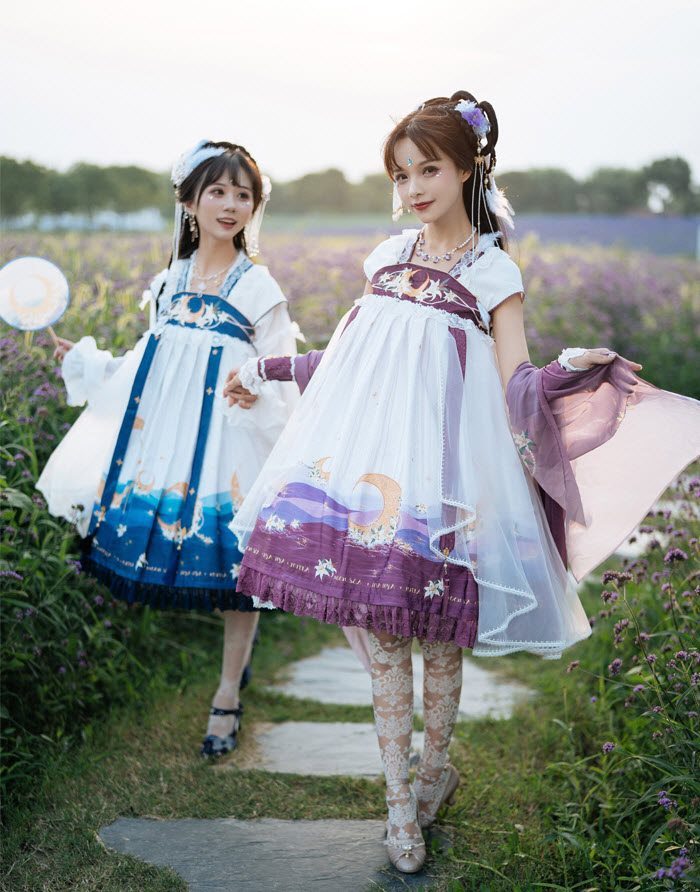
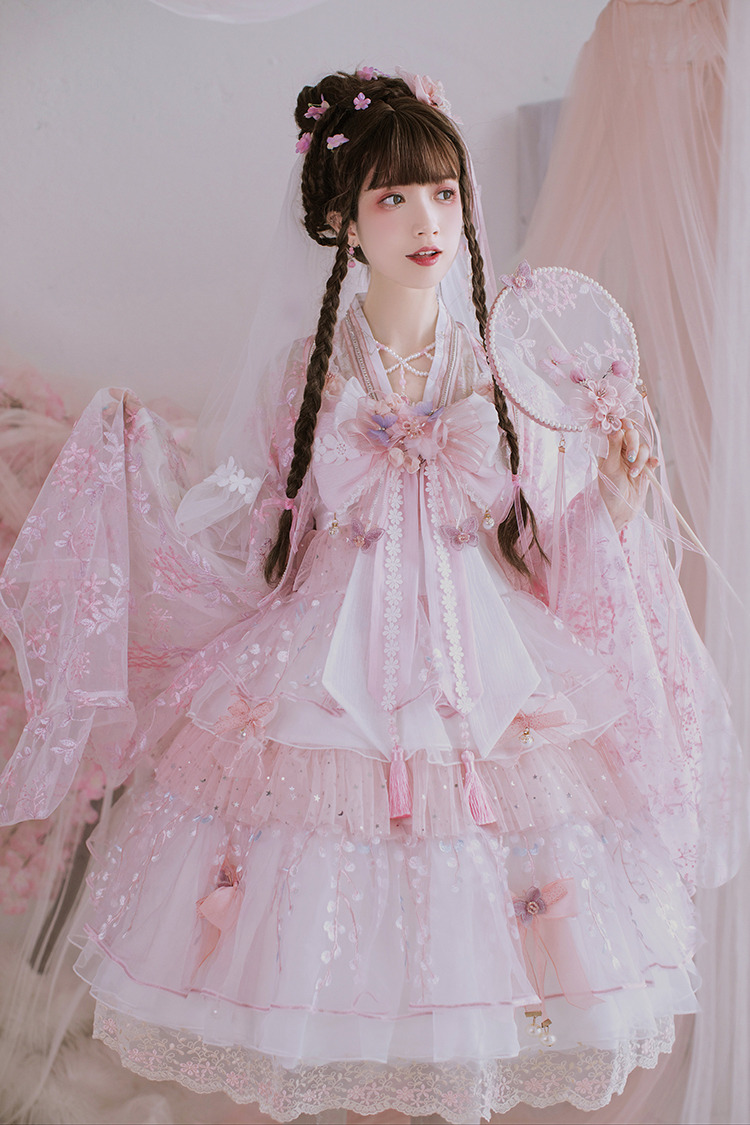
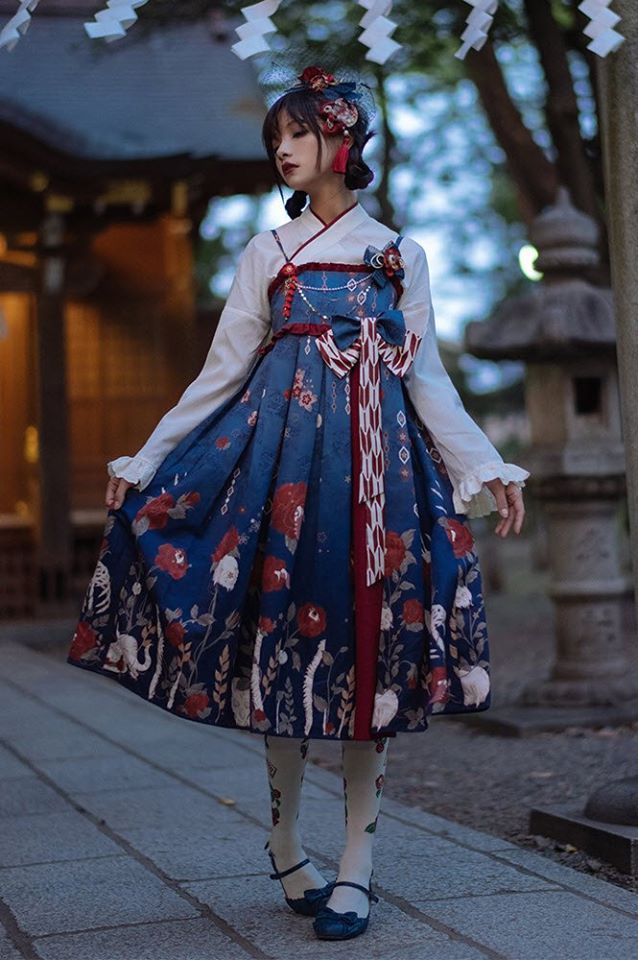
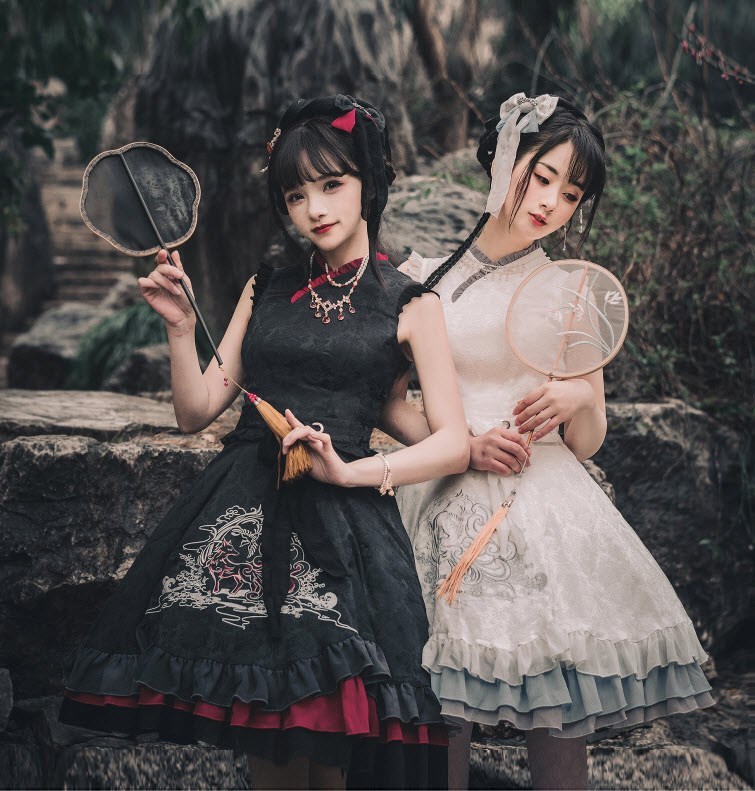
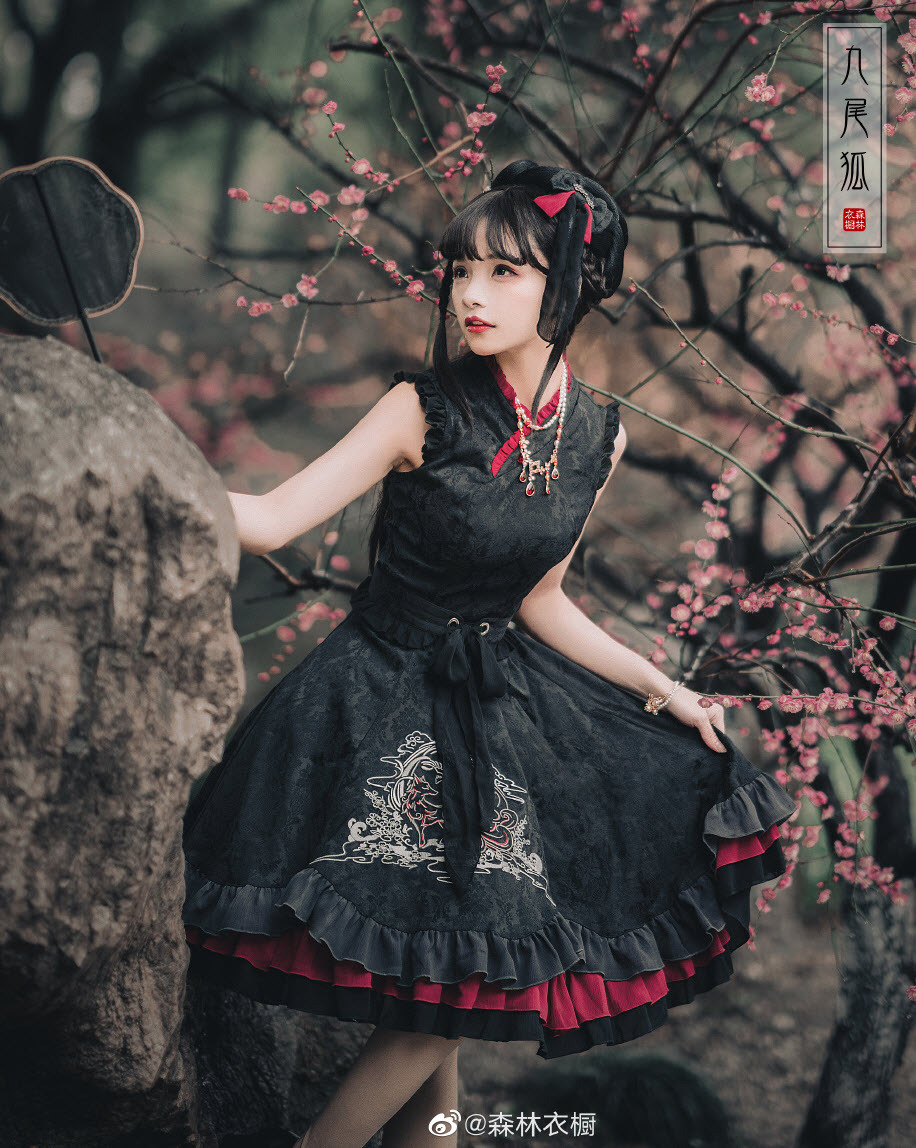
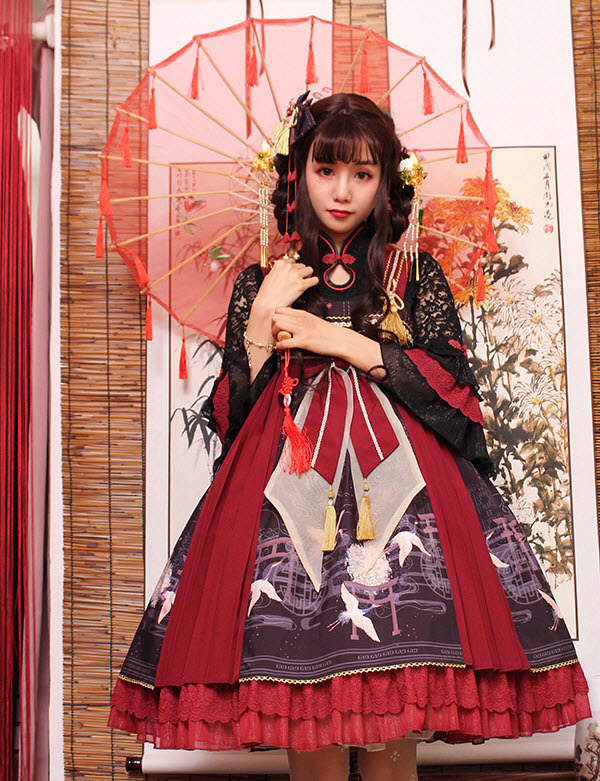
Most pictures found here.
Lolita dresses don’t come just in pink or white and aren’t necessarily restricted to springtime, here are some beautiful autumnal Lolita styles!
Pictures found here.
Spring is undoubtedly the best time of the year to wear pretty clothes and also a perfect time to compete with the vibrant flowers that fill the landscape where ever you turn. Who wore a white dress better: you or a daisy? Who looks better in light pink: you or the cherry tree blossom? Who looks more fresh and radiant in pale green: you or the newly awaken leaves on the weeping willow trees? Now’s the time to find out! But don’t be intimidated; flowers are so naturally pretty indeed from dawn to dusk and need no jewellery or make up to embellish themselves, but whereas they have to make do with the same colour and shape of petals all their short life, we can change our petals and be a new flower every day! Let’s be vain us peacocks and dress like there is nothing more important in the world, there isn’t in fact, aesthetic is everything. These days I am so in love with that cute, romantic, doll-like look; Japanese fashion mostly, pink, white, lilac, baby blue colours, flowery, gingham print, old lace, rosy cheeks, ribbons and flower crowns, childish stuff, Marie Antoinette vibe, pink eye shadow and glitter everywhere, childlike clothes of 1960s worn by Anna Karina and Yé yé singers, Brooke Shield’s outfits in the film “Pretty Baby” (1978), hats with flowers and ribbons, dresses that look like wedding dresses… These days I even want to wear a kimono!
Pic found here.

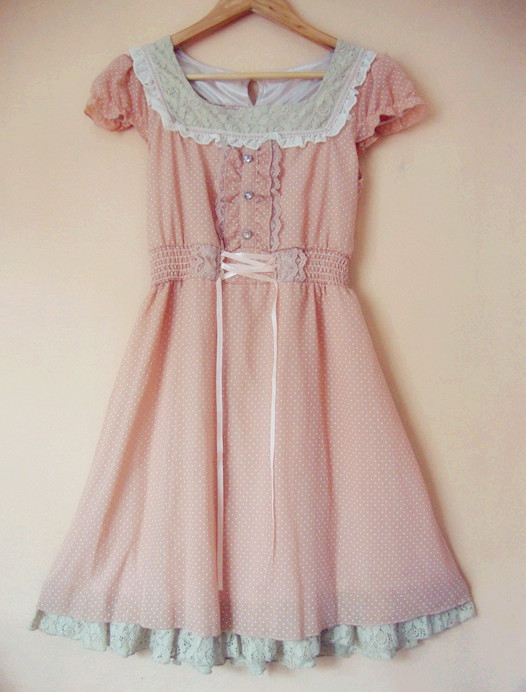
Pic found here.
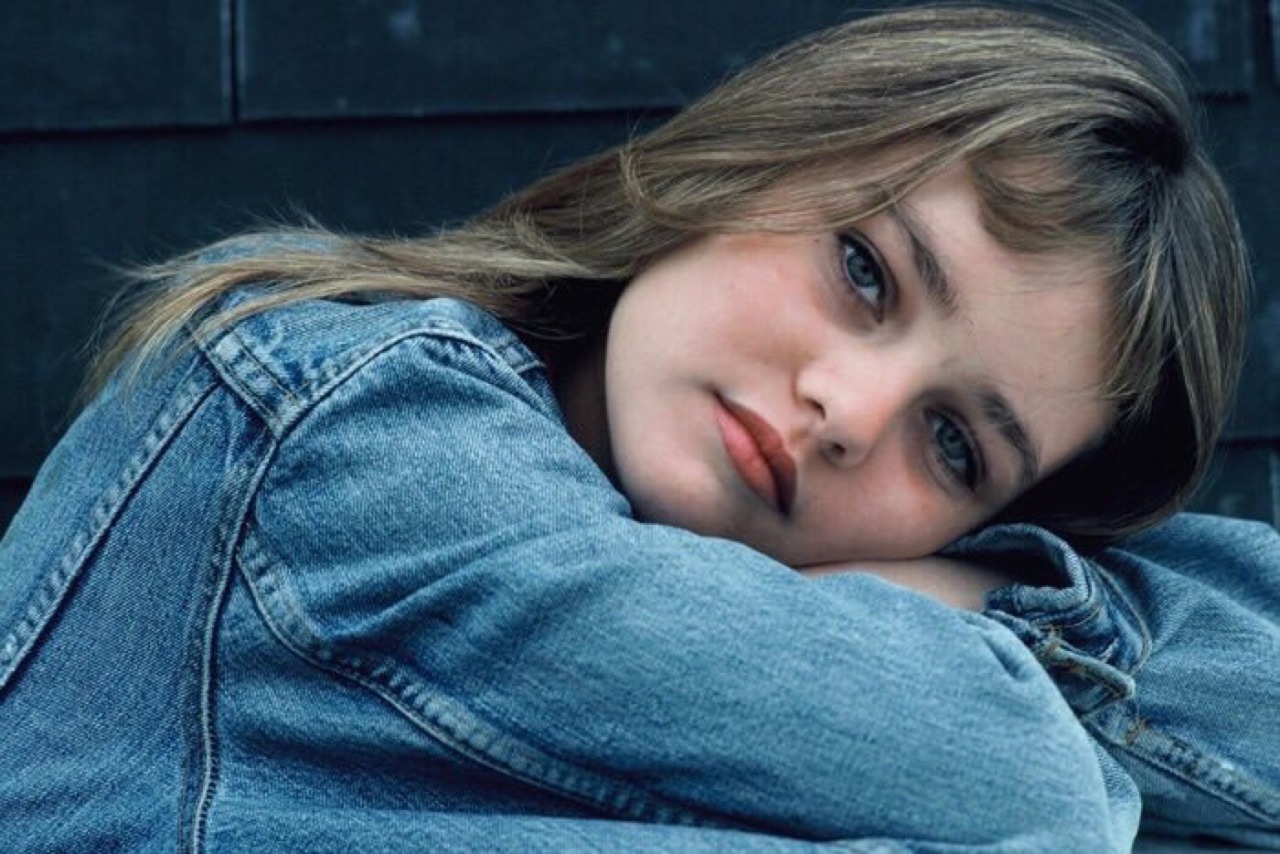
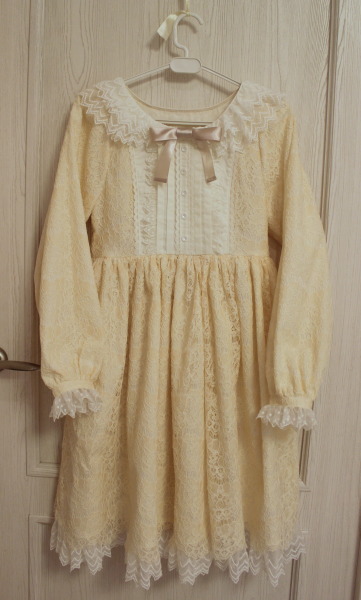
Handmade dress, found here.
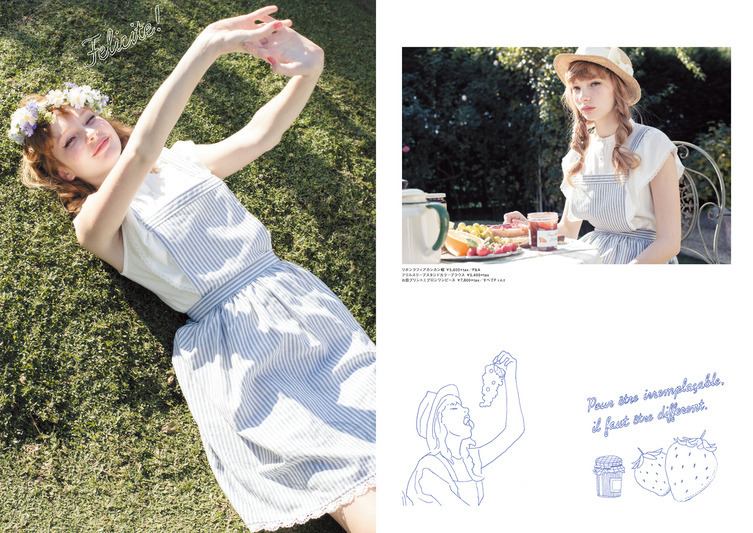
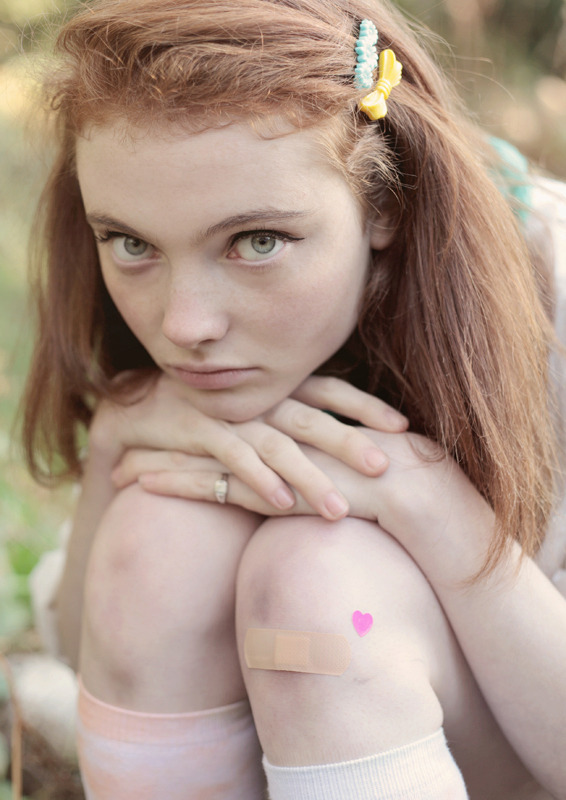
Eleanor Hardwick shoots for Rookie Mag

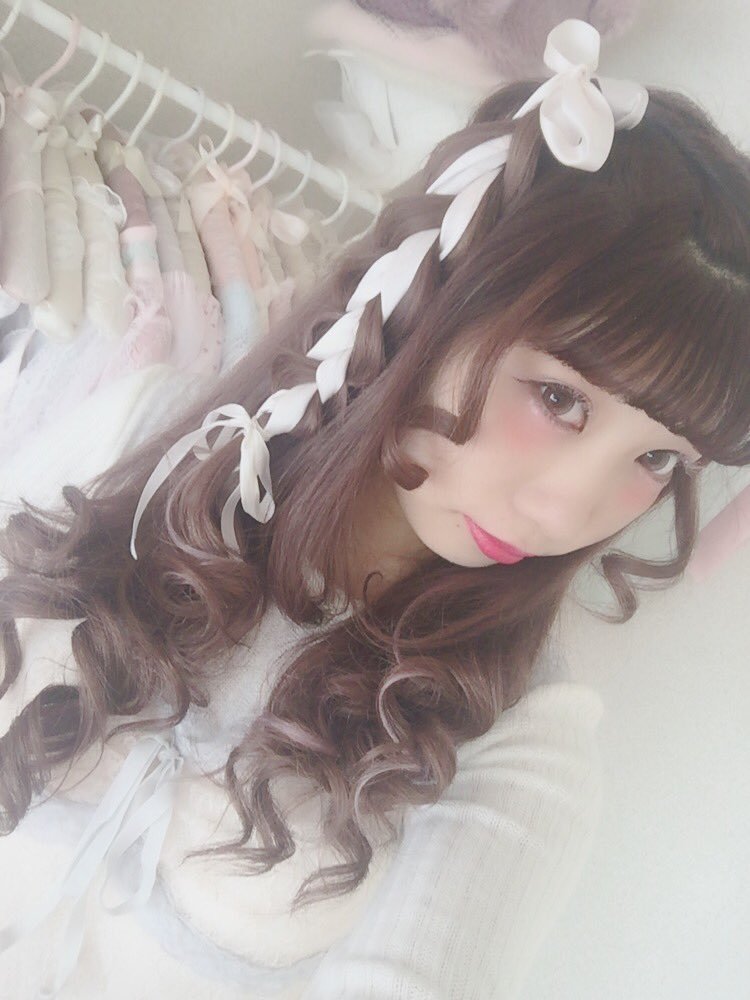
Pic found here.
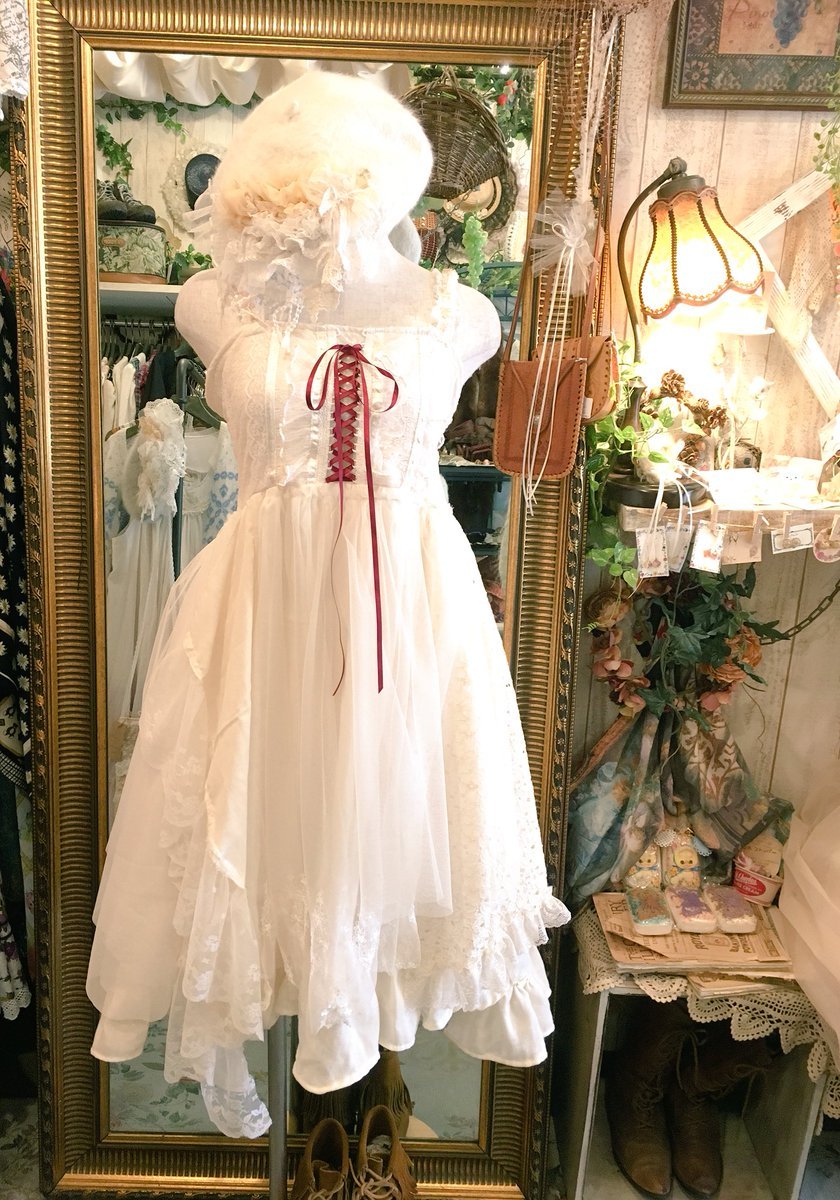
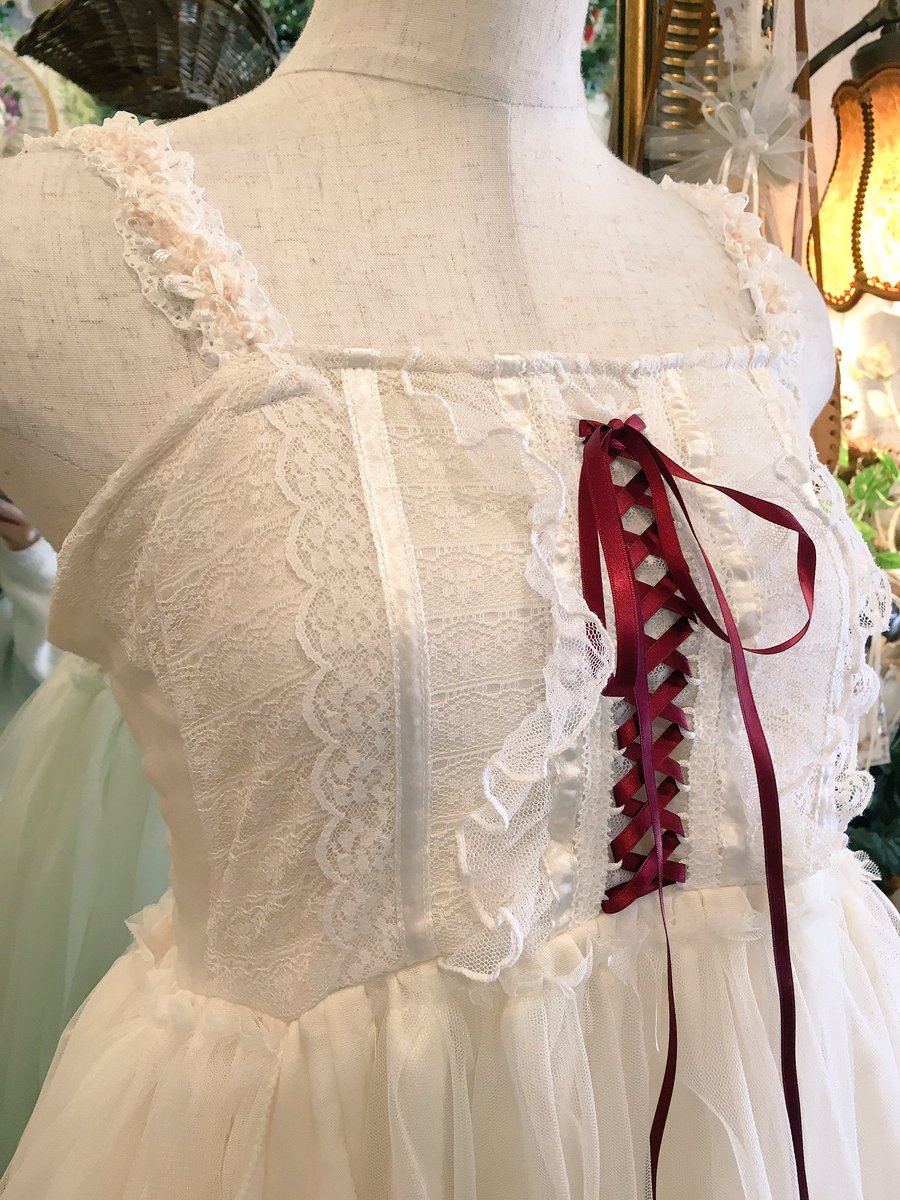
Pics found here.
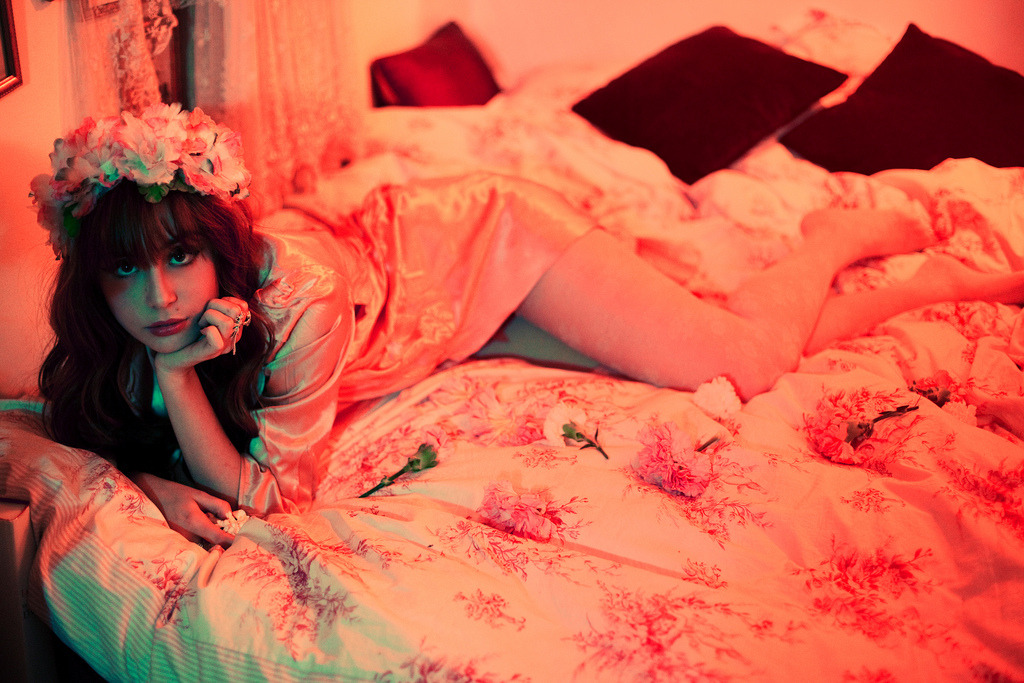

Pics found here.
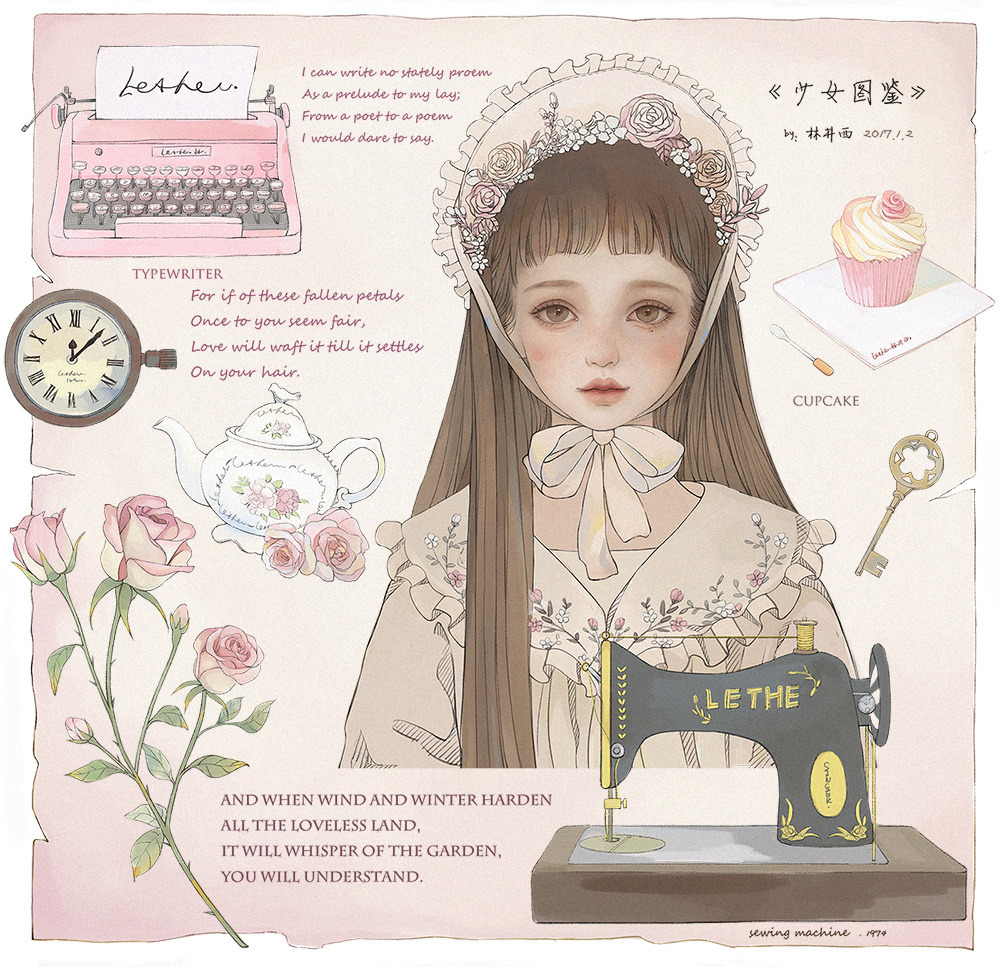
Art by Lethe, found here.
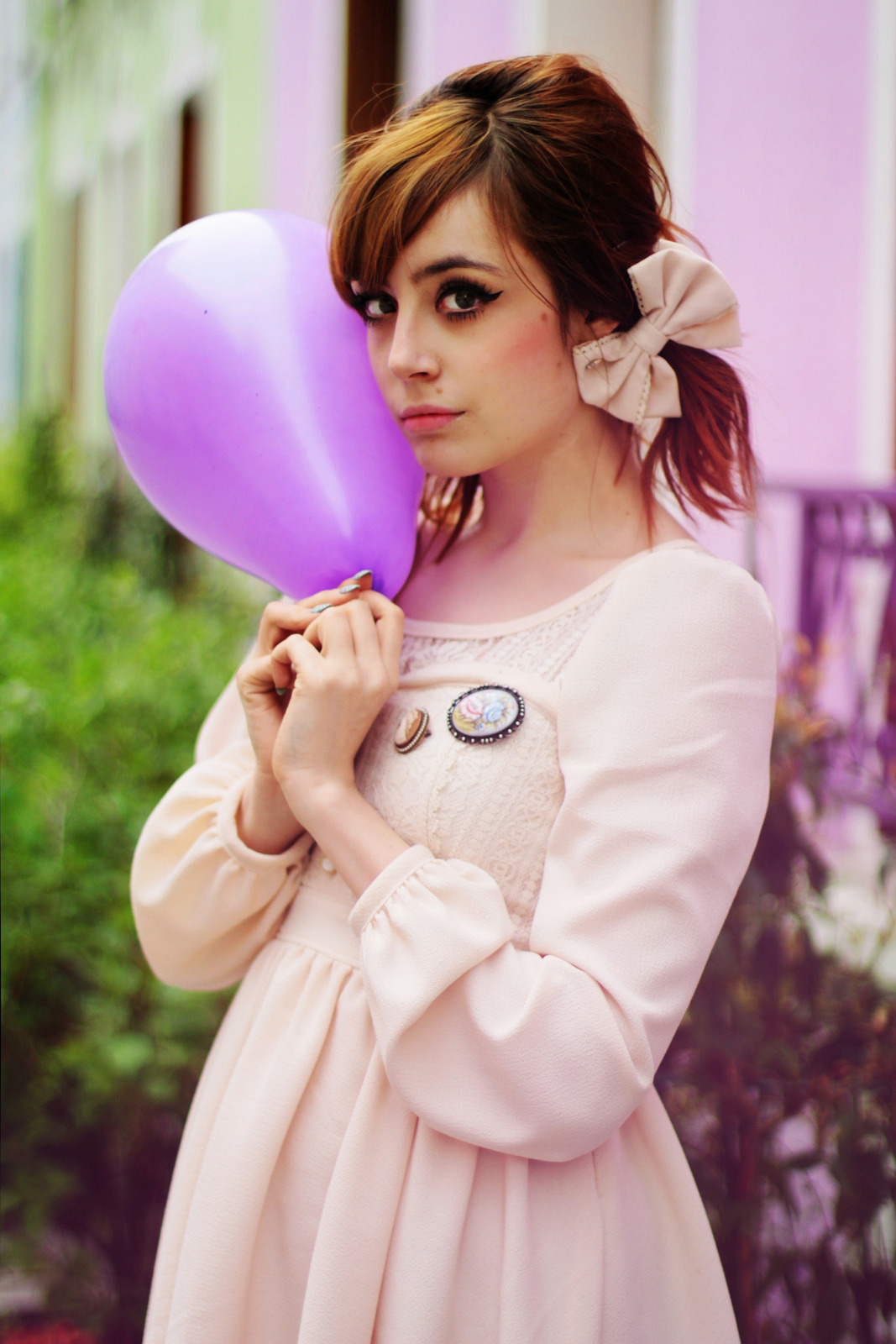

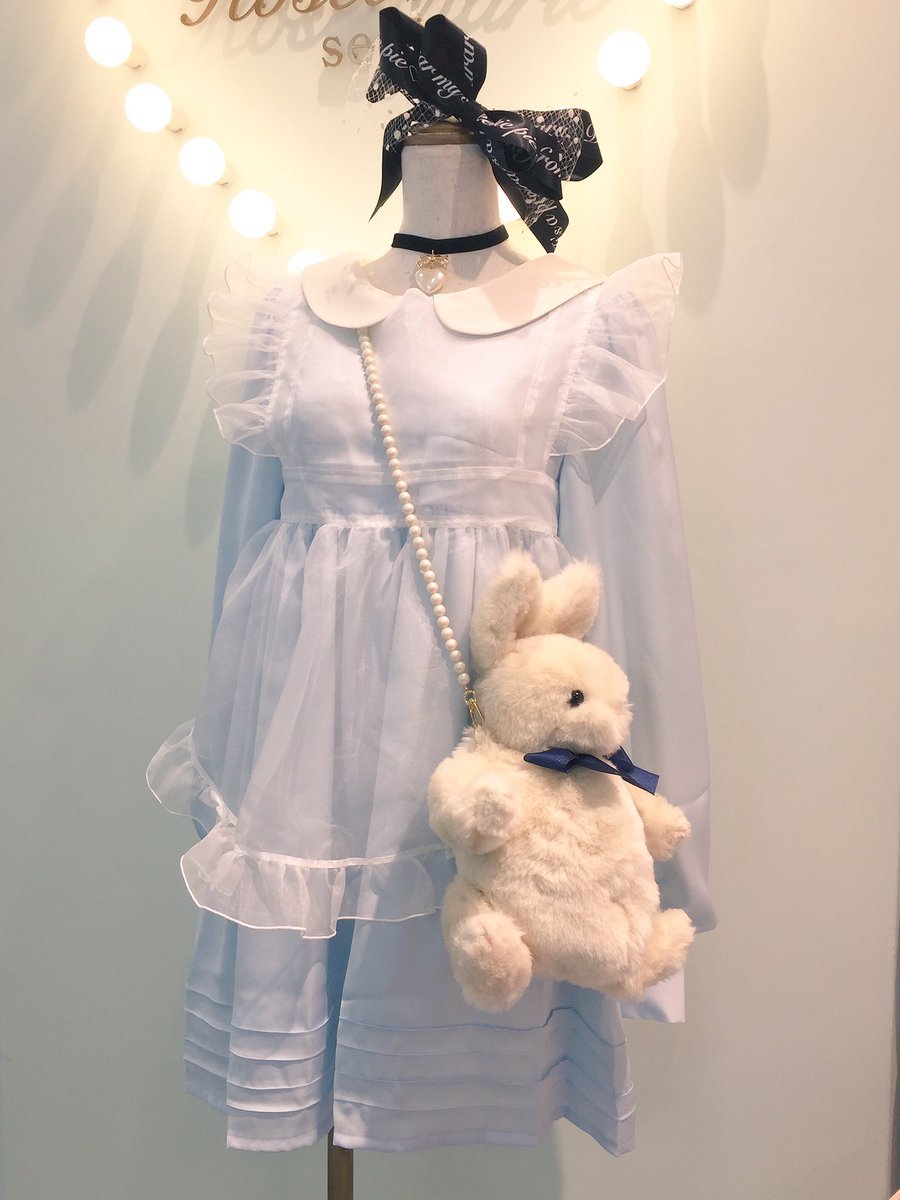
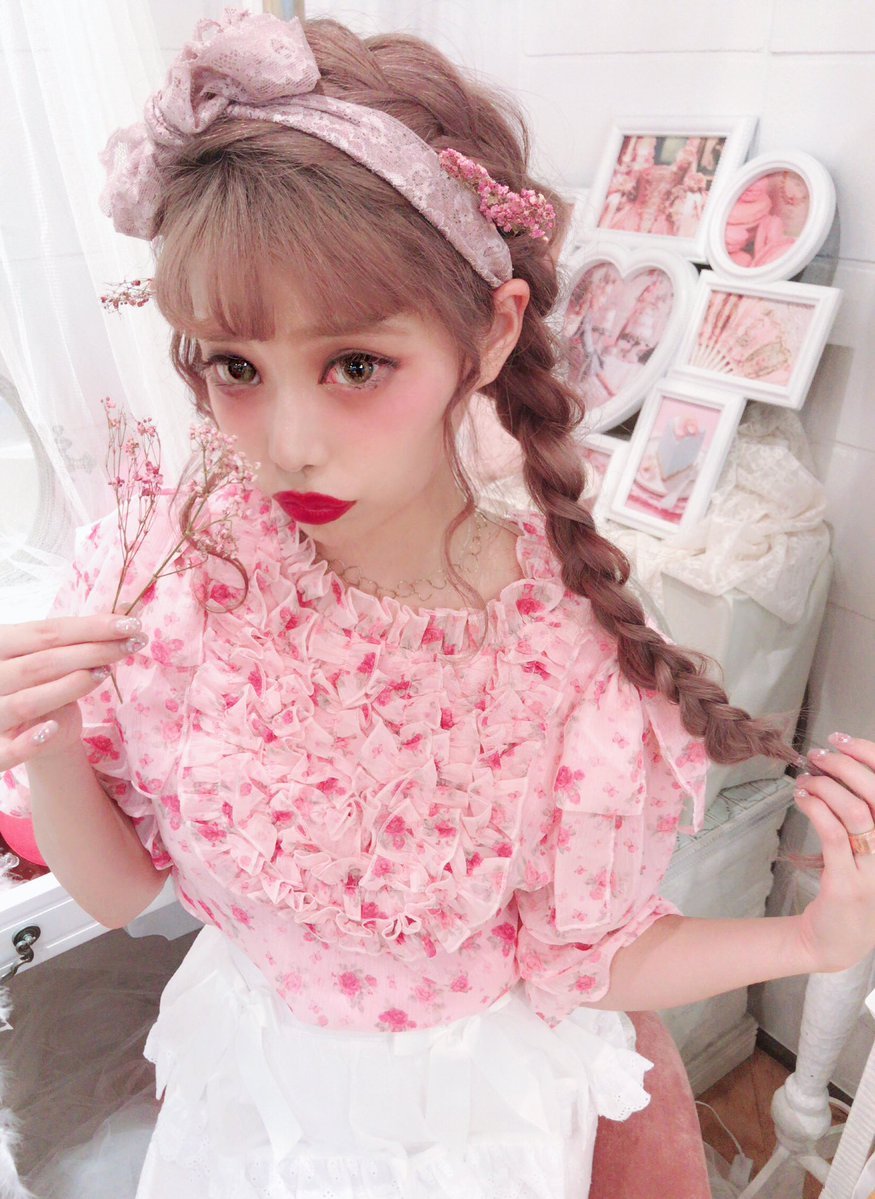
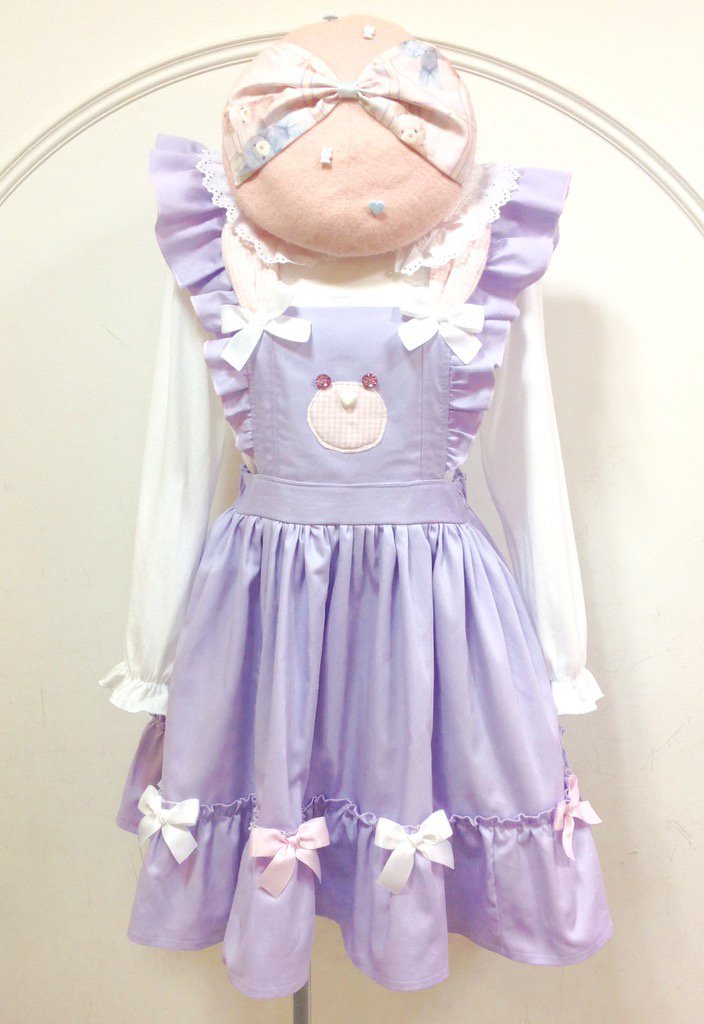
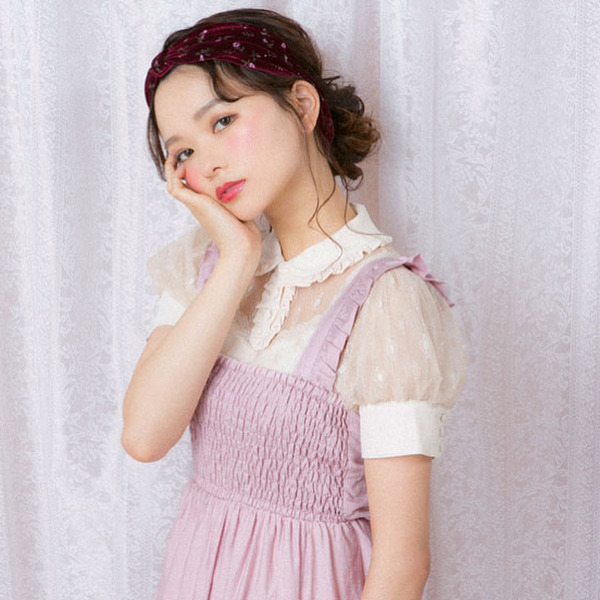
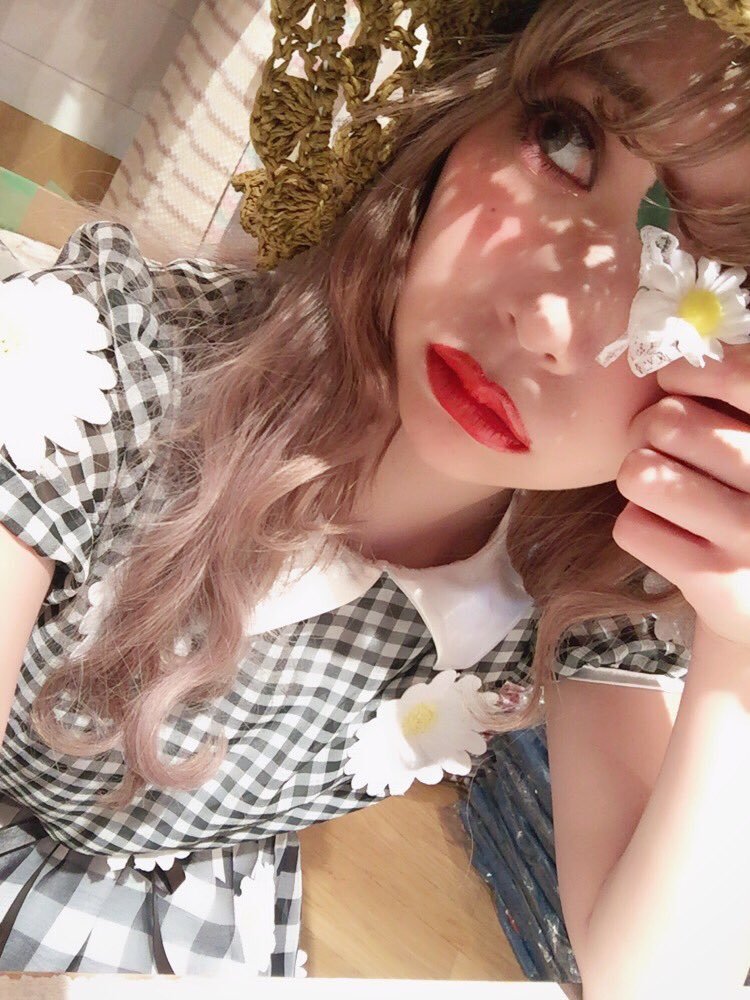
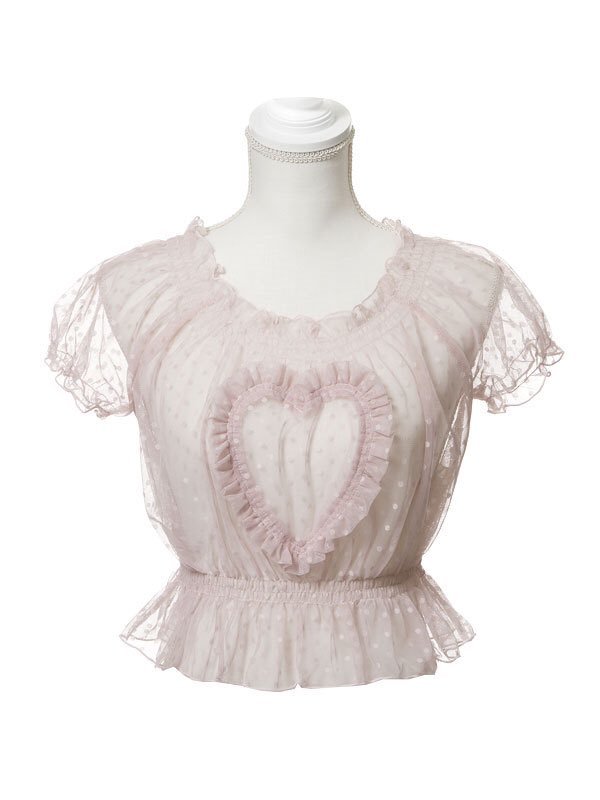
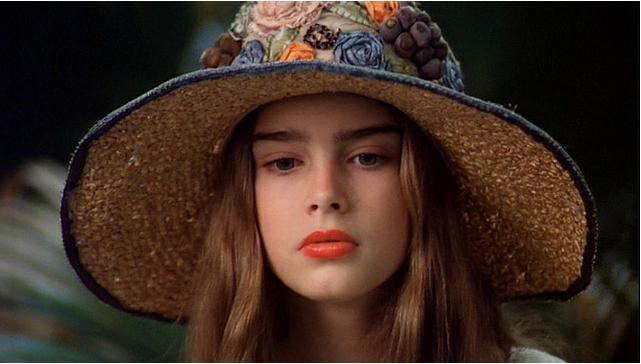
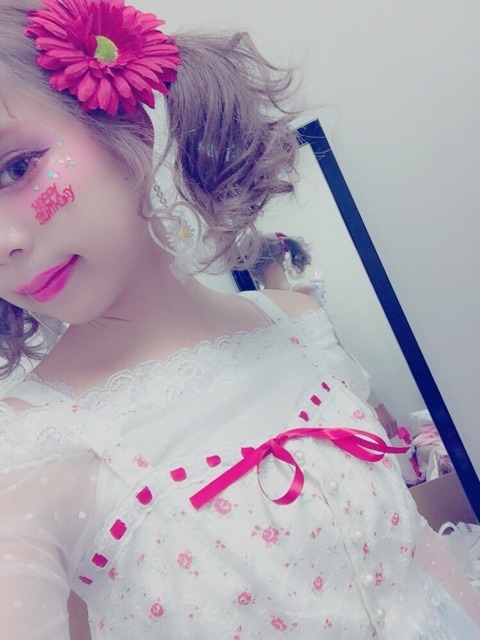
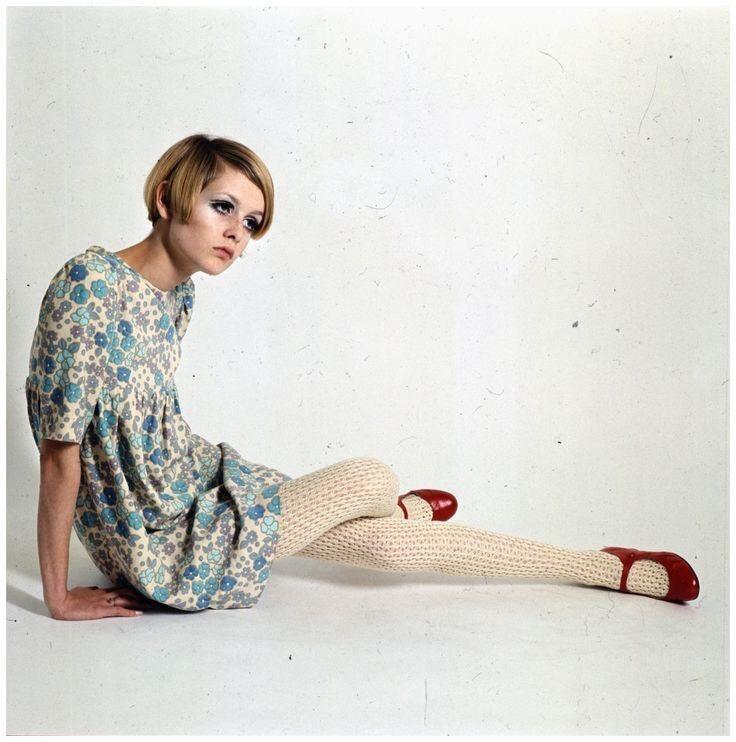
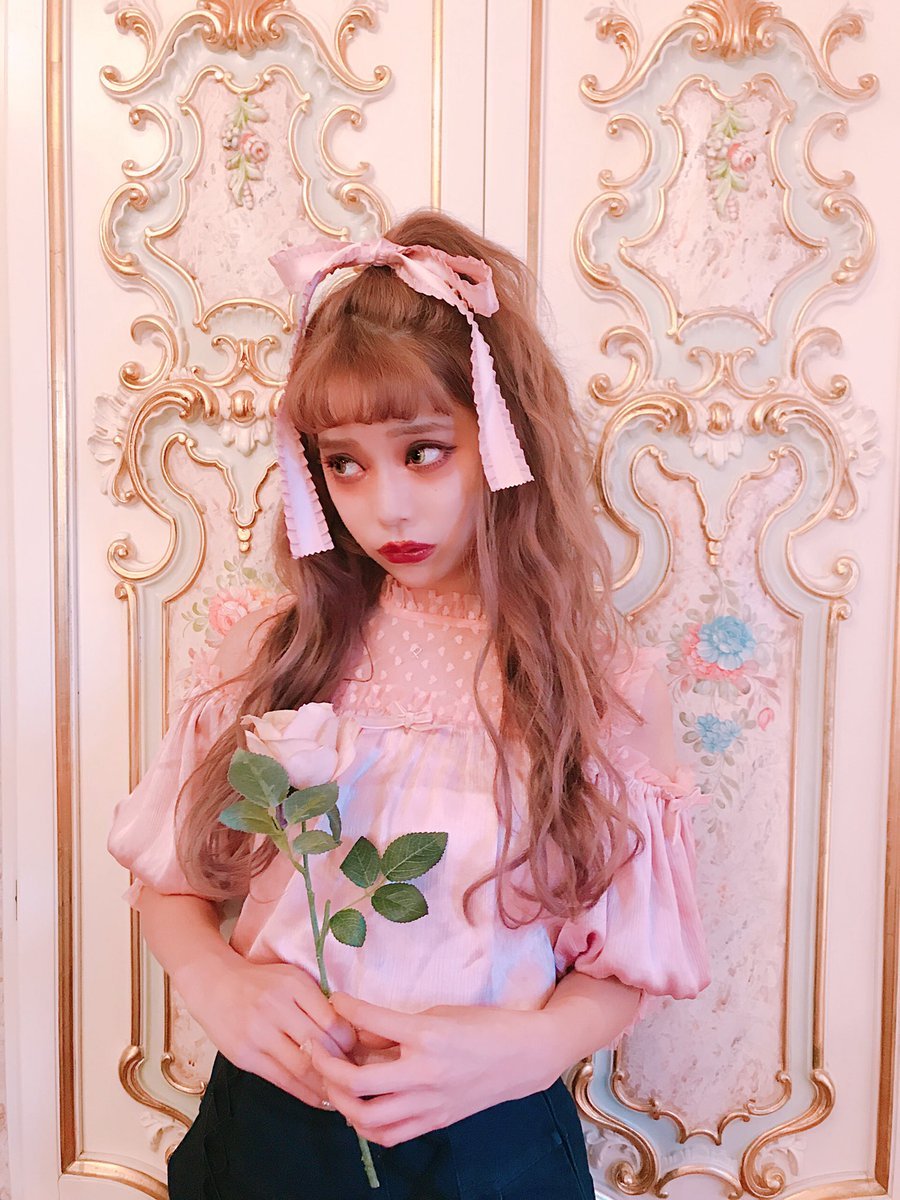
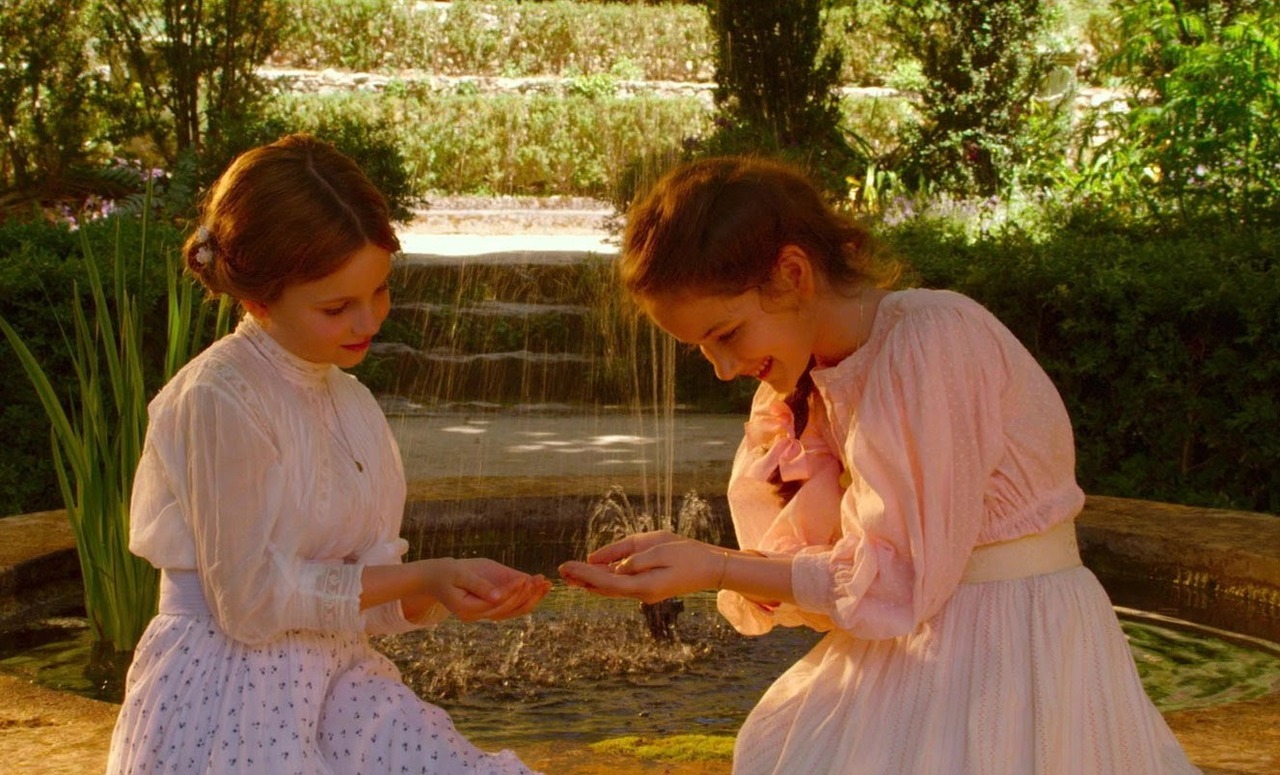
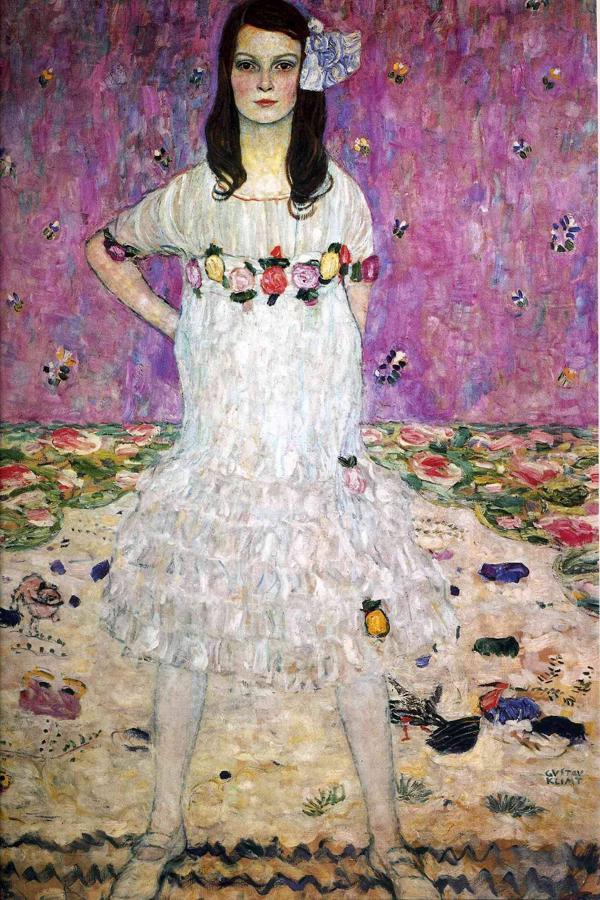
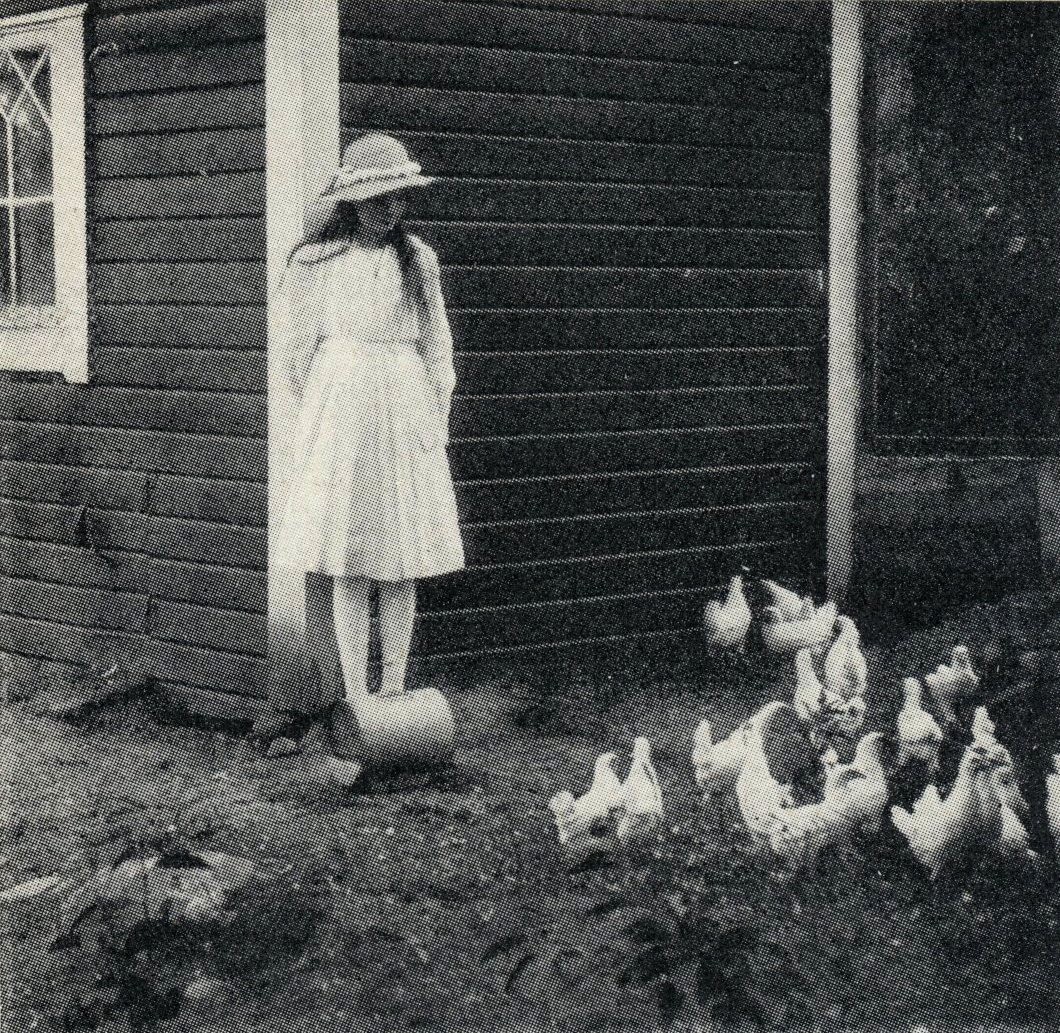
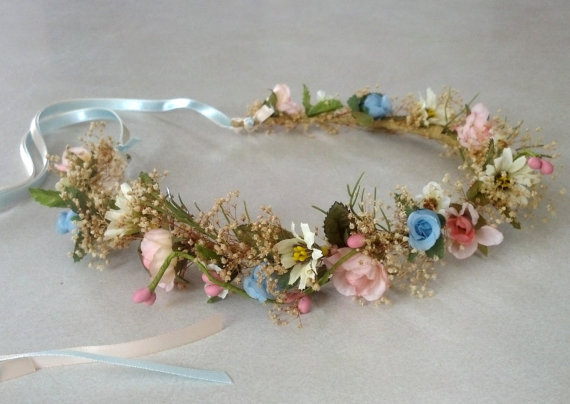
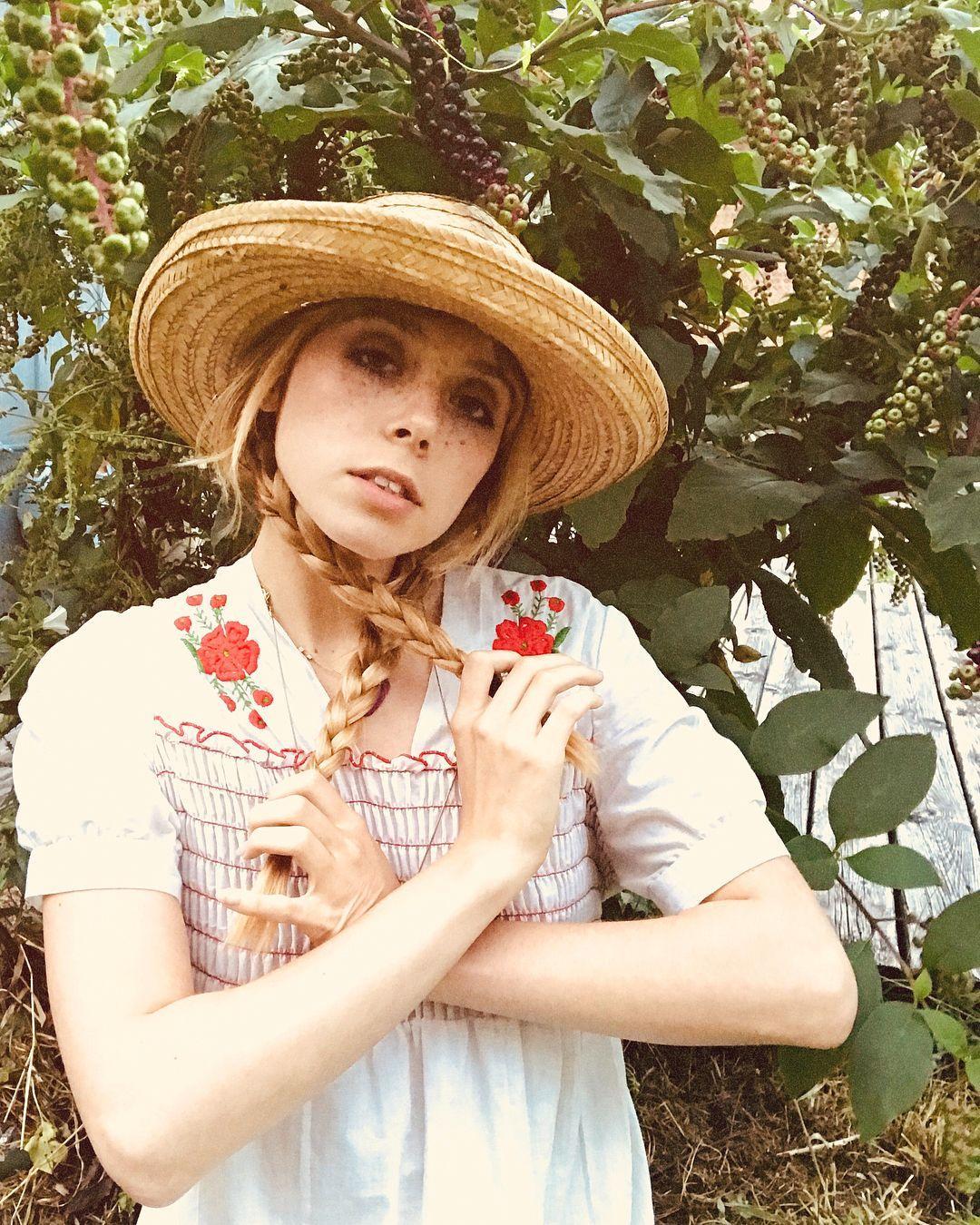
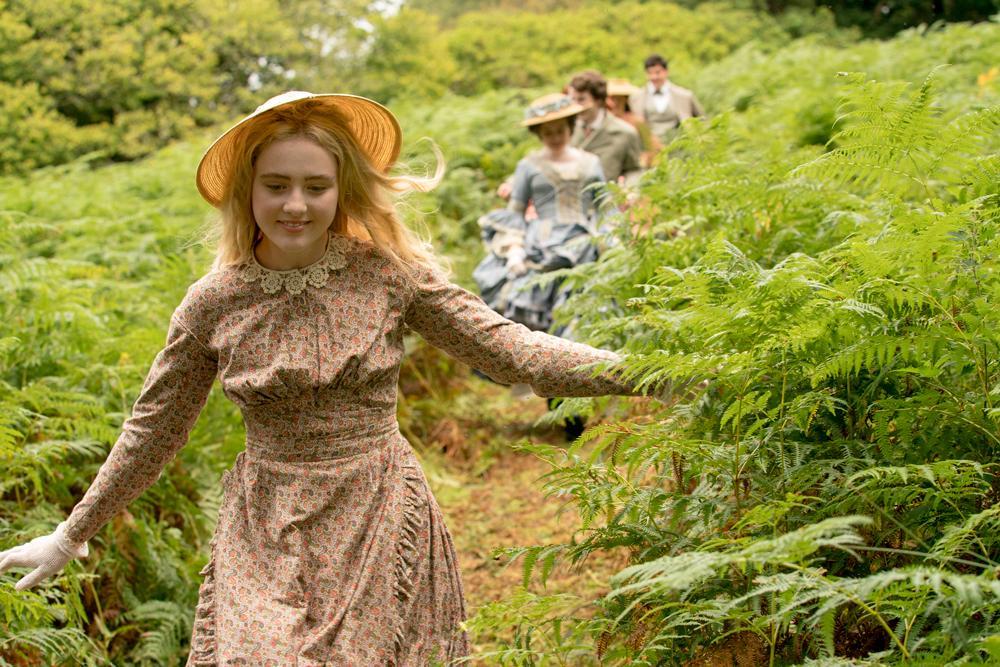
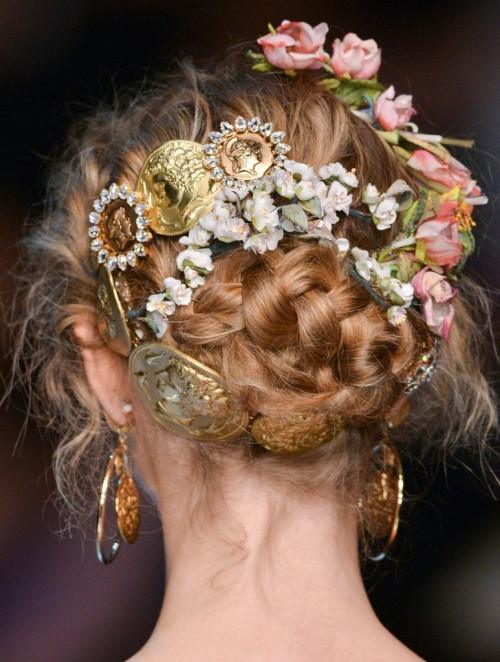
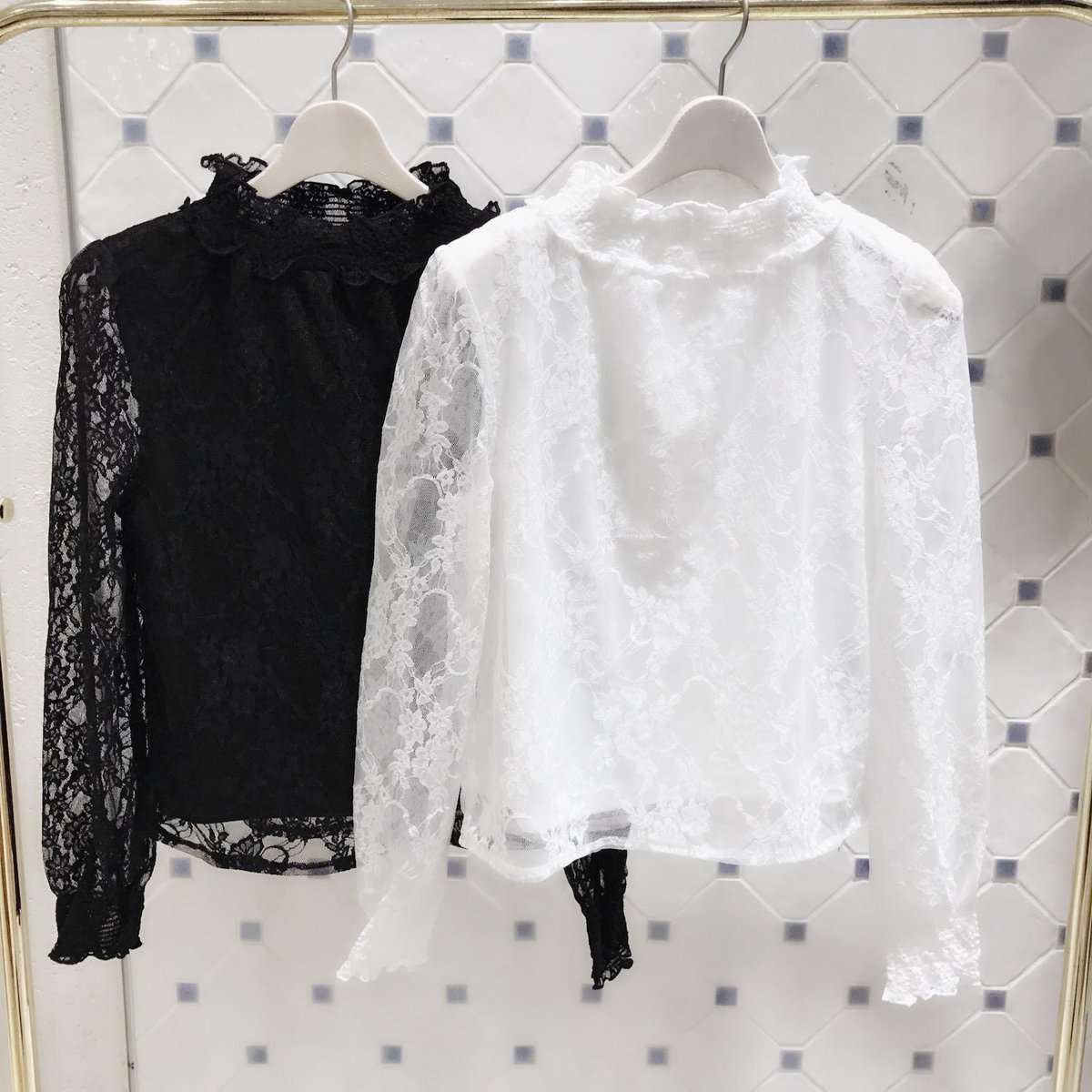
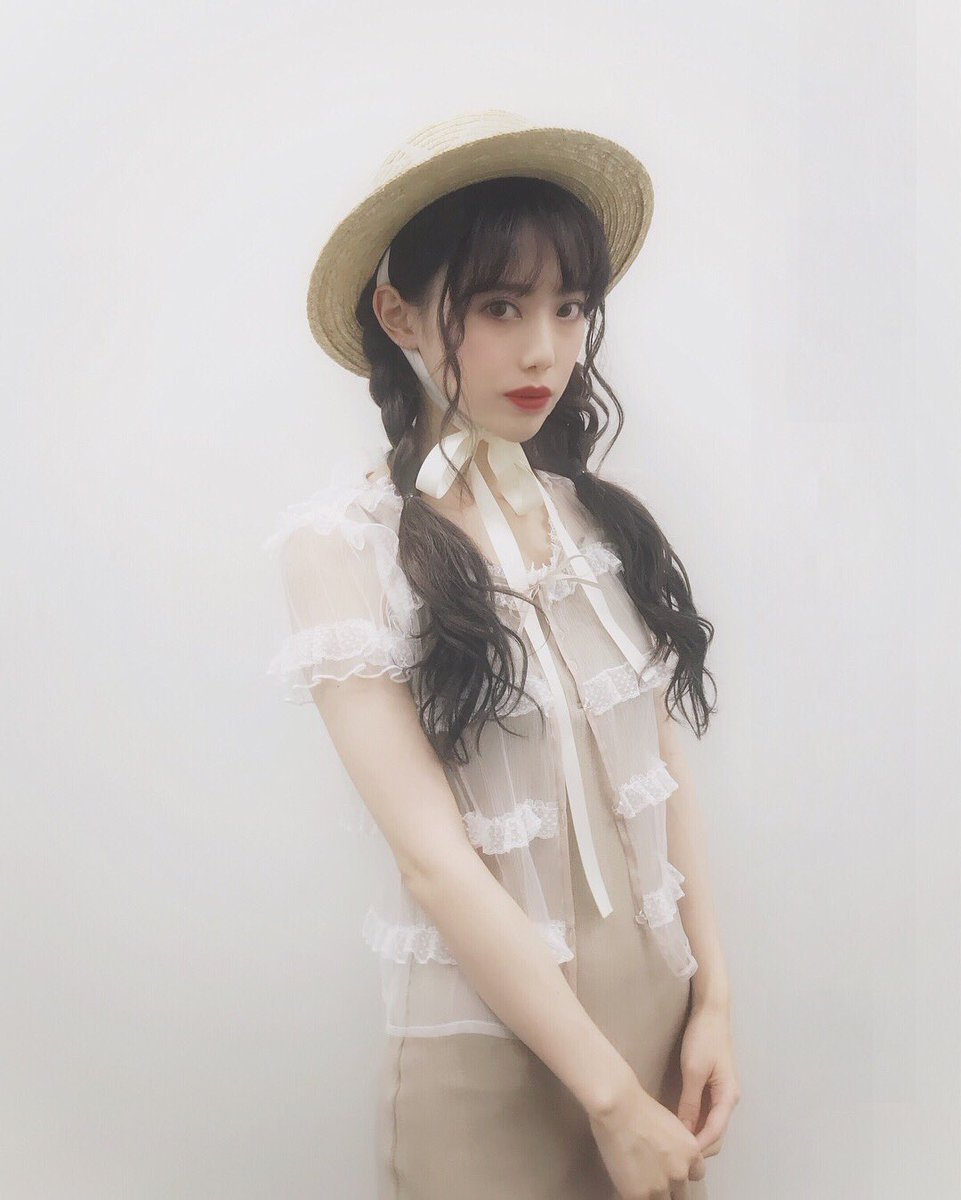
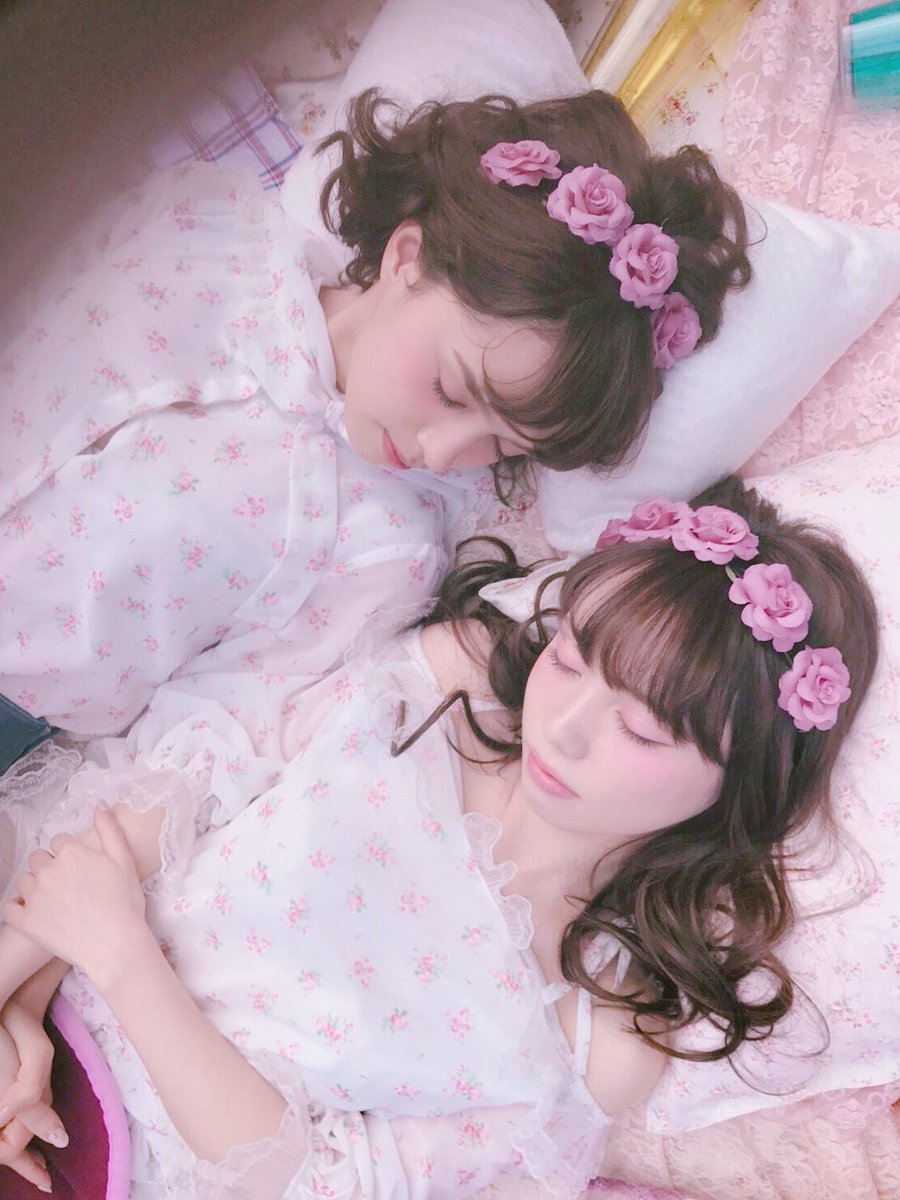
Pic found here.
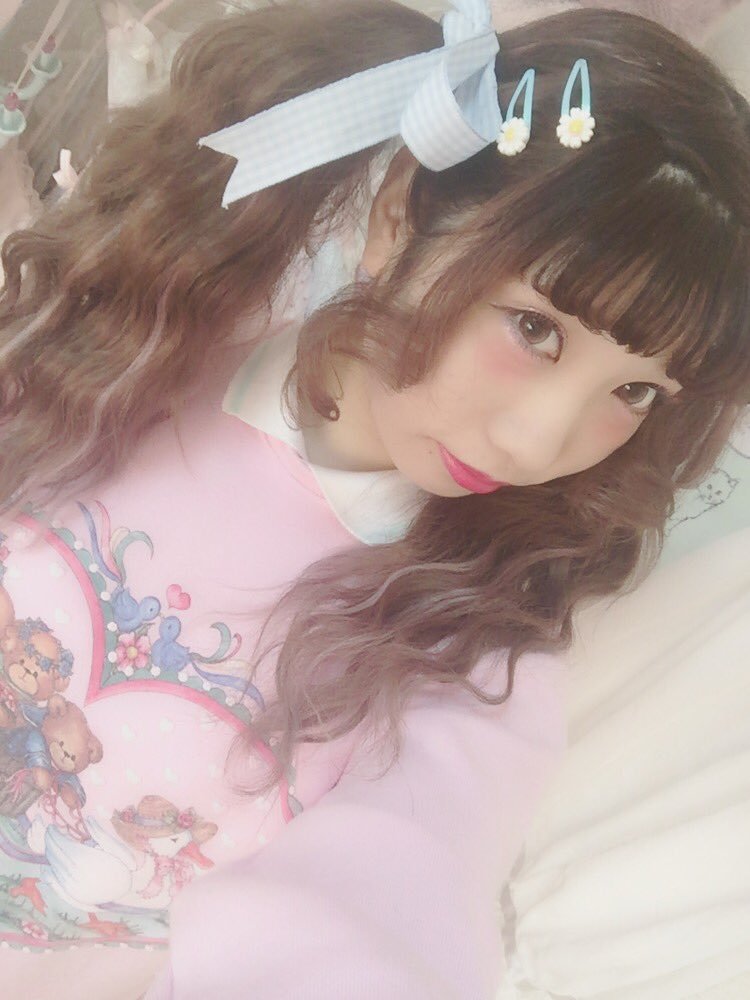
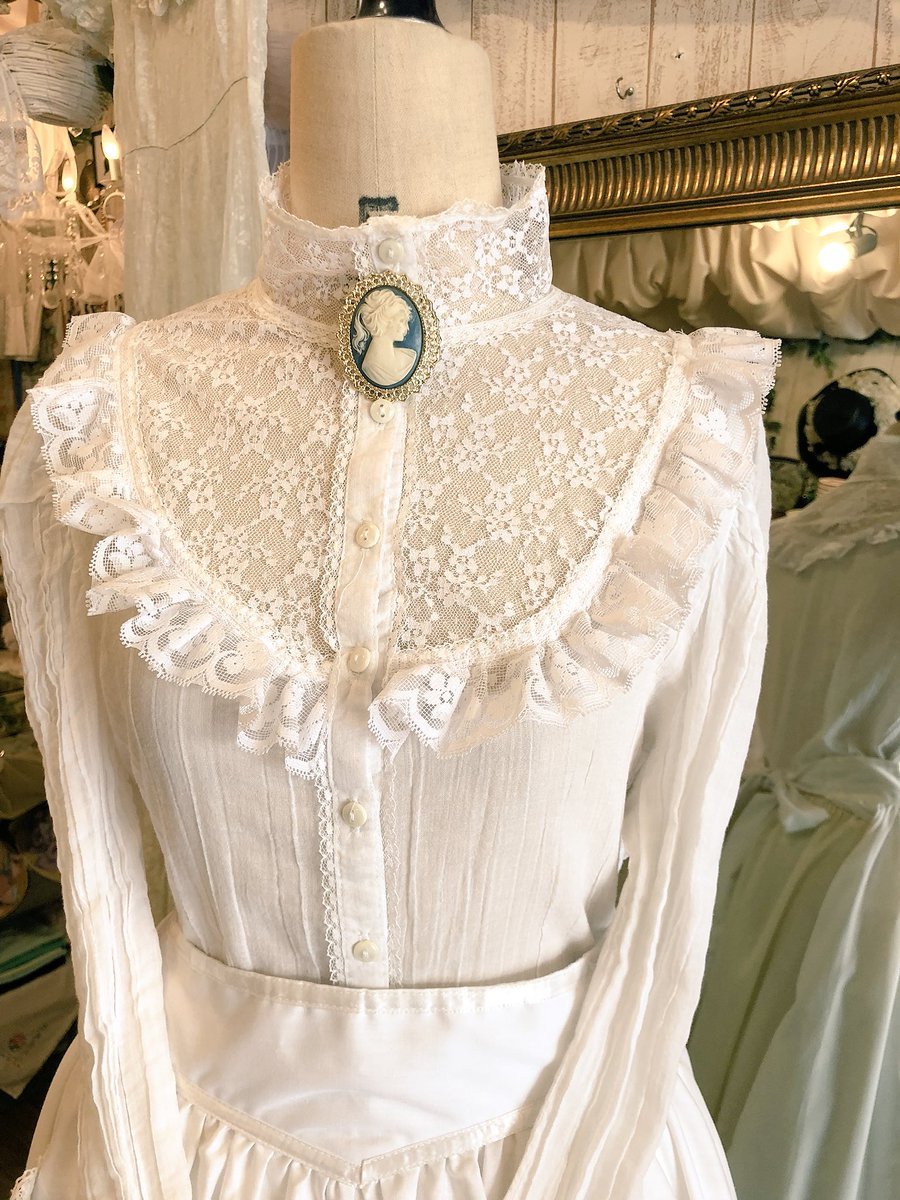
Pic found here.
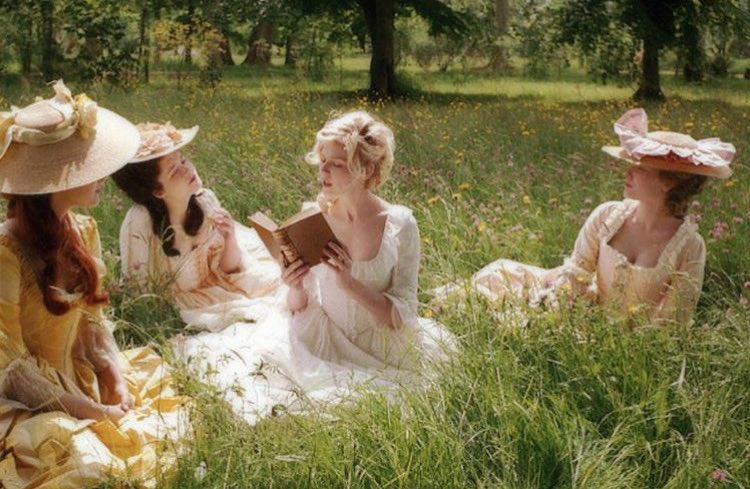
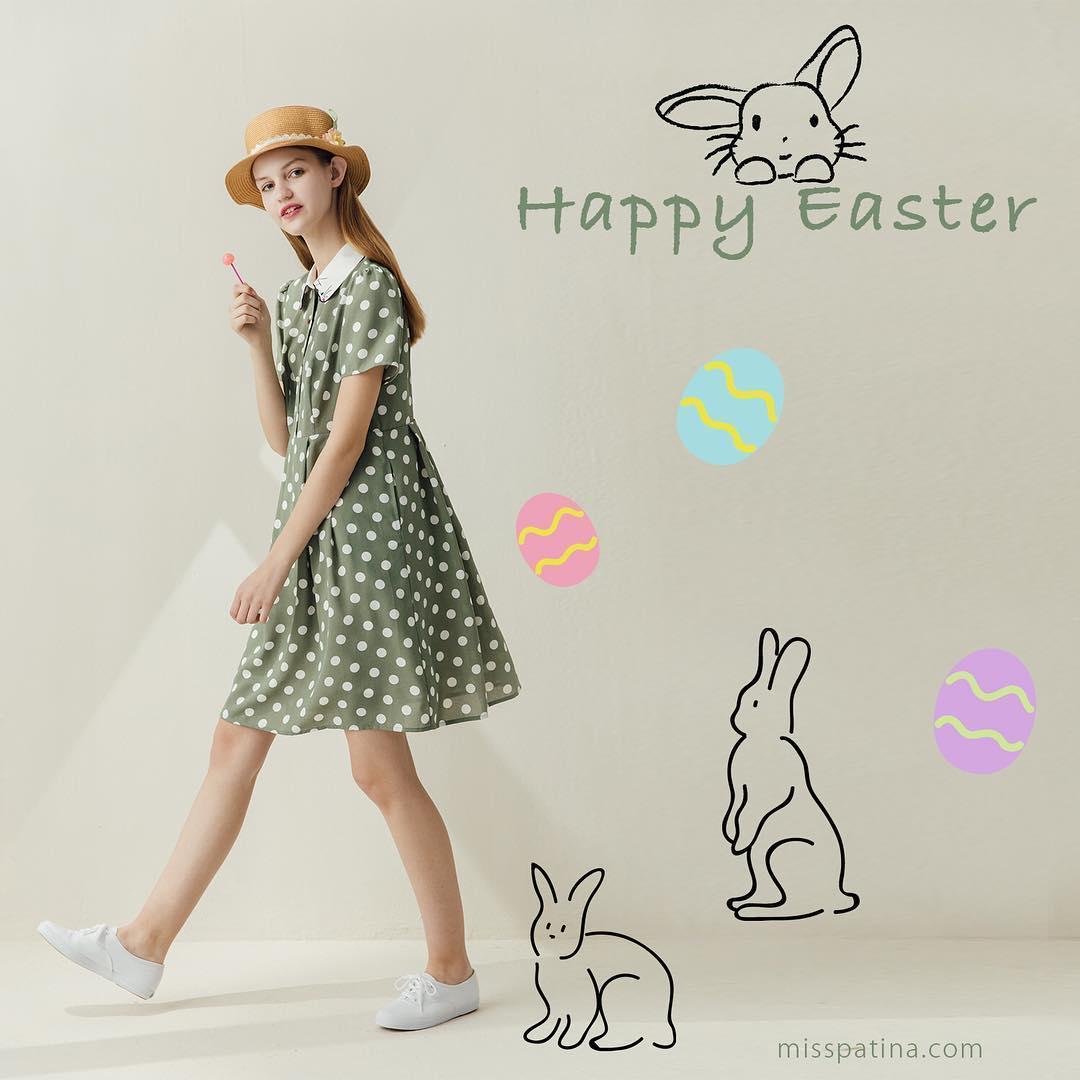
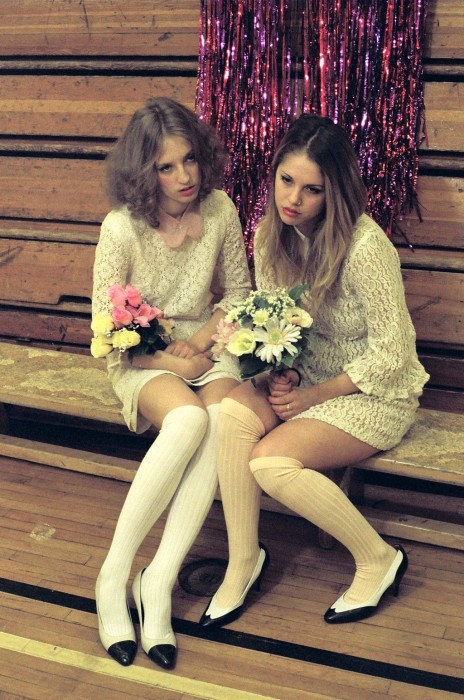
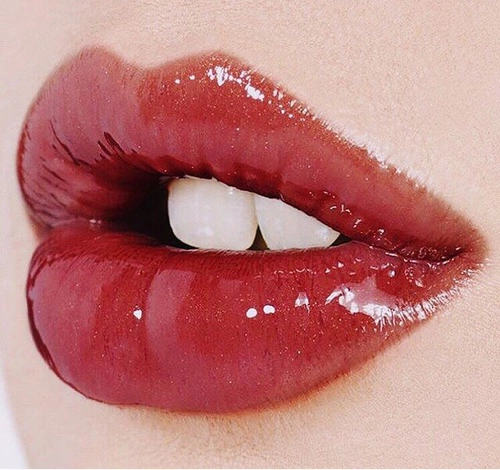
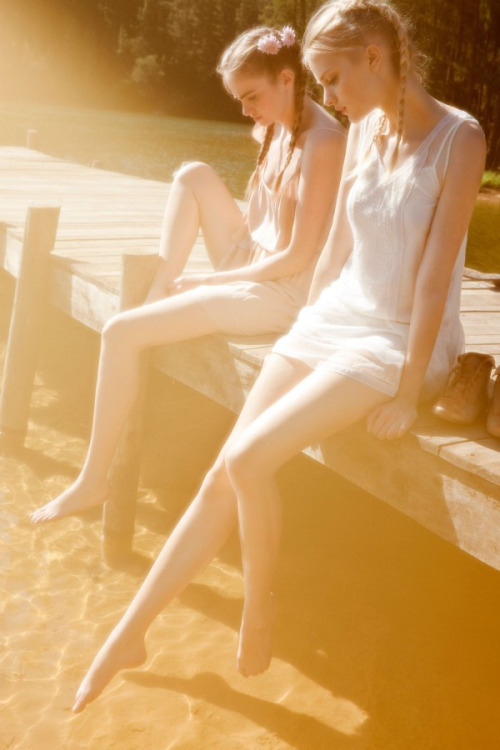
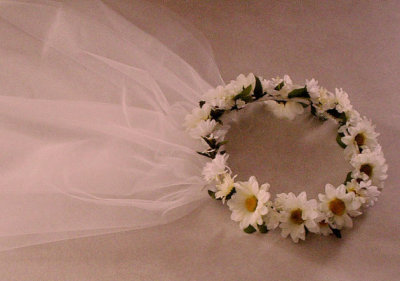
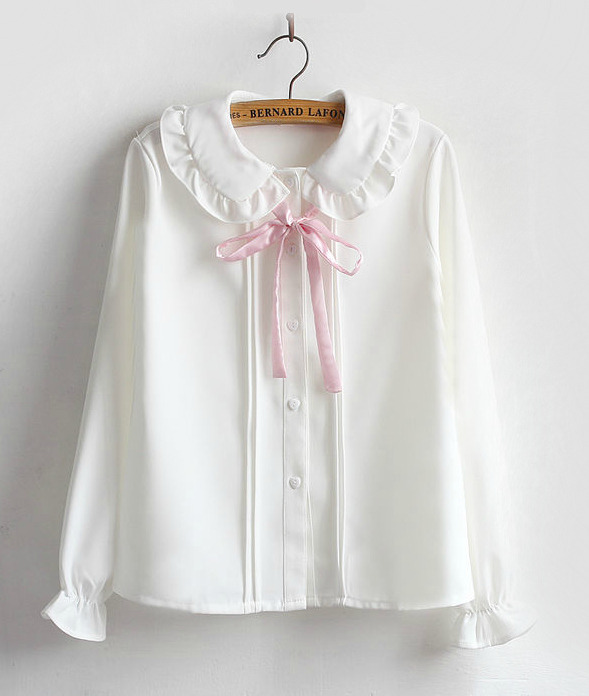

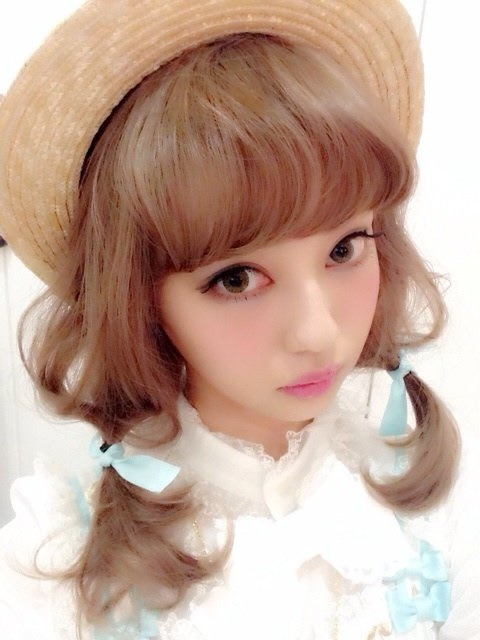
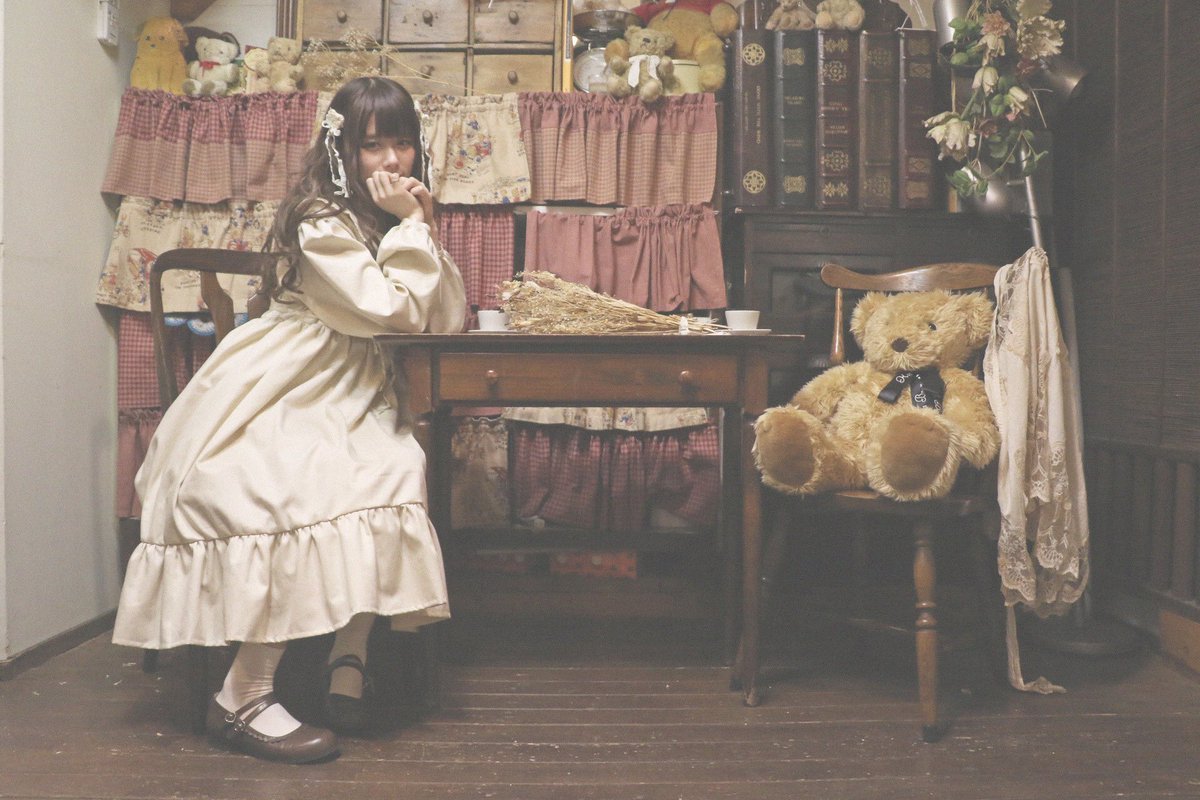
Pic found here.

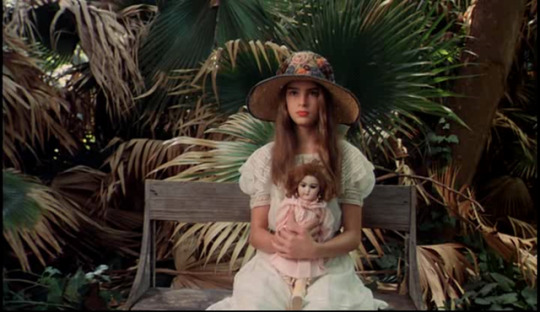
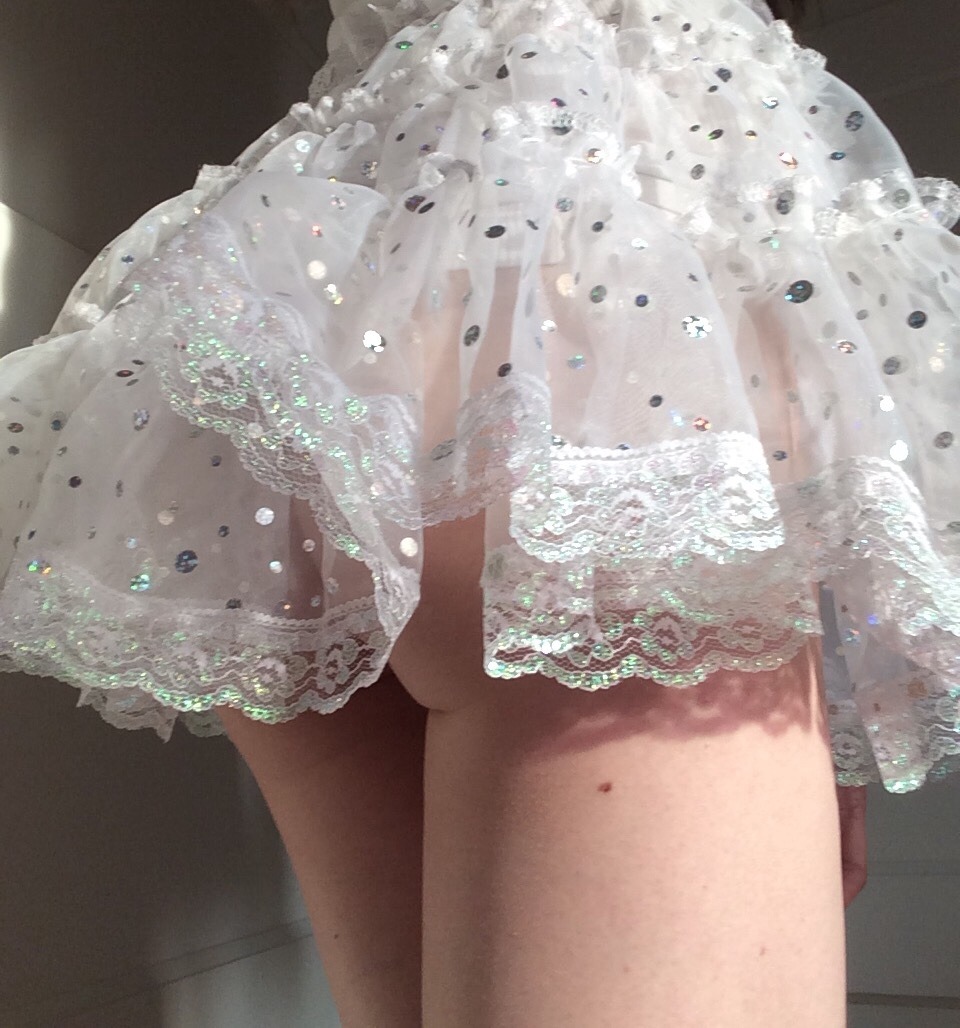
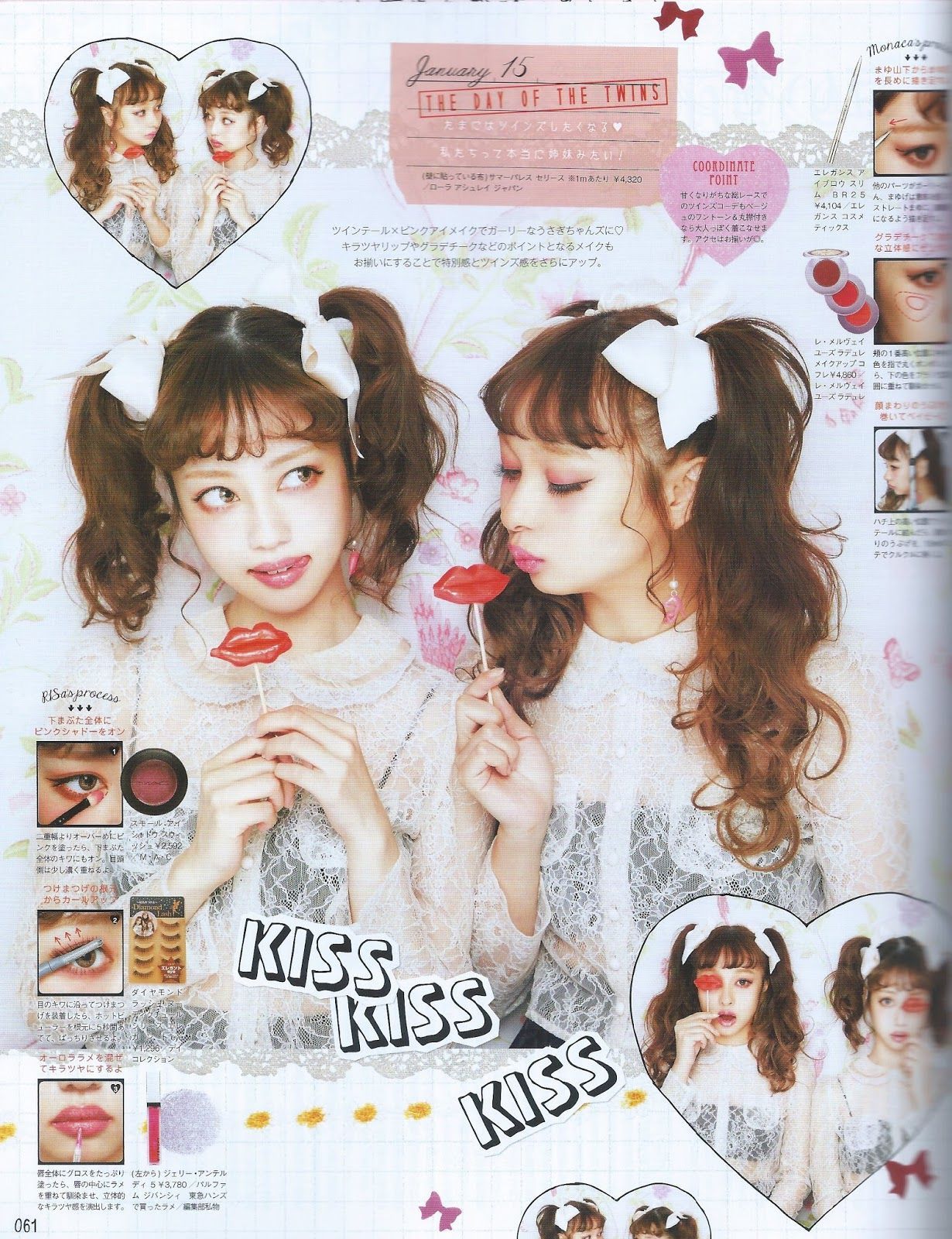
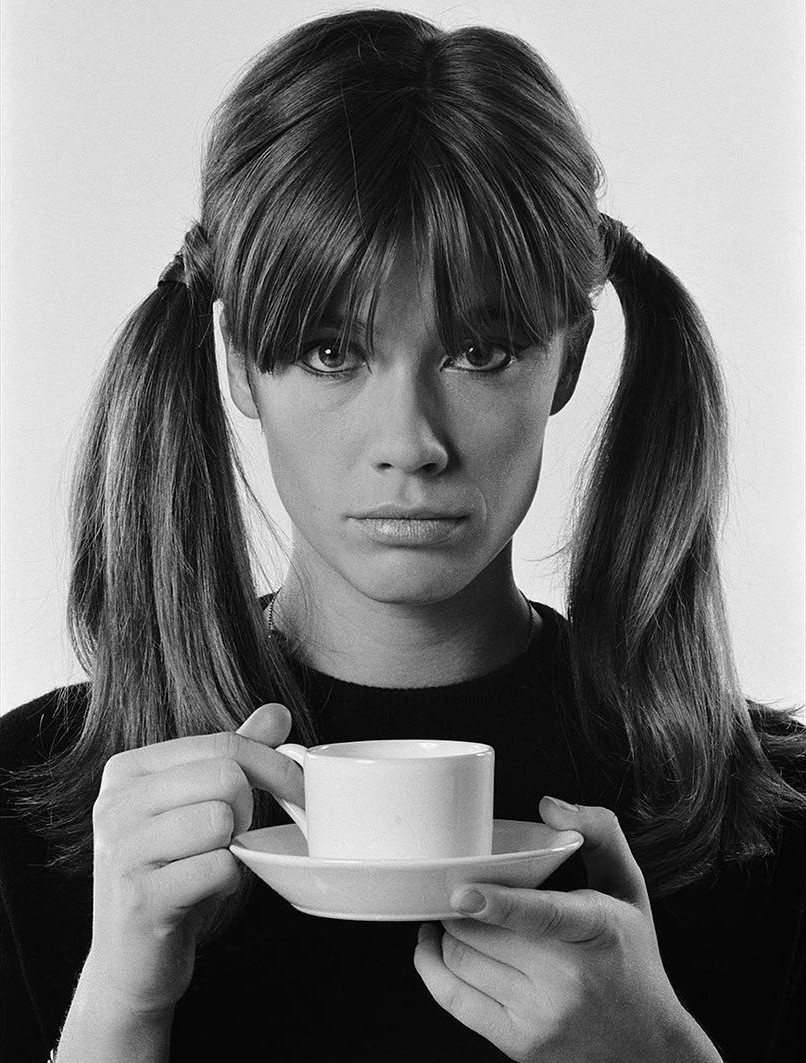
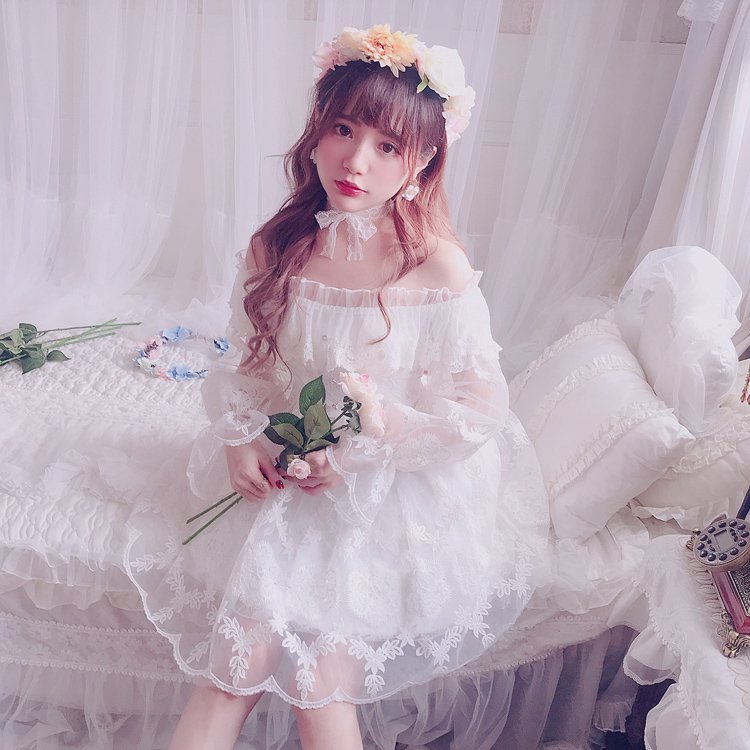
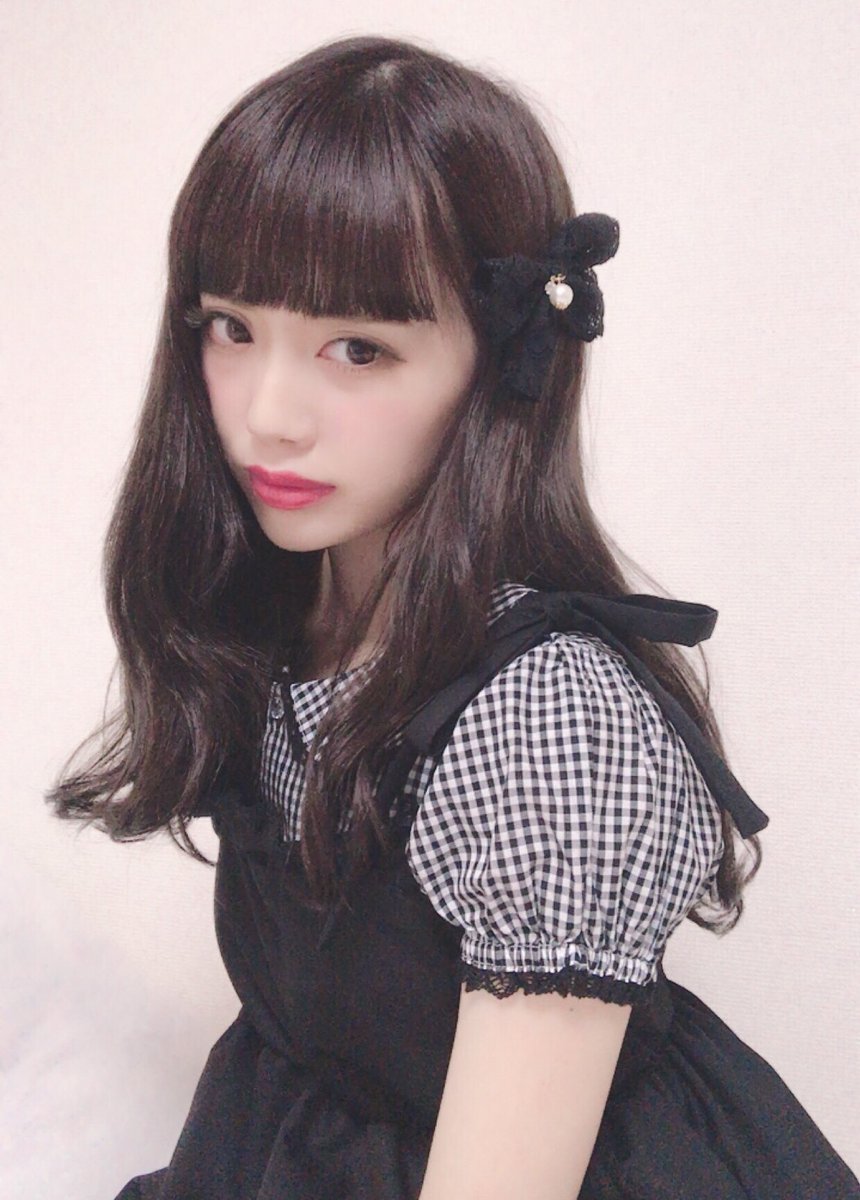
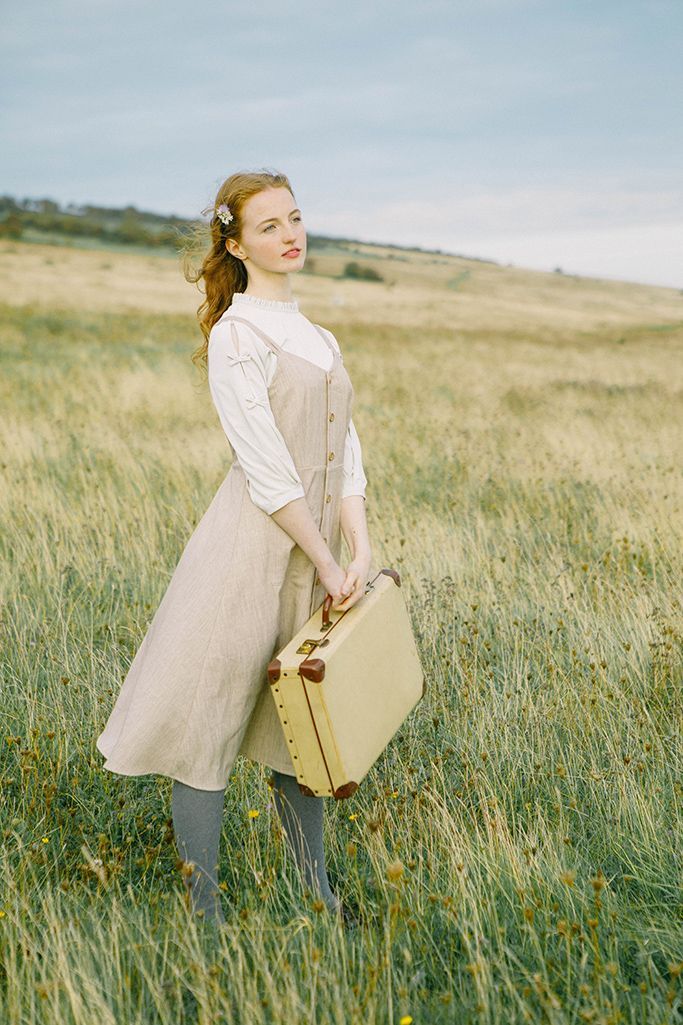
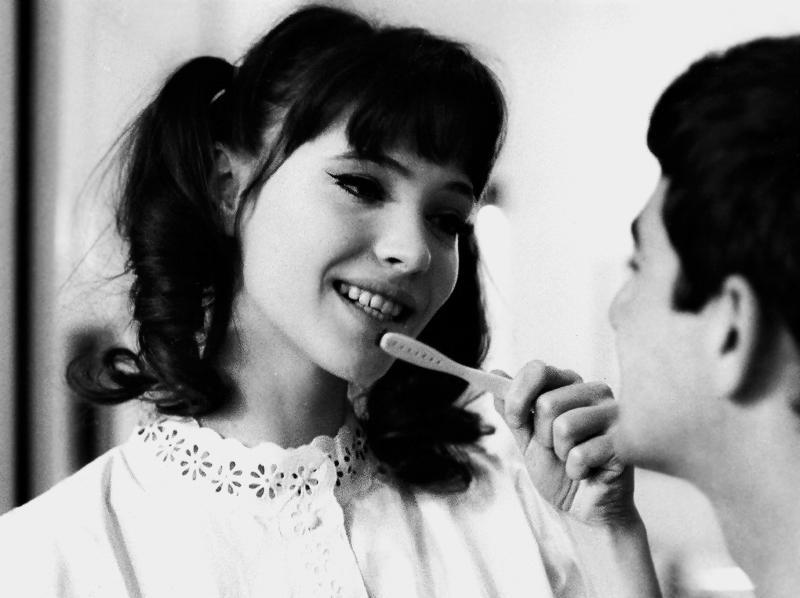
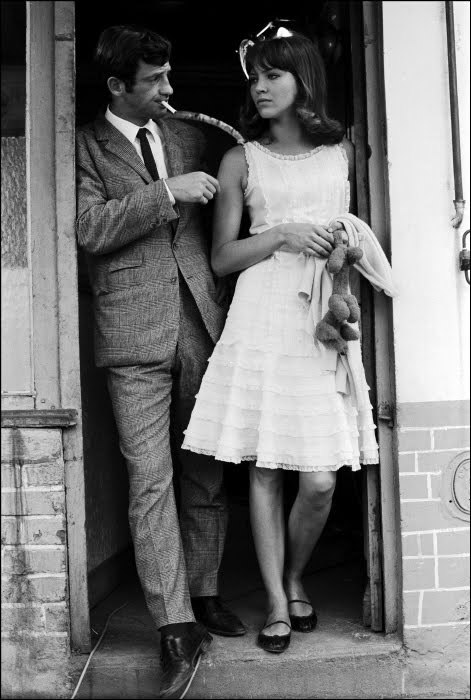
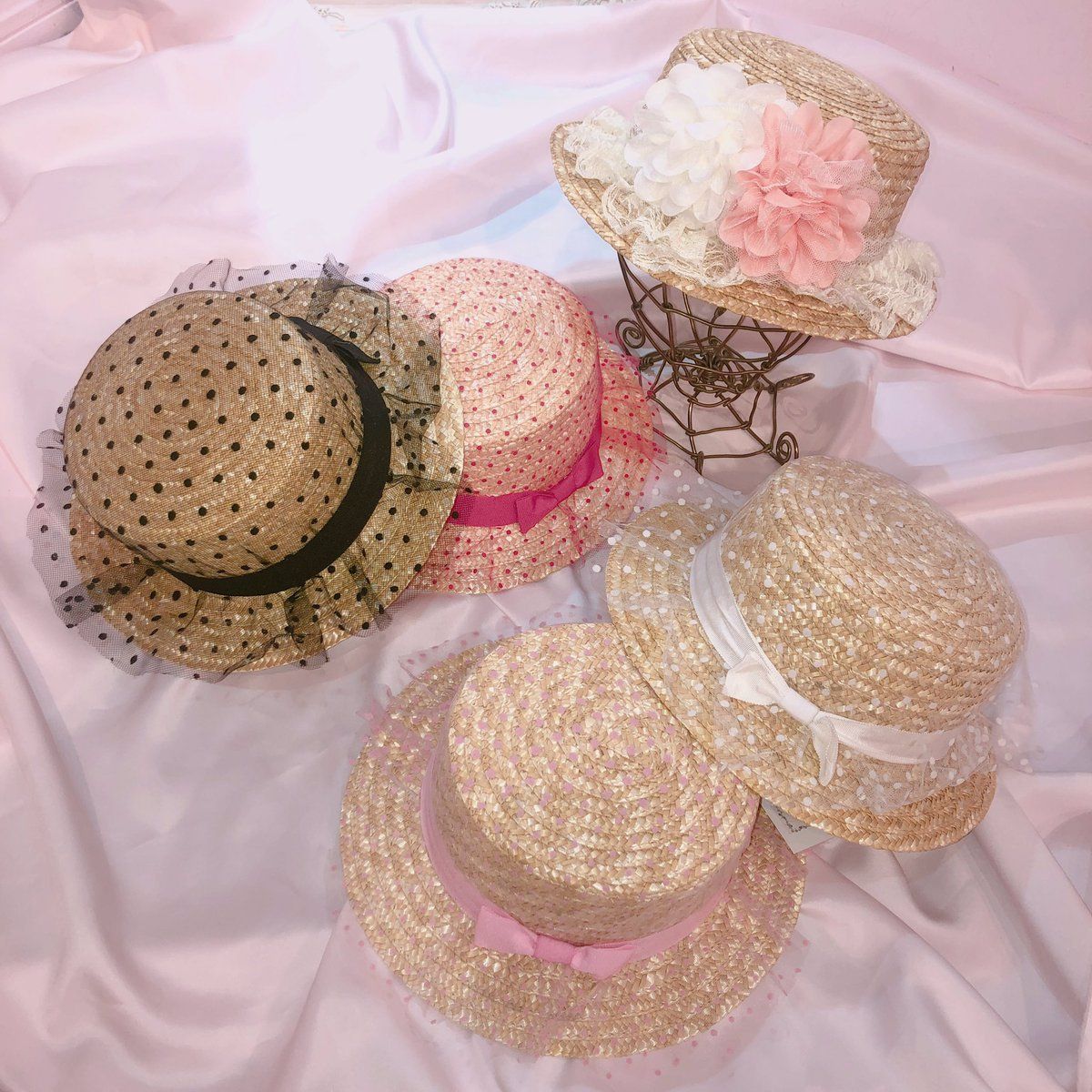
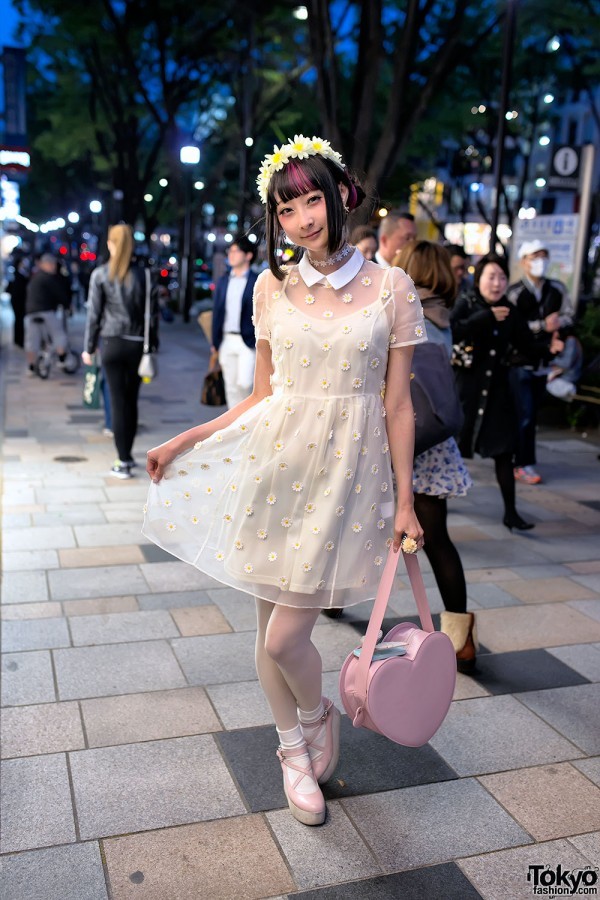
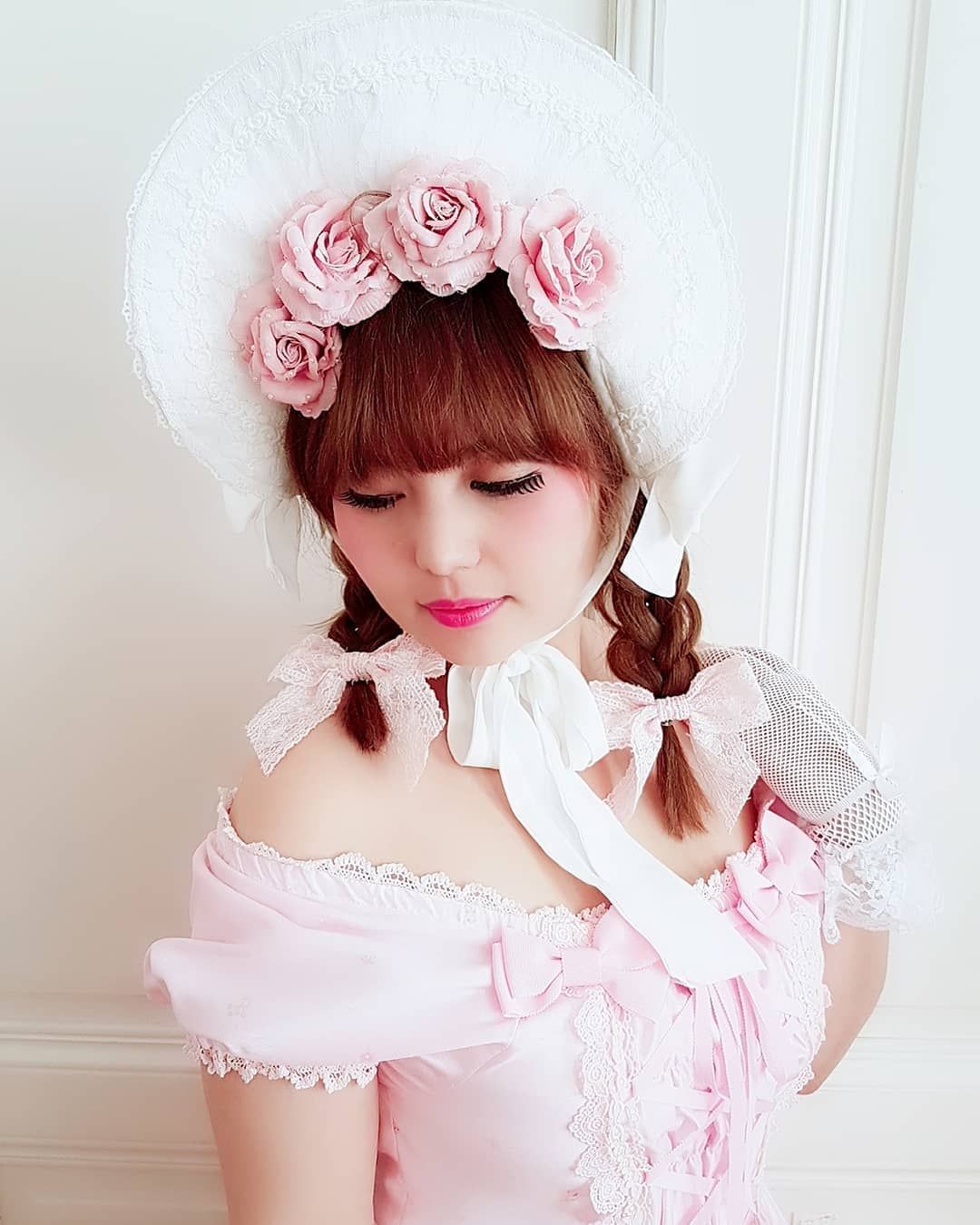
Pic found here.
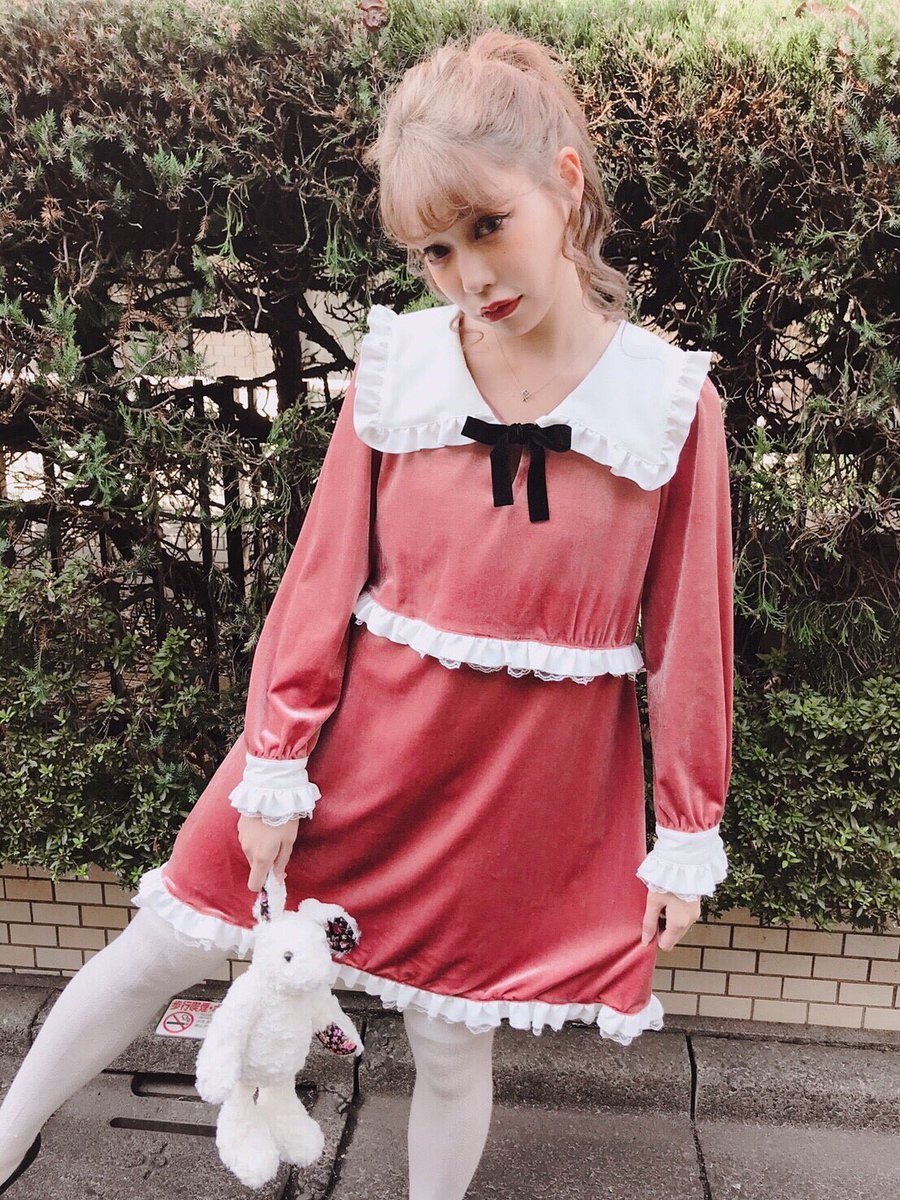
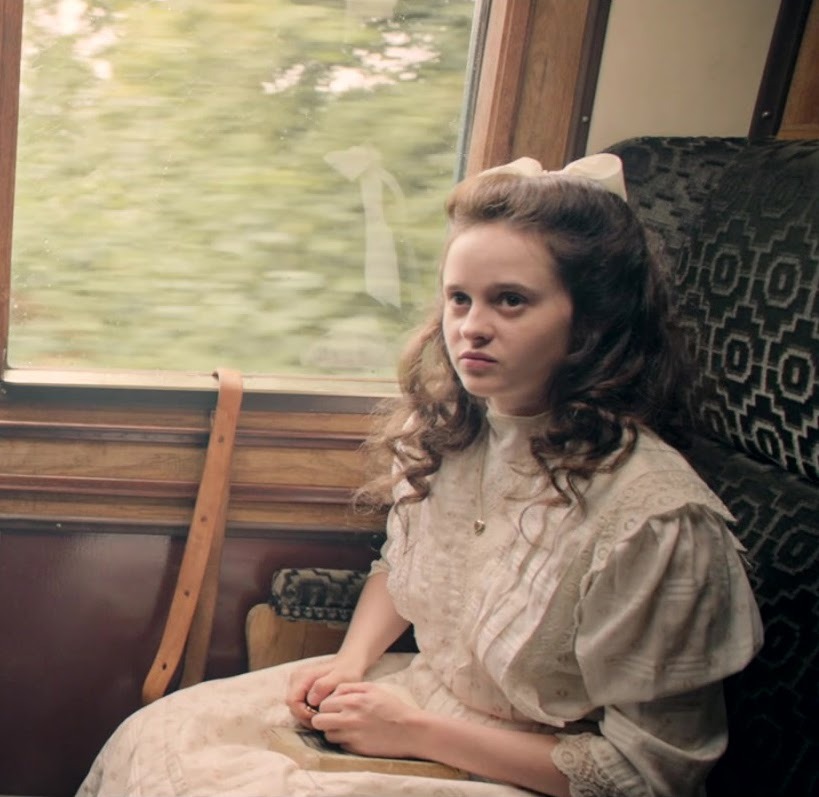
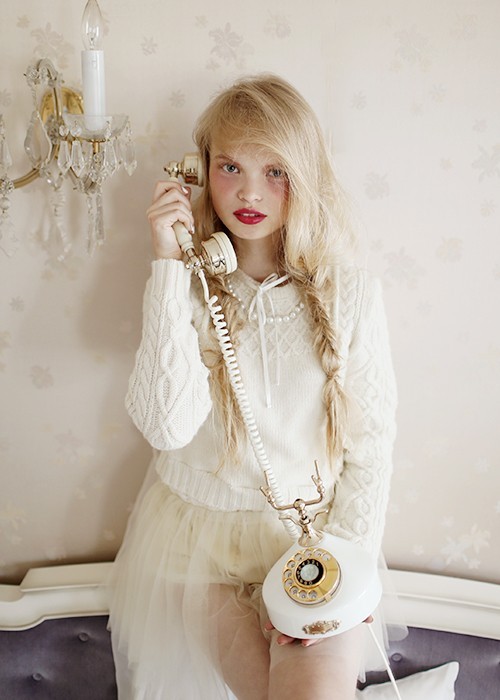
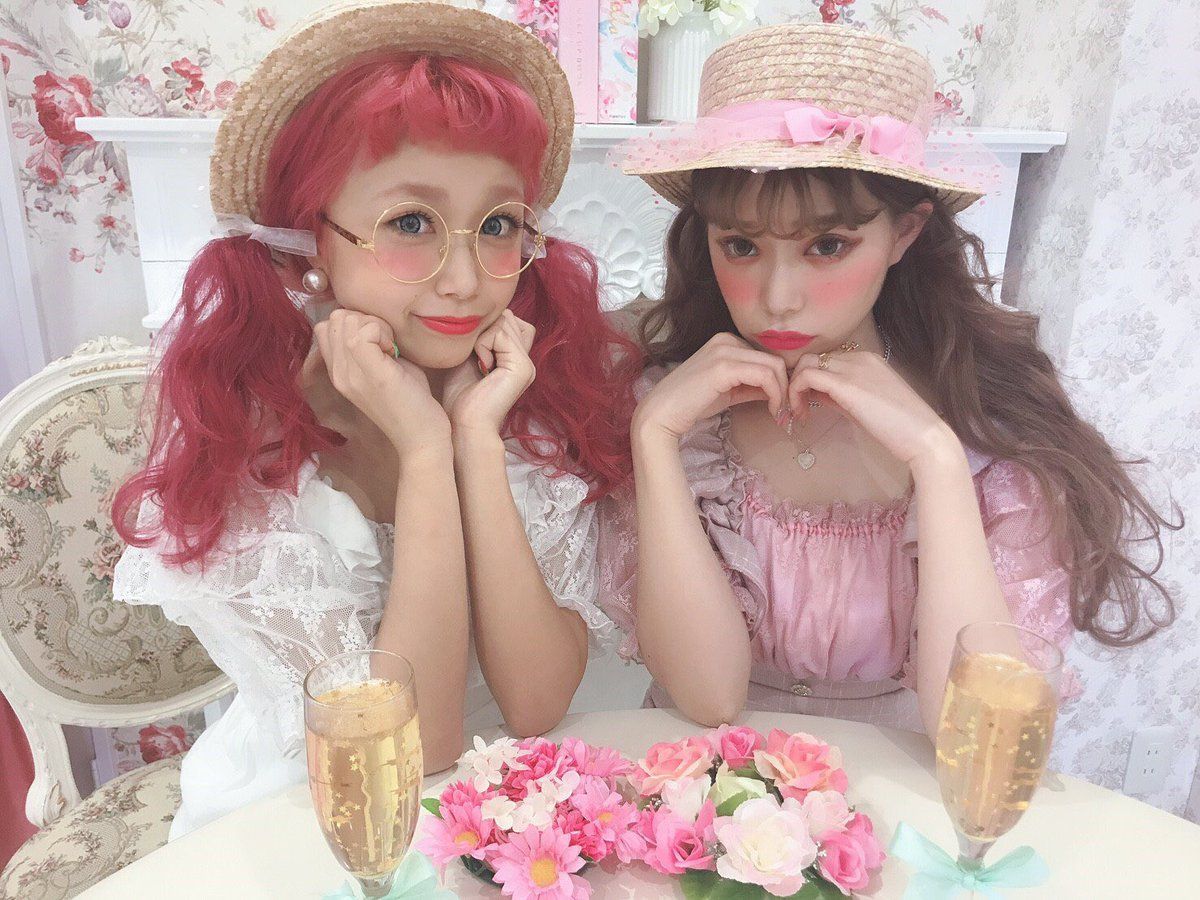
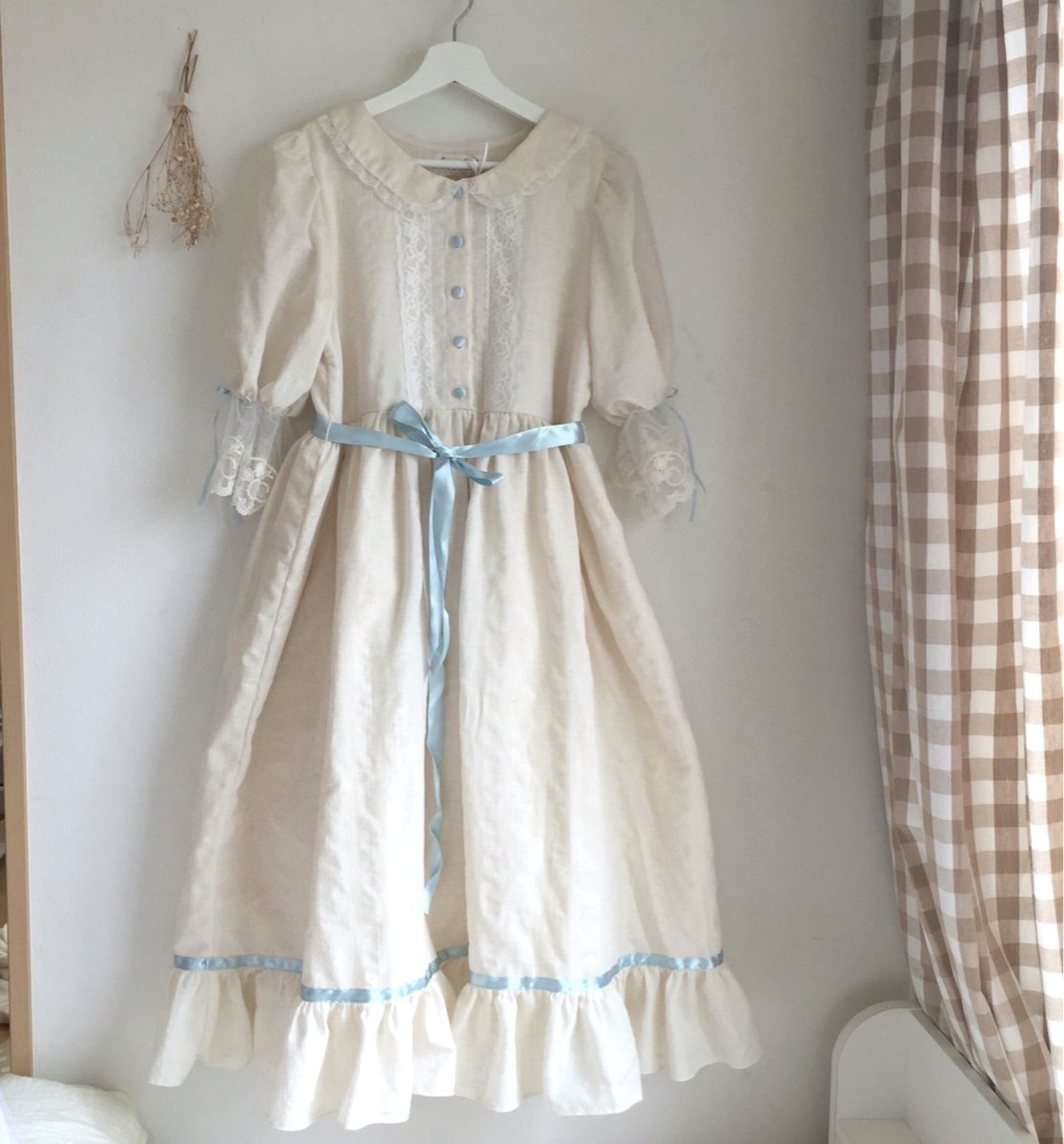
I do not dress as a Lolita, but I sure love adding a bit of that cuteness to my wardrobe, and I love the style, not only because it’s cute, slightly eccentric and a bit over the top, but because it is heavily inspired by Victorian fashion. And I made a few collages to illustrate the point.
Contemporary Lolita fashion, which originated in Japan in the 1980s and 1990s but has since gained world wide popularity and attention in fashion magazines, is heavily inspired by certain eras of western fashion – mostly the Victorian fashion or the period from 1830s to early twentieth century. So, it’s a Japanese style inspired by the west, or, more specifically, it’s a romantic vision of the western fashion as seen by the Japan. Lolita fashion isn’t the only occurrence when the Japanese take something from western culture or fashion, twist it around and turn into something fascinating and new, and cover it with a thick layer of cuteness. The aim of Lolita fashion is to look cute or “kawaii” and girly, but there’s also an emphasis on modesty and refinement; nothing tacky, too revealing or too tight-fitted would be accepted into Lolita style.
Silhouette
A typical Lolita dress has a tight-fitted bodice and a wide skirt; either a bell-shaped skirt which flares out from the waist down and ends just below knees, or an A-line skirt which is also flared, but more subtly. While the waistlines may wary; natural waistline is by far the most popular choice, but a high waist and an empire waist similar to the Regency era fashion are also common, the skirt is always wide, like an upside down flower in bloom, it is never tight-fitting or short. This silhouette brings to mind the crinoline dresses from the mid nineteenth century, but they were floor length, while the Lolita dresses are shorter and have more in common with the Victorian fashion for little girls and teenage girls.
Headwear
Lolita headwear tends to be elaborate and distinctly Victorian. Usually a bow or two, but when it comes to bonnets, they are very similar in shape and decoration to the bonnets worn in the early Victorian era, c. late 1830s and early 1840s. Lolita bonnets tend to be even more elaborate, with frills, lace and flowers, and not to forget the ribbons that tie under the chin.
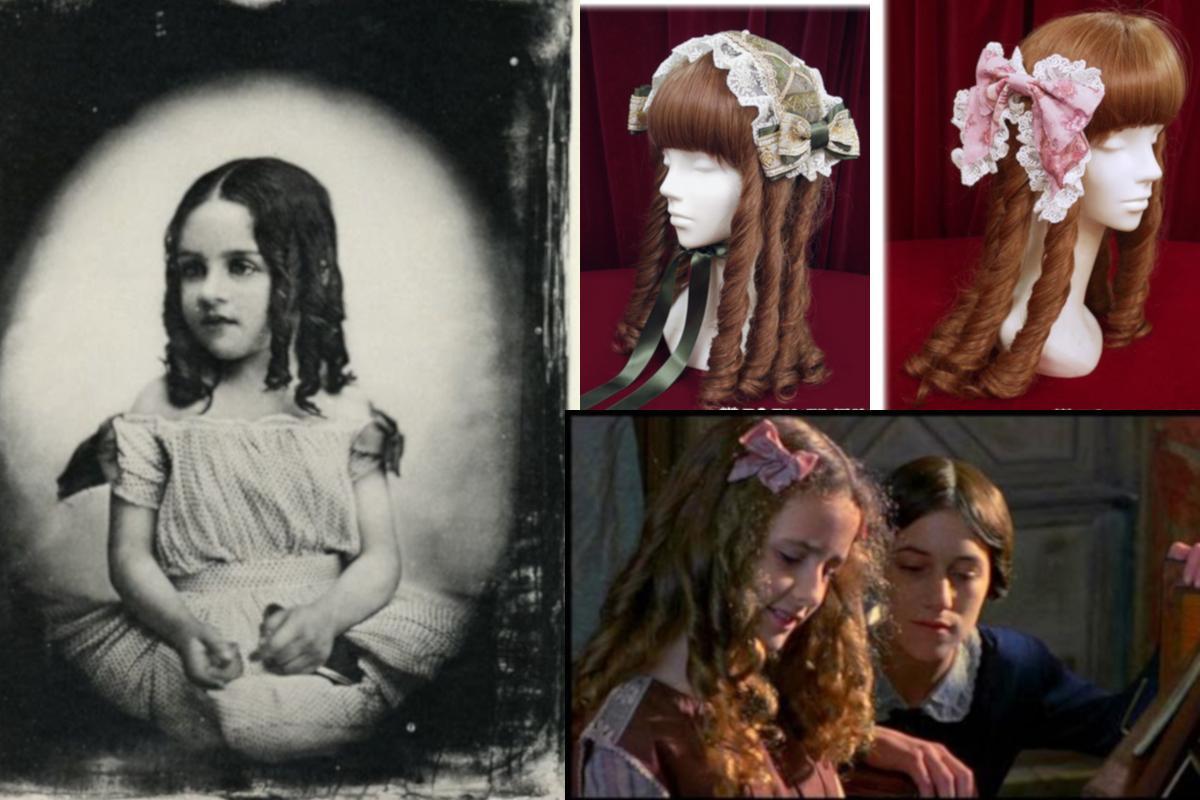
Hair
Lolita hairstyle have very little in common with the hairstyles that women wore throughout the Victorian era, but they have a lot in common with the hairstyles typically worn by little girls and teenager girls before they had their debutante balls and tied their hair up as a sign of maturity and accepting the new womanly phase in life. Lolita fashion has a taste for long hair, worn sometimes in pigtails but mostly in long silky ringlets that look just very similar to the way girls wore their hair in some old Victorian photos, and the way hair was styled for child roles in period dramas set in the Victorian era.
Bodice (Blouse)
In cases where the attire isn’t a one-piece dress but instead constitutes of a skirt separate from the bodice, a white blouse is a popular option, often decorated with subtle lace detailing, little bows or interesting collars. White blouses were often worn by Victorian women, mostly in the late Victorian era and well into the early twentieth century too.
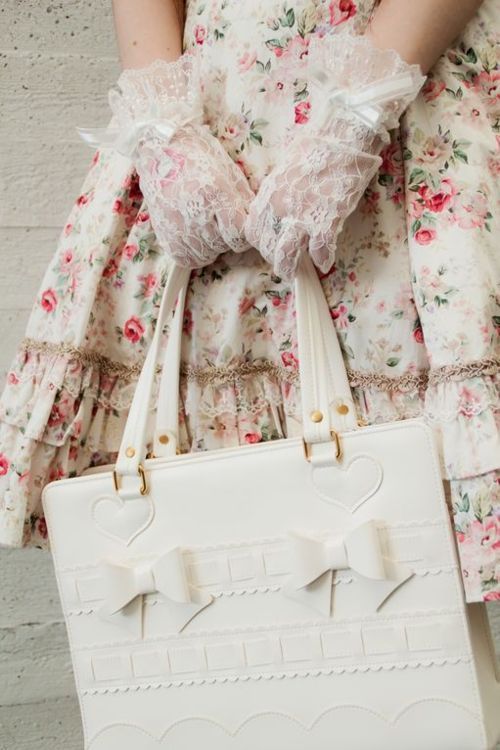
Gloves
And lastly, gloves or lace mittens, a staple piece of a respectable Victorian lady’s wardrobe, which sadly isn’t so fashionable anymore, but a Lolita, especially the Classic Lolita would never leave the house without them.
Friendship of Egon Schiele and Oskar Kokoschka, who were both remembered for being a thorn in the eye of the art scene in the late Art Nouveau and early Expressionism phase of Vienna, was merely an artistic one. They both soaked each others ideas and for a very short time created from the same wellspring of inspiration, only to move apart and drift into totally different directions.
 Egon Schiele, Mädchen mit übereinandergeschlagenen Beinen (Girl with crossed legs), 1911
Egon Schiele, Mädchen mit übereinandergeschlagenen Beinen (Girl with crossed legs), 1911
The very first thing you notice when gazing at Schiele’s portraits and nudes is their ‘elegantly wasted’ appeal mixed with some kind of twisted eroticism, smouldering melancholy and trashy glamour. There’s some subtle poetry of sadness about their worn out faces, tired eyes, sunken cheekbones, and their pale greyish skin. Completely nude, or dressed in lingerie and stockings, they gaze nervously, tiredly, forlornly at us; they provoke a response. Certain malaise pervades their smiles.
A true-blooded Expressionist, Oskar Kokoschka was the first to show interest in portraying the underprivileged, the poor, the misfits, but Egon Schiele soon followed his path, and they both worked and soaked inspiration in the gritty everyday reality of working class Vienna. Schiele’s drawings from 1910 and 1911 show resemblance to Kokoshka’s drawings from 1908 and 1909, but they are more poetical. In my view, Kokoshka’s drawings cannot even be compared to the power of his later paintings which are full of Expressionist frenzy, unsettling and distorted, painted in layers and layers of colour, as if every brushstroke brings relief. Below, you’ll see one of his drawing from this period which shows a half-nude girl. It slightly reminds me of Paul Gauguin’s way of portraying bodies, her face contour is strong, her body is kind of geometrical, overall she looks rough, stiff. This just shows that Schiele’s main method of expression was line, while in Kokoschka’s paintings colour plays a more important role. Kokoschka later even accused Schiele of ‘stealing’ his style.

Oskar Kokoschka, The juggler’s daughter, 1908, pencil, watercolour
But Schiele… Schiele’s drawings are like existentialist poems. He was an excellent draughtsman. Otto Benesh, son of Schiele’s patron Heinrich Benesh, wrote this of Schiele’s drawing technique: “Schiele drew quickly. The pencil skated over the white surface of the paper as though led by some ghostly hand… and he sometimes held the pencil in the manner of a painter from the Far East.” It’s also interesting to note that he never used an eraser; he rarely made mistakes, but when he did, he’d simply throw the paper away. And he sketched quickly, and then later, in the absence of the model, he’d fill in his drawings with watercolour or gouache.
 Egon Schiele, Seated Girl Facing Front 1911
Egon Schiele, Seated Girl Facing Front 1911
The beauty of his drawings is unsurpassed, even Klimt once admitted to him that he is better at drawing. His lines seem fragile and constricted, but their firm and controlled nature cannot be denied. Schiele employed the language of melancholy and lyricism, in a similar way to Modigliani, and used it to portray his own bewildering loneliness. In my view, all of his portraits, nudes, sunflowers and landscapes, express the same thing – melancholy, death, decay, they are windows into his soul and mind. This is just what Caspar David Friedrich said: “The artist should not only paint what he sees before him, but also what he sees in himself. If, however, he sees nothing within him, then he should also refrain from painting what he sees before him.” Schiele always paints what is within him.
When he chose to paint these poor girls from the streets, he did so because he saw through their sunken cheeks and sad eyes, his artistic vision penetrated through their souls. Kokoshka is interested only in their bodies, but Schiele wants to see the world through their eyes. Kokoschka was interested in their crooked postures and inelegance because it suited his distorted visions of the world, whereas in Schiele’s drawings you see the souls behind their tired little bodies. Pale, skinny, beaten and hungry, unnoticed till that moment, these street urchins, mostly girls, always ignored, pushed into the corner, out of the way, were brought into the spotlight all of a sudden, which undoubtedly made them feel special, privileged. Someone noticed them, someone was nice towards them, someone wanted to paint them!
 Egon Schiele, Girl with black hair, 1910
Egon Schiele, Girl with black hair, 1910
A sentence which sums it all, and which inspired me to write this post in the first place:
“Physically immature, thin, wide-eyed, full-mouthed, innocent and lascivious at the same time, these Lolitas from the proletarian districts of Vienna arouse the kind of thoughts best not admitted before a judge and jury.” (Egon Schiele, by Frank Whitford)
You’ll notice how awkward they look. Girl with black hair has a look of sadness and resignation in her eyes. For a while that has been one of my favourite of Schiele’s nudes because of the discord between her cute round face with large eyes and full lips, and the awkward skinny body with skin stretched taunt over the bones, and small breasts. She looks uncomfortable with being naked, she looks shy and hopelessly sad. My more recent favourite is the one below, Sitting girl with ponytail, again, I love her body and her skin tone, which Schiele obviously enjoyed painting. His nudes always look pale and sickly, but sometimes their skin has a greyish tone and sometimes it takes yellowish shades, but you’ll notice how he paints patches of unnatural shades of colour where they should not naturally be, like adding a bit of green, blue or brown on their bodies. And look at the face of this little proletarian Lolita – it resembles that of a sad and dreamy porcelain doll, eyes gazing in the distance, lips painted in rich red colour.
This is what Schiele’s friend Gütersloh wrote of these child models:
“There were always two or three small of large girls sitting about in his studio, brought there from the immediate neighbourhood, from off the street or picked up in the Schonbrunn park that was nearby. They were ugly and pretty, washed and unwashed and they did nothing – at least to the layman they might have seemed to do nothing… They slept, recovered from beatings administered by parents, lazily lounged about – something they were not allowed to do at home – combed their hair, pulled their dresses up or down, did or undid their shoes… like animals in a cage which suits them, they were left to their own devices, or at any rate believed themselves to be. (…) With the aid of little money and much charm he had managed to lull these little beasts into a false sense of security… They feared nothing from the sheet of paper which lay by Schiele on the divan.”
 Egon Schiele, Sitting girl with ponytail (Sitzendes Mädchen mit Pferdeschwanz), 1910
Egon Schiele, Sitting girl with ponytail (Sitzendes Mädchen mit Pferdeschwanz), 1910
I think Schiele’s pencil and brush could have captured the appearance of Sonia Marmeladova from Crime and Punishment to utter perfection. Sonia is a pale, skinny, meek, painfully shy but deeply religious eighteen year old girl, and a prostitute who somehow manages to transcend the misery of her surroundings and remain pure at heart. And she also falls in love with Raskolnikov. Don’t they make a splendid match: a killer and a harlot. This is how Dostoevsky describes Sonia in the book:
“She had a thin, very thin, pale face, rather irregular and angular, with a sharp little nose and chin. She could not have been called pretty, but her blue eyes were so clear, and when they lighted up, there was such a kindliness and simplicity in her expression that one could not help being attracted. Her face, and her whole figure indeed, had another peculiar characteristic. In spite of her eighteen years, she looked almost a little girl- almost a child.”
Sonia is one of my favourite literary heroines, and ever since I’ve read the book, I wondered what she looked like. Now I know that only Schiele could capture that irregular pale face, that fragile thin body, those big bright eyes. No doubt he would be attracted by her childlike figure, but would she dare to pose for him, as shy as she was? I don’t know, but maybe modelling would be better than prostitution. There’s a lot of descriptions of poverty in the book as well. Sonia’s little brothers and sisters, and her step-mother Katerina live in bad conditions; each has only one clothing garment, which Katerina washes every night, they are always hungry and frail, often ill. We can assume that the working class Vienna of Schiele’s time was no different, and that all these little innocent creatures that Schiele has painted with such zest probably lived similar lives. It was all very poignant to me. You just can’t read a book by Dostoevsky, close it, and not come out changed.

I must say that I have discovered some new and interesting things in March. First of all, Claude Debussy; his music is so calming and magical, it has the same effect on me as Monet’s paintings do. I’ve started by listening Debussy’s ‘Afternoon of a Faun’, then listened to Reverie, Nocturne, The Girl with the Flaxen Hair, Arabesque, Le Mer, and Sirenes; his melodies are simply enchanting, perfect for this springtime, along with Rimbaud’s poems, and Monet and Renoir’s paintings. I’ve also been listening to Oasis and The Stone Roses pretty much all the time, it’s irresistible! My other inspirations were Vincent van Gogh’s Letters, Britpop, Klimt, and films Shutter Island and Lolita (1962).
If you have never, you must listen to Rachmaninov’s ‘The Isle of the Dead’. It’s so melancholic and gloomy, typical for Rachmaninov’s work, and strangely morbid and intriguing at the same time, full of dark beauty.
I started reading Crime and Punishment five days ago, but I have about 150 pages left. Still, it is the most intriguing, the most touching book I’ve read in a while. The very thought of finishing the novel makes me insufferably sad.

I’m not a Lolita, but sometimes I indulge myself and wear cute, pink skirts with plenty of flounces and I often add cute elements to my daily attire. Besides the cuteness, one of my favourite things about Lolita fashion is its Victorian origins. In this post I’ll write about five elements of Victorian fashion in Lolita style.
1. Silhouette
Lolita dresses have a well known ‘cupcake’ shape, but the real shape of these skirts is basically a mini-crinoline. If you look at the late 1850s and 1860s dresses you’ll notice that the shape of the skirts with plenty of flounces and wide hemlines is really similar to skirts Lolitas wear. Of course, Lolita styled dresses are shorter, but they’re still knee-length and that was pretty much the length that little girls wore.
Shirts and collars worn by Classic Lolitas highly remind me of 1840s and early 1850s day dresses. I’m talking about a simple, white blouse with sleeves tight at the cuff and with neckline decorated with lace or flounces. Sleeves are sometimes decorated with ruffles at the shoulder and buttons can be heart shaped.
3. Cameos
Cameos are closely connected to shirts and that’s why they’re the next Victorian element. Just look at the two Old school Lolitas above; it’s almost like they’re shouting Victorian. Old school Lolita style is the eldest and it resembles Victorian fashion the most. Both of the Lolitas wear the shirts I’ve been talking about and they’re decorated with cameos. Cameos, worn throughout the whole Victorian era, instantly add antique touch to any attire. Chain watches are fairly similar accessorize and they can be worn instead.
4. Gloves
Lace gloves add an antique touch to any attire, but I have noticed that they’re mostly worn by Classic and Old School Lolitas, while Sweet Lolitas wear them rarely. I own a pair of lace gloves and they are the best thing ever. Nice decorations include ‘pearl’ rings or rings in shape of a rose, pearl bracelet with a Victorian miniature portrait or just any cute bracelet.
5. Headwear
Sweet Lolitas usually wear pink or baby blue bows but Classic and Old school Lolitas tend to wear more Victorian based head wear. Headdress is a typical Old school Lolita accessorize and it consists of a wide strip of fabric decorated with lace and bows and is tied under the chin. Headdress resembles Victorian girls head wear. Another popular option among Classic Lolitas is a bonnet in 1830s style decorated with lace, ribbons or roses.